ransomware
description: Program that locks files until a sum of money is paid
73 results
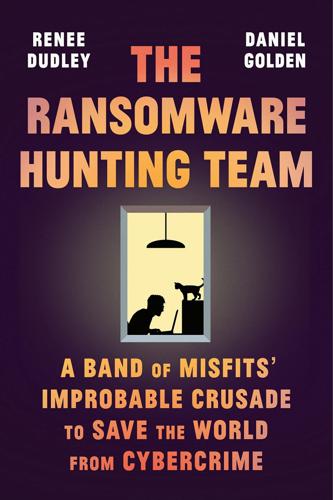
The Ransomware Hunting Team: A Band of Misfits' Improbable Crusade to Save the World From Cybercrime
by
Renee Dudley
and
Daniel Golden
Published 24 Oct 2022
See Renee Dudley, “The Extortion Economy: How Insurance Companies Are Fueling a Rise in Ransomware Attacks,” ProPublica, August 27, 2019, propublica.org/article/the-extortion-economy-how-insurance-companies-are-fueling-a-rise-in-ransomware-attacks. with 775 ransomware incidents: Information about Beazley comes from a panel discussion on Day 2 of the FBI Cyber Division Ransomware Summit, September 2020. as many as six: Renee Dudley, “Like Voldemort, Ransomware Is Too Scary to Be Named,” ProPublica, December 23, 2019, propublica.org/article/like-voldemort-ransomware-is-too-scary-to-be-named. “far fetched”: “Ransomware Sentiment After a Summer of Headlines,” Coveware, October 8, 2019, coveware.com/blog/ransomware-debate-rages-on.
…
Pentagon PGA of America Phelps, Mark Phelps, Ron Phelps, Shawn Dillard phishing Phobos Pierce, Chris Pinhasi, Zohar pirated software Pistole, John Plutarch Polyanin, Yevgeniy Popp, Joseph Popp’s Concordance to Darwin’s On the Origin of Species (Popp) Popular Evolution (Popp) presidential election of 2020 prime numbers private keys ProPublica ProtonMail Proven Data Recovery pseudorandom number generators public keys Pugh, Catherine Putin, Vladimir Quanta Computer Radamant Ragnar Locker random numbers RansomNoteCleaner ransomware ransomware-as-a-service ransomware gangs Ransomware Hunting Team; formation of ransomware insurance ransomware negotiation and payment Ransomware Summits Rapid Recorded Future Reedy River oil spill REvil Ripley, Terri Rivero López, Marc Rivest, Ron Rivlin, Geoffrey RobbinHood RSA Ruppersberger, C. A. “Dutch” Russia; Ukraine invaded by Ryan, Christine Ryuk SAC Capital Advisors Safford, Ariz.
…
Garmin: Sergiu Gatlan, “Garmin Outage Caused by Confirmed WastedLocker Ransomware Attack,” BleepingComputer, July 24, 2020, bleepingcomputer.com/news/security/garmin-outage-caused-by-confirmed-wastedlocker-ransomware-attack/. “Now that Macaw Locker”: Lawrence Abrams, “Evil Corp Demands $40 Million in New Macaw Ransomware Attacks,” BleepingComputer, October 21, 2021, bleepingcomputer.com/news/security/evil-corp-demands-40-million-in-new-macaw-ransomware-attacks/. BleepingComputer’s domain name: Lawrence Abrams, “Maze Ransomware Says Computer Type Determines Ransom Amount,” BleepingComputer, May 31, 2019, bleepingcomputer.com/news/security/maze-ransomware-says-computer-type-determines-ransom-amount/.
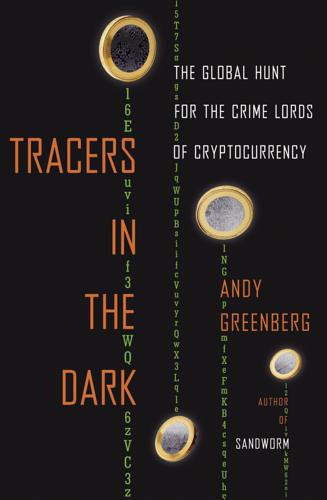
Tracers in the Dark: The Global Hunt for the Crime Lords of Cryptocurrency
by
Andy Greenberg
Published 15 Nov 2022
Yet at the same time, neither Chainalysis nor any other blockchain analysis firm seemed able to solve the growing ransomware epidemic. The company could point to occasional wins: In the case of the ransomware group NetWalker, Chainalysis had helped the FBI trace and seize half a million dollars of ransoms. The bureau had arrested a Canadian man who worked as one of NetWalker’s “affiliates”—a kind of partner who rents and deploys its ransomware in exchange for a cut of profits. But a single half-million-dollar seizure and one arrest represented only the tiniest disruption of the nine-figure annual ransomware economy. In fact, Gronager himself conceded that Chainalysis has no silver bullet for ransomware investigations.
…
The blockchain analysis firm Elliptic, a Chainalysis competitor, quickly published a blog post that showed how Colonial’s extortion payoff had been collected in a wallet that had already received fifty-seven other payments over just the previous two months, all presumably the fruits of DarkSide’s ransomware. In fact, another $4.4 million payment from the German chemical firm Brenntag—another DarkSide ransomware victim—had gone into the same wallet just days after Colonial’s. In all, the wallet had amassed $17.5 million. And it was only one of several such caches of payoffs tied to a single group, which was itself merely one out of dozens of ransomware gangs. Just days after Colonial and Brenntag, it was revealed that the insurance company CNA Financial had paid a staggering $40 million to another cybercriminal group called Phoenix CryptoLocker that was holding its IT systems hostage.
…
Just days after Colonial and Brenntag, it was revealed that the insurance company CNA Financial had paid a staggering $40 million to another cybercriminal group called Phoenix CryptoLocker that was holding its IT systems hostage. Chainalysis, too, was tracking the ransomware economy as it exploded beyond a silent, digital epidemic into a full-blown—if sporadic and unevenly distributed—societal crisis. In 2020, Chainalysis’s staff had tracked no less than $350 million in total ransomware payments. Ransomware payouts in 2021 looked to be on pace to break that record. And even as companies like Chainalysis and Elliptic followed the path of those ransoms, often in exacting detail, the scourge was only growing.

This Is How They Tell Me the World Ends: The Cyberweapons Arms Race
by
Nicole Perlroth
Published 9 Feb 2021
For an early account, see Kaspersky, “More than 75 Percent of Crypto Ransomware in 2016 Came from Russian-Speaking Cybercriminal Underground,” February 14, 2017, usa.kaspersky.com/about/press-releases/2017_more-than-75-of-crypto-ransomware-in-2016-came-from-the-russian-speaking-cybercriminal-underground. Of note, Russian ransomware authors behind the “Sigrun” Ransomware family offered to decrypt data belonging to Russian Victims for free. Alex Svirid, a security researcher, first tweeted this observation in May 31, 2018. A Malwarebytes security researcher replied with emails between a Russian ransomware author and two victims—one in the United States, the other in Russia—proving Svirid’s point. See Lawrence Abrams, “Sigrun Ransomware Author Decrypting Russian Victims for Free,” Bleeping Computer, June 1, 2018.
…
For a technical analysis of how ransomware authors search for and avoid computers with Russian keyboards, see SecureWorks, Revil Sodinokibi Ransomware. For a contemporaneous account, I relied on interviews with researchers at CrowdStrike in 2019 and 2020. For data on ransomware payouts, I found estimates varied widely. An FBI analysis of Bitcoin wallets and ransom notes found that between October 2013 and November 2019, $144,350,000 was paid in Bitcoins to ransomware authors. That was the conservative estimate. In 2020, an Emsisoft analysis of some 450,000 incidents projected that ransomware demands could exceed $1.4 billion in 2020 in the United States alone.
…
As for the total cost to businesses—ransom payout plus downtime—Emsisoft estimated the total cost of ransomware attacks in the U.S. exceeded $9 billion. See Emsisoft, “Report: Cost of Ransomware in 2020. A Country-by-Country Analysis,” February 11, 2020. For a fascinating account of the rise in ransomware payouts and attacks, and the role of the cyber insurance industry in encouraging victims to pay up, see Renee Dudley, “The Extortion Economy: How Insurance Companies are Fueling the Rise in Ransomware Attacks,” ProPublica, August 27, 2019. The suspected links between the ransomware hitting American towns and cities and threats to U.S. election infrastructure is based on more than a dozen interviews I conducted with American officials and private researchers throughout 2019 and 2020.

Attack of the 50 Foot Blockchain: Bitcoin, Blockchain, Ethereum & Smart Contracts
by
David Gerard
Published 23 Jul 2017
Later payment schemes included e-Gold or Liberty Reserve, premium rate SMS messages or international phone calls, or buying particular medicines on a particular website.205 The 2011 “police virus” pretended to be from the local police force and demanded payment by credit card.206 The 2013 “FBI MoneyPak” ransomware demanded payment via online money transfer services MoneyPak or Ukash. CryptoLocker, the first ransomware to use Bitcoin (though you could also pay by Moneypak or Ukash), showed up in September 2013. It was hugely successful, taking about $3 million, and spawned many imitators. Security professionals I spoke to say that the reason for the explosion in ransomware from about 2015 on is not Bitcoin (as media reports often claim), but the ready availability of ransomware builders in malware kits from the hacker underground since that time – so that any script-kiddie can use a kit to make their own ransomware.
…
[206] “Why the police virus was so effective”. PC Advisor, 26 February 2013. [207] “New Ransomware Study Explores ‘Customer Journey’ of Getting Your Files Back”. F-Secure, 18 July 2016. [208] “Ransomware risk could cripple British businesses with many not ready, while others stockpiling bitcoins to pay up”. Citrix (press release), June 2016. [209] Chris Mayers. “Ransomware in the UK: One year on”. Citrix blog, 6 June 2017. Citrix give the questions and sample selection criteria in the comments. [210] “Incidents of Ransomware on the Rise: Protect Yourself and Your Organization”. FBI, 29 April 2016.
…
In May 2017, AlphaBay, the largest darknet market, started offering Ethereum as an option204 – because Bitcoin was failing to serve its primary consumer use case. Ransomware Ransomware combines computer malware, encryption and anonymous payment systems. Malicious software spreads through email spam or exploiting computer security holes; it encrypts the files on your Windows PC and any shared folders it can access, and a message pops up telling you to send Bitcoins to the hacker’s address (usually an address per victim) to get the key to unlock your system before the deadline of a few days. Bitcoin is now the payment channel of choice, but ransomware existed for decades before Bitcoin. The first extortion malware was the “AIDS Trojan” or “PC Cyborg Trojan” in 1989, which would hide in the AUTOEXEC.BAT file on a DOS PC and, the ninetieth time it was run, encrypt all filenames on the disk and demand you send $189 to a post office box in Panama.

Click Here to Kill Everybody: Security and Survival in a Hyper-Connected World
by
Bruce Schneier
Published 3 Sep 2018
docid=2010-071400-3123-99. 71In 2017, the global shipping giant Maersk: Iain Thomson (28 Jun 2017), “Everything you need to know about the Petya, er, NotPetya nasty trashing PCs worldwide,” Register, https://www.theregister.co.uk/2017/06/28/petya_notpetya_ransomware. Josh Fruhlinger (17 Oct 2017), “Petya ransomware and NotPetya: What you need to know now,” CSO, https://www.csoonline.com/article/3233210/ransomware/petya-ransomware-and-notpetya-malware-what-you-need-to-know-now.html. Nicholas Weaver (28 Jun 2017), “Thoughts on the NotPetya ransomware attack,” Lawfare, https://lawfareblog.com/thoughts-notpetya-ransomware-attack. Ellen Nakashima (12 Jan 2018), “Russian military was behind ‘Notpetya’ cyberattack in Ukraine, CIA concludes,” Washington Post, https://www.washingtonpost.com/world/national-security/russian-military-was-behind-notpetya-cyberattack-in-ukraine-cia-concludes/2018/01/12/048d8506-f7ca-11e7-b34a-b85626af34ef_story.html. 71when Iran attacked the Saudi: Nicole Perlroth (23 Oct 2012), “In cyberattack on Saudi firm, U.S. sees Iran firing back,” New York Times, http://www.nytimes.com/2012/10/24/business/global/cyberattack-on-saudi-oil-firm-disquiets-us.html. 71when North Korea used WannaCry: David E.
…
journalCode=isec. 73“I think both China and the United States”: Gideon Rachman (5 Jan 2017), “Axis of power,” New World, BBC Radio 4, http://www.bbc.co.uk/programmes/b086tfbh. 73“We have better cyber rocks to throw”: This quote is attributed to several people, but this is the earliest citation I could find: Fred Kaplan (12 Dec 2016), “How the U.S. could respond to Russia’s hacking,” Slate, http://www.slate.com/articles/news_and_politics/war_stories/2016/12/the_u_s_response_to_russia_s_hacking_has_consequences_for_the_future_of.html. 74In early 2018, the Indiana hospital Hancock Health: Charlie Osborne (17 Jan 2018), “US hospital pays $55,000 to hackers after ransomware attack,” ZDNet, http://www.zdnet.com/article/us-hospital-pays-55000-to-ransomware-operators. 74Ransomware is increasingly common: Brian Krebs (16 Sep 2016), “Ransomware getting more targeted, expensive,” Krebs on Security, https://krebsonsecurity.com/2016/09/ransomware-getting-more-targeted-expensive. 74Kaspersky Lab reported: Kaspersky Lab (28 Nov 2016), “Story of the year: The ransomware revolution,” Kaspersky Security Bulletin 2016, https://media.kaspersky.com/en/business-security/kaspersky-story-of-the-year-ransomware-revolution.pdf. 74Symantec found that average ransom amounts: Symantec Corporation (19 Jul 2016), “Ransomware and businesses 2016,” https://www.symantec.com/content/en/us/enterprise/media/security_response/whitepapers/ISTR2016_Ransomware_and_Businesses.pdf.
…
Ars Technica, https://arstechnica.com/information-technology/2014/01/is-your-refrigerator-really-part-of-a-massive-spam-sending-botnet. 76Attackers have bricked IoT devices: Pierluigi Paganini (12 Apr 2017), “The rise of the IoT botnet: Beyond the Mirai bot,” InfoSec Institute, http://resources.infosecinstitute.com/rise-iot-botnet-beyond-mirai-bot. 76Dick Cheney’s heart defibrillator: Dana Ford (24 Aug 2013), “Cheney’s defibrillator was modified to prevent hacking,” CNN, http://www.cnn.com/2013/10/20/us/dick-cheney-gupta-interview/index.html. 76In 2017, a man sent a tweet: David Kravets (17 Mar 2017), “Man accused of sending a seizure-inducing tweet charged with cyberstalking,” Ars Technica, https://arstechnica.com/tech-policy/2017/03/man-arrested-for-allegedly-sending-newsweek-writer-a-seizure-inducing-tweet. 77Also in 2017, WikiLeaks published information: Steve Overly (8 Mar 2017), “What we know about car hacking, the CIA and those WikiLeaks claims,” Washington Post, https://www.washingtonpost.com/news/innovations/wp/2017/03/08/what-we-know-about-car-hacking-the-cia-and-those-wikileaks-claims. 77Hackers have demonstrated ransomware: Lorenzo Franceschi-Bicchierai (7 Aug 2016), “Hackers make the first-ever ransomware for smart thermostats,” Vice Motherboard, https://motherboard.vice.com/en_us/article/aekj9j/Internet-of-things-ransomware-smart-thermostat. 77In 2017, an Austrian hotel: David Z. Morris (29 Jan 2017), “Hackers hijack hotel’s smart locks, demand ransom,” Fortune, http://fortune.com/2017/01/29/hackers-hijack-hotels-smart-locks. 77In 2017, the NotPetya ransomware: Russell Brandom (12 May 2017), “UK hospitals hit with massive ransomware attack,” Verge, https://www.theverge.com/2017/5/12/15630354/nhs-hospitals-ransomware-hack-wannacry-bitcoin.
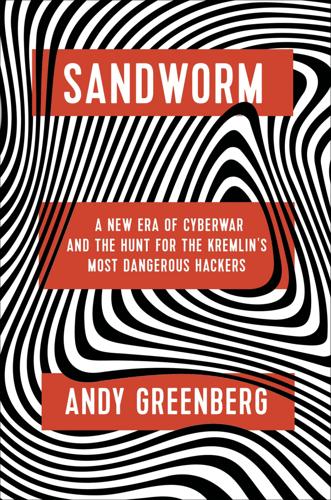
Sandworm: A New Era of Cyberwar and the Hunt for the Kremlin's Most Dangerous Hackers
by
Andy Greenberg
Published 5 Nov 2019
Hutchins reacted in a way that perhaps no one ever before in history has reacted to seeing his computer paralyzed with ransomware: He leaped up from his chair and jumped around his bedroom, overtaken with joy. * * * ■ The goal of WannaCry’s creators remains a mystery. Were they seeking to make as much money as possible from their supercharged ransomware scheme? Or merely to inflict maximal global chaos? Either way, building a kill switch into their malware seemed like a strangely sloppy act of self-sabotage.*1 The WannaCry programmers had been careless in other ways, too. The payment mechanism built into their code was, effectively, useless: Unlike better-designed ransomware, WannaCry had no automated system for distributing decryption keys to victims who had paid, or even keeping track of who had paid and who hadn’t.
…
Researchers at Kaspersky noted that the new malware’s code somewhat resembled a piece of criminal ransomware called Petya that had been circulating since early 2016. Like that older ransomware, when this specimen infected a new machine, it immediately set about encrypting the computer’s so-called master file table—the part of a computer’s operating system that keeps track of the location of data in storage. It also encrypted every file on the machine individually; the effect was like a vandal who first puts a library’s card catalog through a shredder, then moves on to methodically pulp its books, stack by stack. But the new ransomware was distinguished from that earlier criminal code by crucial modifications—hence its name.
…
Researchers were calling the new ransomware WannaCry: Jakub Křoustek, “WannaCry Ransomware That Infected Telefonica and NHS Hospitals Is Spreading Aggressively, with over 50,000 Attacks So Far Today,” Avast (blog), May 12, 2017, blog.avast.com, archived at bit.ly/2FXxbRz. Thousands of people had their doctors’: Amyas Morse, “Investigation: WannaCry Cyber Attack and the NHS,” U.K. National Audit Office, Oct. 24, 2017, www.nao.org.uk. The Spanish telecommunications firm: Agamoni Ghosh and India Ashok, “WannaCry: List of Major Companies and Networks Hit by Ransomware Around the Globe,” International Business Times, May 16, 2017, www.ibtimes.co.uk.
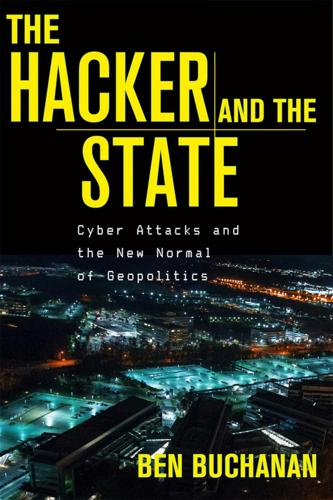
The Hacker and the State: Cyber Attacks and the New Normal of Geopolitics
by
Ben Buchanan
Published 25 Feb 2020
In effect, by registering the domain name, Hutchins had activated a secret and likely unintentional kill switch that stopped the worm’s spread.28 As a result, the North Koreans’ first major ransomware experiment—from premature spread to ignominious end—inflicted at least $4 billion in damages but ultimately brought in only a pittance for the regime.29 This initial failure did not keep the North Koreans down for long or deter them from using ransomware in the future. By October 2017, they were ready to try again. This time, their plan was different: they would deploy ransomware not to get money directly, but instead as cover for an operation like the one they performed in Bangladesh.
…
For a good technical analysis of NotPetya, see Anton Cherepanov, “Analysis of TeleBots’ Cunning Backdoor,” ESET, July 4, 2017; David Maynor, Aleksandar Nikolic, Matt Olney, and Yves Younan, “The MeDoc Connection,” Threatsource [Cisco Talos newsletter], July 5, 2017; Microsoft Defender ATP Research Team, “New Ransomware, Old Techniques: Petya Adds Worm Capabilities,” Microsoft Security blog, June 27, 2017; Karan Sood and Shaun Hurley, “NotPetya Technical Analysis—A Triple Threat: File Encryption, MFT Encryption, Credential Theft,” CrowdStrike, June 29, 2017; Symantic Security Response, “Petya Ransomware Outbreak: Here’s What You Need to Know,” Symantec blog, October 24, 2017. 9. It did not launch this attack if antivirus from Symantec, Norton, or Kaspersky was present. Microsoft Defender ATP Research Team, “New Ransomware, Old Techniques: Petya Adds Worm Capabilities,” 8–9. 10.
…
While traditionally spies would have sought to copy the data stored within big organizations, like many modern profit-motivated criminals, the North Koreans were not after secrets. They instead deployed a technique known as ransomware, in which hackers encrypt the hard drive of their target computer and delete any backups. The decryption key remains unknown to the target. If the target does not have a surviving backup of the data, the only way to recover the information is to pay the hackers a ransom in return for the decryption key. Given the value of the data, institutions are often willing to do this. In February of 2017, North Korean hackers started testing the early stages of their new ransomware. They infected a single organization, still unknown, in which the code spread quickly to around a hundred computers.
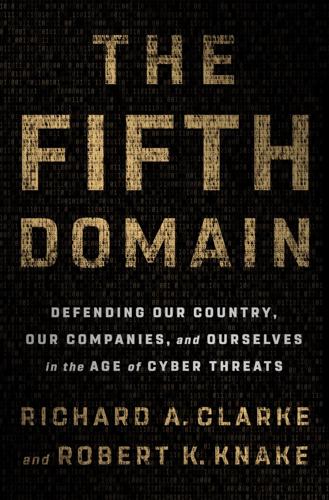
The Fifth Domain: Defending Our Country, Our Companies, and Ourselves in the Age of Cyber Threats
by
Richard A. Clarke
and
Robert K. Knake
Published 15 Jul 2019
Although Bitcoin was supposed to be a safe way of doing business because it involved a publicly viewable blockchain record, it has actually turned out to be easy to use it to hide money flows. Bitcoin is the coin of the realm when it comes to ransomware, allegedly very difficult to trace. Faramarz Savandi and Mohammad Mansouri knew how to do it. The two Iranians wrote their own version of ransomware software and it became known as the SamSam kit. The two men hit about two hundred networks in the United States over two years and collected more than $6 million in Bitcoin. The damage that their ransomware did to networks was estimated at $30 million. Among their victims were numerous hospitals and medical facilities (MedStar Georgetown, Kansas Heart Hospital, Hollywood Presbyterian, LabCorps), and city governments and agencies (Atlanta, Newark, the Port of San Diego).
…
Andy Ozment, a former White House and Homeland Security official, has provocatively proposed that ransomware may be one of the more useful regulatory mechanisms we’ve got, essentially imposing fines on companies that have not invested in basic cybersecurity. It is a compelling argument, but we think it is time to remove the incentive for cyber criminals to use ransomware by having a government law or regulation that bans paying the ransom or institutes a fine in addition to whatever ransom is paid. Ransomware is funneling billions of dollars to the underground economy. As DEF CON cofounder Jeff Moss has pointed out, even if most of those billions of dollars go to buying Maseratis and leather jackets in Moscow suburbs, the remaining millions are going to buying more and better capabilities, expanding teams, and attracting more criminal groups to the business.
…
If a hacker’s goal is to steal information, hold a company’s data hostage for payment (ransomware), permanently delete all the software from the devices on a network (wiper), or flood a network to the point where it cannot operate (a distributed denial-of-service attack, or DDoS), the cost of such an attack against a poorly defended network is shockingly low. Indeed, there are websites on the so-called dark web where hackers sell those attack tools. Remote access tools (RATs) can sell for as little as five hundred dollars. A kit to engage in ransomware could be available for a thousand dollars. These tools will likely not get you into the network of Bank of America or Citibank, but most networks are less well defended than they are.
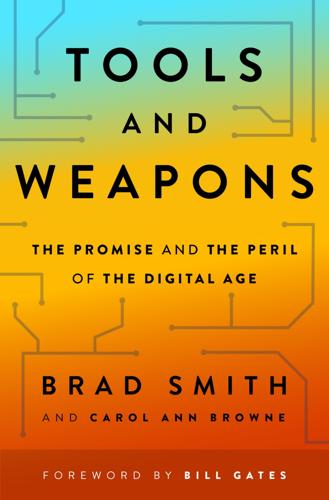
Tools and Weapons: The Promise and the Peril of the Digital Age
by
Brad Smith
and
Carol Ann Browne
Published 9 Sep 2019
What if WannaCry’s designers wanted to ensure that they could turn off the malware before Monday morning, so they could avoid causing too much disruption in China or North Korea itself? Finally, there was something fishy about the ransomware message and approach used by WannaCry. As our security experts noted, North Korea had used ransomware before, but their tradecraft had been different. They had selected high-value targets such as banks and demanded large sums of money in a discreet way. Indiscriminate demands to pay three hundred dollars to unlock a machine represented a departure, to say the least. What if the whole ransomware approach was just a cover to throw the press and public off the real message, which was intended to be more discreetly understood by US and allied officials?
…
Back to note reference 2. Kim Zetter, “Sony Got Hacked Hard: What We Know and Don’t Know So Far,” Wired, December 3, 2014, https://www.wired.com/2014/12/sony-hack-what-we-know/. Back to note reference 3. Bill Chappell, “WannaCry Ransomware: What We Know Monday,” NPR, May 15, 2017, https://www.npr.org/sections/thetwo-way/2017/05/15/528451534/wannacry-ransomware-what-we-know-monday. Back to note reference 4. Nicole Perlroth and David E. Sanger, “Hackers Hit Dozens of Countries Exploiting Stolen N.S.A. Tool,” New York Times, May 12, 2017, https://www.nytimes.com/2017/05/12/world/europe/uk-national-health-service-cyberattack.html.
…
Broad, “North Korean Missile Launch Fails, and a Show of Strength Fizzles,” New York Times, April 15, 2017, https://www.nytimes.com/2017/04/15/world/asia/north-korea-missiles-pyongyang-kim-jong-un.html. Back to note reference 9. Lily Hay Newman, “How an Accidental ‘Kill Switch’ Slowed Friday’s Massive Ransomware Attack,” Wired, May 13, 2017, https://www.wired.com/2017/05/accidental-kill-switch-slowed-fridays-massive-ransomware-attack/. Back to note reference 10. Andy Greenberg, “The Untold Story of NotPetya, the Most Devastating Cyberattack in History,” Wired, August 22, 2018, https://www.wired.com/story/notpetya-cyberattack-ukraine-russia-code-crashed-the-world/.
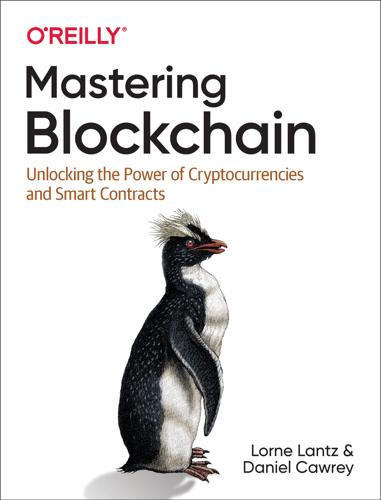
Mastering Blockchain: Unlocking the Power of Cryptocurrencies and Smart Contracts
by
Lorne Lantz
and
Daniel Cawrey
Published 8 Dec 2020
After changing Coburn’s DNS settings and putting up a clone EtherDelta site, the hackers were able to steal at least $800,000 worth of cryptocurrency from one user. CryptoLocker and Ransomware CryptoLocker was an early and well-known variant of what is known as ransomware. Launched in 2013, this attack targeted Windows computers and spread via email attachments. It contained a Trojan virus that would lock up the user’s files using cryptography. In order to release the files, CryptoLocker demanded payment via vouchers or bitcoin. It infected over 250,000 computers and demanded an average payout of $300. Tracing Bitcoin addresses shows that CryptoLocker has been able to obtain millions from locked-out users. Ransomware has spread and proliferated since.
…
Byzantine agreement, Other Concepts for Consensus Byzantine fault-tolerant agreement, RippleHotStuff algorithm, Borrowing from Existing Blockchains C Cardano, Blockchains to Watch Casper algorithm (proof-of-stake), Ethereum Scaling CCXT (CryptoCurrency eXchange Trading Library), Open Source Trading Tech cell phone porting attacks, Security Fundamentals central bank digital currencies (CBDCs), Central Bank Digital Currencies centralizationcaused by proof-of-work consensus on Bitcoin, Ripple and Stellar decentralization versus, Decentralization Versus Centralization distributed versus centralized versus decentralized systems, Distributed Versus Centralized Versus Decentralized-Bitcoin Predecessors Libra's centralization challenge, Novi centralized exchanges, Decentralized Exchange Contracts, The Role of Exchanges, Jurisdictiondecentralized exchanges versus, Decentralized Versus Centralized Exchanges-Scalabilitycustody and counterparty risk, Custody and counterparty risk exchange rate, Exchange rate infrastructure, Infrastructure Know Your Customer (KYC) rules, Know your customer scalability, Scalability token listing, Token listing infrastructure differences from decentralized exchanges, Decentralized Exchange Contracts CFTC (Commodity Futures Trading Commission), FinCEN Guidance and the Beginning of Regulation Chainalysis, Analytics channels (Lightning), Lightning Chaum, David, DigiCash Chia, Alternative methods Chicago Mercantile Exchange (CME), partnership with Royal Mint, The Royal Mint China, central bank cryptocurrency, China Coburn, Zachary, Skirting the Laws Coin ATM Radar website, Evolution of the Price of Bitcoin Coinbase, Wallet Types: Custodial Versus Noncustodial, Custody Coinbase Pro, ExchangesAPI example, BTC/USD ticker call, Exchange APIs and Trading Bots arbitrage trading on, Arbitrage Trading-Float Configuration 3 custody solutions, robust, Counterparty Risk example order book, Slippage coinbase transaction, Storing Data in a Chain of Blocks, The Coinbase TransactionBitcoin Genesis block, Achieving Consensus Coincheck, Coincheck CoinDesk, Information coins, DigiCash Coinye, More Altcoin Experiments cold storage wallets, Counterparty Risk cold wallets, Wallet Type Variations collisions, cryptographic hashes and, Hashes colored coins, NXT, Colored Coins and Tokens Commodity Exchange Act (CEA), Wash Trading Commodity Futures Trading Commission (CFTC), FinCEN Guidance and the Beginning of Regulation conferences on blockchain industry, Information confidential assets, Liquid confirmations, Confirmations confirmed transactions, Transactionsconfirmed by miner, Transaction life cycle confirmed by network on Bitcoin, Transaction life cycle consensus, Consensus-Alternative methodsAvalanche mechanism, Avalanche in Bitcoin network, Compelling Components-Generating transactions Corda, Corda consensus in decentralized systems, Distributed Versus Centralized Versus Decentralized Libra mechanism for, Borrowing from Existing Blockchains, How the Libra Protocol Works other concepts for, Other Concepts for Consensus proof-of-stake, Proof-of-Stake-Proof-of-Stake proof-of-work, Proof-of-Work-Confirmationsblock discovery, Block discovery confirmations by miners of block to include in blockchain, Confirmations mining process on Bitcoin, The mining process transaction life cycle, Transaction life cycle SCP protocol, Stellar XRP Consensus Protocol, Ripple ConsenSys, ConsenSysTruffle Suite tools for smart contracts, Authoring a smart contract contentious hard forks, Understanding Forks-Replay attacksreplay attacks vulnerability, Replay attacks Corda, Corda-Corda languageconsensus, Corda consensus how it works, How Corda works ledger, Corda ledger network, The Corda network programming language, Corda language Counterparty blockchain, Counterparty counterparty risk, Counterparty Riskon centralized versus decentralized exchanges, Custody and counterparty risk reduced, on decentralized exchanges, Decentralized Exchange Contracts cross-shard communication complexity, Other Altchain Solutions crypto laundering, The Evolution of Crypto Laundering-The Evolution of Crypto Launderinghow funds are laundered, The Evolution of Crypto Laundering cryptocurrencies, Cryptocurrency Fundamentals-Summaryadditional, Mastercoin introducing notion of, Mastercoin and Smart Contracts backing DAI multi-collateral token, DAI and blockchain, leading to new platforms for the web, Web 3.0 blockchain systems and unit of account, Storing Data in a Chain of Blocks consensus, Consensus-Alternative methodsother concepts for, Other Concepts for Consensus proof-of-stake, Proof-of-Stake-Proof-of-Stake proof-of-work, Proof-of-Work-Confirmations cryptographic hashes, Hashes-Custody: Who Holds the Keys custody, Custody: Who Holds the Keys-Security Fundamentals ICOs or fundraising for projects, Use Cases: ICOs illegal uses of, Catch Me If You Can methods of buying and selling, Evolution of the Price of Bitcoin mining, Mining-Block Generation privacy-focused, Privacy-Focused Cryptocurrencies public and private keys in systems, Public and Private Keys in Cryptocurrency Systems-Public and Private Keys in Cryptocurrency Systems regulatory bodies in the US, FinCEN Guidance and the Beginning of Regulation security, Security Fundamentals-Recovery Seed stablecoins based on, Crypto-Based Stablecoins-Tether stakeholders in ecosystem, Stakeholders-Informationanalytics services, Analytics brokerages, Brokerages custody solutions, Custody exchanges, Exchanges information services, Information theft from ownersexchange hacks, Exchange Hacks-NiceHash other hacks, Other Hacks-Summary transactions in, Transactions-Bitcoin Transaction Security UTXO model for Bitcoin transactions, The UTXO Model-The UTXO Model cryptocurrency ATMs, Evolution of the Price of Bitcoin CryptoCurrency eXchange Trading Library (CCXT), Open Source Trading Tech cryptographyBitcoin's use on transactions, Introducing the Timestamp Server cryptographic hashes, Hashes-Custody: Who Holds the Keys ECDSA encryption, signing and verifying transactions, Signing and Validating Transactions enabling proof-of-work on Hashcash, Hashcash public/private key, Bitcoin's use of, Public/private key cryptography-Generating keys use by DigiCash, DigiCash CryptoKitties, ERC-721-ERC-777causing scaling problems on Ethereum, Challenges in Developing Dapps digital cats as nonfungible tokens, Fungible and Nonfungible Tokens CryptoLocker and ransomware, CryptoLocker and Ransomware CryptoNote protocol, Monero currencies, exchanges for, Exchanges(see also exchanges) custodial wallets, Wallet Types: Custodial Versus Noncustodial(see also wallets) custody, Custody: Who Holds the Keys-Security Fundamentalscounterparty risk with exchanges, Counterparty Risk, Custody and counterparty risk crypto custody solutions, Custody custody providers, Counterparty Risk cyberbucks, DigiCash D DAGs (directed acyclic graphs), DAGs DAI stablecoin, DAIsavings rates for, Savings Dai, Wei, B-Money DAML, DAML DAOs (decentralized autonomous organizations), Decentralized Autonomous Organizations-Other Ethereum forks, Important DefinitionsThe DAO project on Ethereum, Initial Coin Offerings dapps (see decentralized applications) Dash, Dash database management systems (DBMSs), Databases and Ledgers databasesbackend/database differences between centralized exchanges and Uniswap, Infrastructure and ledgers, Databases and Ledgers decentralizationversus centralization, Decentralization Versus Centralization decentralizing the web, Web 3.0 distributed versus centralized versus decentralized systems, Distributed Versus Centralized Versus Decentralized-Bitcoin Predecessors decentralized applications (dapps), Ether and Gas, Decentralized Applications (Dapps)-Challenges in Developing Dappsbuilding decentralized web frameworks, Web 3.0 challenges in developing, Challenges in Developing Dapps Corda, Corda language running on top of a blockchain, Deploying and Executing Smart Contracts in Ethereum use cases, Use Cases decentralized autonomous organizations (DAOs), Decentralized Autonomous Organizations-Other Ethereum forks, Important DefinitionsThe DAO project on Ethereum, Initial Coin Offerings decentralized exchange contracts, Decentralized Exchange Contracts-Summary decentralized exchanges, The Role of Exchanges, Decentralized Exchanges-Scalabilityversus centralized exchanges, Decentralized Versus Centralized Exchanges-Scalabilitycustody and counterparty risk, Custody and counterparty risk exchange rate, Exchange rate infrastructure, Infrastructure Know Your Customer (KYC) rules, Know your customer scalability, Scalability token listing, Token listing decentralized finance (DeFi), Decentralizing Finance and the Web-Derivativesflash loans, Flash Loans-The Fulcrum Exploitcreating the flash loan smart contract, Creating a Flash Loan Contract-Deploying the Contract deploying the contract, Deploying the Contract executing a loan, Executing a Flash Loan-Executing a Flash Loan Fulcrum attack, The Fulcrum Exploit important definitions, Important Definitions privacy and information security, Privacy-Ring Signaturesring signatures, Ring Signatures Zcash, Zcash zero-knowledge proof, Zero-Knowledge Proof zk-SNARKs, zk-SNARKs redistribution of trust, Redistribution of Trust-Naming Servicesidentity and dangers of hacking, Identity and the Dangers of Hacking naming services, Naming Services services, DeFi Services-Derivativesderivatives, Derivatives lending, Lending savings, Savings stablecoins, Stablecoins-KYC and pseudonymity traditional versus decentralized financial system, Decentralizing Finance DeFI Pulse website, DeFi Services delegated proof-of-stake, Alternative methods deposit contracts, Ethereum Scaling depth charts, Depth Chartssell wall on, Whales derivatives, Derivativesin decentralized finance, Derivatives derivatives exchanges, The Role of Exchanges desktop wallets, Wallet Type Variations DEXes (see decentralized exchanges; exchanges) dictionary attacks on passwords, Zero-Knowledge Proof difficulty of discovering valid block hash, Block discovery DigiCash, DigiCash digital bonds, Banking digital money, Bitcoin Predecessors(see also cryptocurrencies) creation of, in B-Money, B-Money use of hashing to limit double spend, Hashcash digital signaturesmultisignature system, Hash Time Locked Contracts, Lightning Schnorr algorithm, Privacy signing transactions, Signing and Validating Transactions Digix, Digix directed acyclic graphs (DAGs), DAGs disintermediation, Identity and the Dangers of Hacking distributed ledger technology (DLT), Databases and Ledgers distributed systems, Decentralized Applications (Dapps)Bitcoin, Compelling Components distributed versus centralized versus decentralized systems, Distributed Versus Centralized Versus Decentralized-Bitcoin Predecessors Dogecoin, More Altcoin Experiments Domain Name System (DNS), decentralized version of, Altcoins dot-com crash, Tulip Mania or the internet?
…
Gox-Bitfinex multisignature wallet contracts, Multisignature Contracts-Multisignature Contracts N Namecoin, Altcoins naming services, Naming Services network hash rate, Block discovery networkscentralized versus decentralized versus distributed design, Distributed Versus Centralized Versus Decentralized Corda, The Corda networknodes having visibility into transactions, Corda ledger DAG design, DAGs Libra's centralization challenge, Novi transactions confirmed by network on Bitcoin, Transaction life cycle New York Department of Financial Services (NYDFS), FinCEN Guidance and the Beginning of Regulation NiceHash, NiceHash Nightfall blockchain, Nightfall nodes, Distributed Versus Centralized Versus Decentralizedin Avalance consensus mechanism, Avalanche Libra, validator and full nodes, How the Libra Protocol Works Lightning, Lightning nodes and wallets in proof-of-stake networks, Proof-of-Stake nonces, The mining processin block discovery on Bitcoin, The mining process running out of nonce space or overflow, The mining process in Satoshi Nakamoto's whitepaper, The Whitepaper noncustodial wallets, Wallet Types: Custodial Versus Noncustodial(see also wallets) nonfungible tokens, Fungible and Nonfungible TokensERC-721 standard for, ERC-721 Nothing-at-Stake problem, Proof-of-Stake Novi wallet, Novi NuBits, NuBits NXT blockchain, NXT O oligarchical model dominating the web, Web 3.0 Omni Core, Understanding Omni Layerlimitations of, Deploying and Executing Smart Contracts in Ethereum Omni Layer, Understanding Omni Layer-Adding custom logicadding custom logical operations to Bitcoin, Adding custom logic-Adding custom logic how it works, How Omni Layer works limitations of, Deploying and Executing Smart Contracts in Ethereum technical stack, overview of, Understanding Omni Layer Tether project built on, Tether opcodes, Gas and Pricing Open Systems Interconnection (OSI) model, The More Things Change operating system platform (EOS), Blockchains to Watch operators, ERC-777, ERC-1155 Optimistic Rollups, Other Altchain Solutions, Lightning nodes and wallets options, Derivatives OP_RETURN field, Adding custom logictranslation of metadata in, Adding custom logic Oracle, Blockchain Platform, Blockchain as a Service oracles, Important Definitionsmanipulation in Fulcrum attack, The Fulcrum Exploit order books, Order Booksthin, slippages and, Slippage over-the-counter (OTC) market, Slippage P paper wallets, Wallet Type Variations Parity, Parity Parity hack (2017), Parity participants, Participants passwordssecurity vulnerabilities, Zero-Knowledge Proof Thinbus Secure Remote Password protocol, Zero-Knowledge Proof pay-to-play, Tools for fundamental analysis payment channels, Lightningnode dropping or losing connection to, Lightning nodes and wallets opening by sending funding transaction, Funding transactions withdrawing funds from, Off-chain transactions payment systemsLibra, Borrowing from Existing Blockchains permissioned ledger uses of blockchain, Payments physical cash versus digital, Electronic Systems and Trust Permacoin, Alternative methods permissioned ledger uses of blockchain, Permissioned Ledger Uses-Paymentsbanking, Banking central bank digital currencies, Central Bank Digital Currencies gaming, Gaming health care, Health Care Internet of Things, Internet of Things IT systems, IT payments systems, Payments permissioned ledgers, Databases and Ledgers permissionless ledgers, Databases and Ledgers person-to-person trading of cryptocurrency, Evolution of the Price of Bitcoin phishing attacks, Security Fundamentals Plasma implementation of sidechains, Other Altchain Solutions Ponzi schemes in cryptocurrency, Skirting the Laws PotCoin, More Altcoin Experiments precompilation of zk-SNARKs, zk-SNARKs preminingissues with, Litecoin premined altcoin, Ixcoin, Altcoins prices (gas), Gas and Pricing Primecoin, Altcoins privacyand censorship resistance with dapps, Use Cases Ethereum-based privacy implementations, Ethereum-Based Privacy Implementations future developments in blockchains, Privacy information security in decentralizing finance and the web, Privacy-Ring Signaturesring signatures, Ring Signatures Zcash, Zcash zero-knowledge proof, Zero-Knowledge Proof zk-SNARKs, zk-SNARKs insufficient anonymity on Bitcoin, The Evolution of Crypto Laundering paired with scalability, Mimblewimble blockchain protocol, Mimblewimble, Beam, and Grin privacy-focused blockchains, PrivacyMonero, Blockchains to Watch-How Monero Works Zcash, Zcash privacy-focused cryptocurrencies, Privacy-Focused CryptocurrenciesDash, Dash Monero, Monero Zcash, Zcash private blockchain networks, Privacy private blockchains, The Enterprise Ethereum Alliance private keys, Public/private key cryptography(see also public/private key cryptography) products/services, buying or selling, Evolution of the Price of Bitcoin proof-of-history, Alternative methods proof-of-stake, Proof-of-Stake-Proof-of-StakeByzantine fault-tolerant algorithm, HotStuff, Borrowing from Existing Blockchains Casper algorithm in Ethereum 2.0, Ethereum Scaling proof-of-stake velocity, More Altcoin Experiments proof-of-storage, Alternative methods proof-of-work, Block Generation, Proof-of-Work-Confirmationsbit gold's client puzzle function type, Bit Gold block discovery, Block discovery confirmations by miners of blocks to include in blockchain, Confirmations criticisms of, Proof-of-Stake, Ripple and Stellar CryptoNote protocol, Monero Ethereum's Ethash protocol, Ethereum: Taking Mastercoin to the Next Level longest chain rule, The mining process mining process for block discovery on Bitcoin, The mining process mining process on Bitcoin, The mining process in Satoshi Nakamoto's whitepaper, The Whitepaper transaction life cycle, Transaction life cycle use by B-Money, B-Money use by Hashcash, Hashcash X11 ASIC-resistant, Dash protocols, Electronic Systems and Trust pseudonimity, KYC rules and, KYC and pseudonymity public keys, Public/private key cryptography(see also public/private key cryptography) public/private key cryptographyBitcoin's use of, Public/private key cryptography examples of public and private keys, Naming Services generating keys, Generating keys private key storage for digital wallets, Authoring a smart contract private keys for wallets, Private Keys public and private keys in cryptocurrency systems, Public and Private Keys in Cryptocurrency Systems-Public and Private Keys in Cryptocurrency Systems unauthorized access to private key, Bitcoin Transaction Security use in controlling access to personal information, Identity and the Dangers of Hacking pull transactions, Bitcoin Transaction Security, ERC-777 push transactions, Bitcoin Transaction Security, ERC-777 Q Quantum Ledger Database (QLDB), Blockchain as a Service Quorum blockchain, Quorum, JPMorgan R ransomware, CryptoLocker and, CryptoLocker and Ransomware rate limiting, Exchange Risk, Rate Limiting real estate transactions, using tokens on a blockchain, Tokens on the Ethereum Platform recovery seed, Recovery Seed recursive call vulnerability, Forking Ethereum and the creation of Ethereum Classic regulationof cryptocurrency exchanges, Jurisdiction FATF and the Travel Rule, The FATF and the Travel Rule FinCEN guidance and beginnings of, FinCEN Guidance and the Beginning of Regulation-FinCEN Guidance and the Beginning of Regulation regulatory challenges in cryptocurrency market, Regulatory Challenges-Basic Mistakes regulatory issues with ICOs, Tokenize Everything regulatory arbitrage, Avoiding Scrutiny: Regulatory Arbitrage-Crypto-Based StablecoinsICOs as example of, Initial Coin Offerings relational databases, Databases and Ledgers replay attacks, Replay attacksprotecting against, on Ethereum and Ethereum Classic, The Ethereum Classic Fork replication systems, Databases and Ledgers REST APIsEthereum network, Interacting with Code WebSocket versus, REST Versus WebSocket ring confidential transactions, Blockchains to Watch, How Monero Works ring signatures, Monero, Ring Signatures, Blockchains to Watchhiding public address of sender on Monero, How Monero Works Ripple, Other Concepts for Consensus, Rippleblock times, Float Configuration 2 Robinhood mobile app, Brokerages Rollups, Zero Knowledge (ZK) and Optimistic, Other Altchain Solutions, Lightning nodes and wallets Royal Mint, The Royal Mint S Santander, blockchain-issued bonds, Banking SAP, Blockchain as a Service, Blockchain as a Service satoshi, Gas and Pricing Satoshi Nakamotobitcoin address related to, The Evolution of Crypto Laundering efforts to establish identity of, Storing Data in a Chain of Blocks identity, guesses at, Bahamas Satoshi's Vision group (Bitcoin SV), The Bitcoin Cash Fork whitepaper, The Whitepaper savings services (DeFi), Savings scalabilitycentralized versus decentralized exchanges, Scalability discontent over Bitcoin network's scaling, The Bitcoin Cash Fork EOS solution to blockchain issues, Tokenize Everything privacy paired with, Mimblewimble blockchain potocol, Mimblewimble, Beam, and Grin Scalable Transparent ARguments of Knowledge (STARKs), STARKs scaling blockchains, Scaling Blockchains-Other Altchain Solutions, The Scaling Problem-Ethereum ScalingAvalanche consensus mechanism, Avalanche DAG network design, DAGs Ethereum, Ethereum Scaling-Ethereum Scaling Lightning solution, Lightning, Lightning-Lightning nodes and wallets Liquid multisignature wallet, Liquid other altchain solutions, Other Altchain Solutions SegWit, SegWit sharding, Sharding sidechains, Sidechains STARKs, STARKs Schnorr algorithm, Privacy Scott, Mark, Skirting the Laws SCP consensus protocol, Stellar scripted money, Improving Bitcoin’s Limited Functionality Scrypt mining, Altcoins, Litecoin Secret Network, Privacy securitiestokens proposed in ICOs, Different Token Types unregistered securities offerings, Skirting the Laws Securities and Exchange Commission (SEC), FinCEN Guidance and the Beginning of Regulation securityBitcoin transaction security, Bitcoin Transaction Security custody infrastructure for exchanges, Counterparty Risk detection of blockchain tampering with Merkle roots, The Merkle Root early vulnerability on Bitcoin, An Early Vulnerability exchanges taking care of private keys, Counterparty Risk flash loans exploiting vulnerabilities in DeFi platforms, The Fulcrum Exploit fundamentals for cryptocurrencies, Security Fundamentals-Recovery Seed identity and dangers of hacking, Identity and the Dangers of Hacking information security in decentralizing finance and the web, Privacy Lightning Network vulnerabilities, Lightning proof-of-stake consensus algorithm, criticisms of, Proof-of-Stake recursive call vulnerability, Forking Ethereum and the creation of Ethereum Classic replay attacks vulnerability, Replay attacks, The Ethereum Classic Fork sharding, vulnerabilities with, Other Altchain Solutions theft of cryptocurrencies in exchange hacks, Exchange Hacks-NiceHash theft of cryptocurrencies in other hacks, Other Hacks-Summary transaction malleability vulnerability, Lightning nodes and wallets security token offerings (STOs), Different Token Types security tokens, Token Economics seeds (recovery), Recovery Seedstorage of, Authoring a smart contract SegWit (Segregated Witness), SegWit, Lightning nodes and wallets self-sovereign identity, Identity and the Dangers of Hacking SHA-256 hash algorithm, Introducing the Timestamp Server, Hashes SHA256 and RIPEMD160 functions, Generating keys shadow market for disinformation, Tools for fundamental analysis sharding, Other Altchain Solutions, Shardingin Ethereum 2.0, Ethereum Scaling Shavers, Trendon, Skirting the Laws Shrem, Charlie, Skirting the Laws sidechains, Other Altchain Solutions, SidechainsLiquid technology and, Liquid Optimistic Rollups and, Lightning nodes and wallets Silk Road, Catch Me If You Cancriminal investigation tracking bitcoin address to operator, The Evolution of Crypto Laundering provision of bitcoin to users without KYC/AML, Skirting the Laws SIM swapping, SIM Swapping-SIM Swapping Singapore, regulatory arbitrage, Singapore single-shard takeover attacks, Other Altchain Solutions slashing algorithms, Proof-of-Stake slippage, Slippage smart contracts, Mastercoin and Smart ContractsDAML language for distributed applications, DAML for decentralized exchanges, Decentralized Exchange Contracts, Custody and counterparty risk deploying and executing in Ethereum, Deploying and Executing Smart Contracts in Ethereum-Interacting with Codeauthoring a smart contract, Authoring a smart contract deployment, Deploying a smart contract-Deploying a smart contract Ethereum Virtual Machine (EVM), The Ethereum Virtual Machine executing a smart contract, Executing a smart contract gas and pricing, Gas and Pricing interacting with a smart contract, Interacting with a smart contract programmatically interacting with Ethereum, Interacting with Code reading a smart contract, Reading a smart contract writing a smart contract, Writing a smart contract deployment for dapps, Challenges in Developing Dapps EOS platform, Blockchains to Watch ERC-20 compliantevents supported by, ERC-20 example of, ERC-20-ERC-20 methods implemented, ERC-20 ERC-compliant, library of, Decentralized Exchange Contracts flash loanscreating the contract, Creating a Flash Loan Contract-Deploying the Contract deploying the contract, Deploying the Contract manipulation of oracles in Fulcrum attack, The Fulcrum Exploit steps in process, Flash Loans Libra support for, Borrowing from Existing Blockchains Omni Layer providing, Understanding Omni Layer publicly viewable record of method call to Uniswap smart contract, Custody and counterparty risk-Exchange rate sending tokens to via push and pull transactions, ERC-777 third-party auditors of, Fungible and Nonfungible Tokens Uniswap contract viewable on Ethereum, Infrastructure social media, campaigns to influence cryptocurrencies, Tools for fundamental analysis soft forks, Understanding Forks software development, changes from use of cryptcurrency and blockchain, Web 3.0 software forks, Understanding Forks software wallets, Wallets Solidcoin, Altcoins Solidity language, Authoring a smart contract South Korean exchanges, Regulatory Challenges speculation in cryptocurrency, Market Infrastructure, Tulip Mania or the internet?
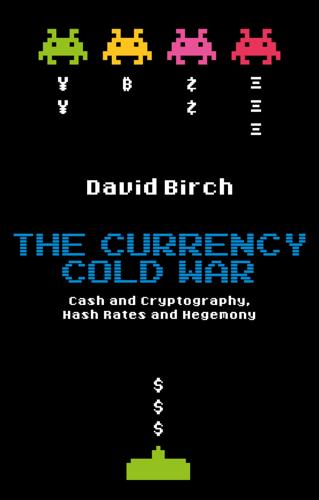
The Currency Cold War: Cash and Cryptography, Hash Rates and Hegemony
by
David G. W. Birch
Published 14 Apr 2020
I am no expert, but I imagine that, among other things, they learned to make sure they had security patches installed on their computers and backups of their data … but I digress. Let us return to the issue of ransoms. This ransomware would not be much good if the attacker could only be paid in cheques or via bank transfers, which is why ransomware and cryptocurrency are a package. These ransomware datanappers are not the only criminal users of this new digital dosh, either. Apparently, the police have seen an ‘explosion in the use of digital currency by criminals who are strolling into cafés, newsagents and corner shops to dump their ill-gotten gains in virtual currency ATMs’ (Camber and Greenwood 2017).
…
The use of an immutable public ledger to store criminal transactions does not seem like much of a use case to me, but, as the figures show, the underbelly are indeed using it. This was highlighted in the well-publicized ransomware attack on Travelex at the beginning of 2020. This resulted in my bank, Barclays, as well as other high-street banks, including HSBC, Virgin and Tesco Bank, all of which rely on Travelex for their foreign exchange (FX) services, being unable to offer online FX services or process orders for foreign currency for some weeks. Travelex, having left critical security weaknesses unpatched in its Pulse Secure virtual private network (VPN) servers for eight months, was infected with a ransomware virus that encrypted the company’s data. The attackers demanded a $6 million payment in Bitcoin to decrypt it.16 The scale of the damage here may have been unusual, but this type of attack is not.
…
You can see what is going to happen next: the exchange will be required to identify who owns the stolen coins, and the owner will be the subject of legal action to recover them. This owner might be entirely oblivious as to the origin of the coins, might say they had no idea the Bitcoins they bought were the proceeds of a ransomware attack and might ask to keep them. That, however, is not how property law works. Even if you come to possess stolen property accidentally, a judge can still force you to give it back to the rightful owner. Smart criminals might use mixers and such trickery to obfuscate the origin of Bitcoins and thus confound law enforcement, but the coins and transactions remain on that public ledger, which anyone can look at.
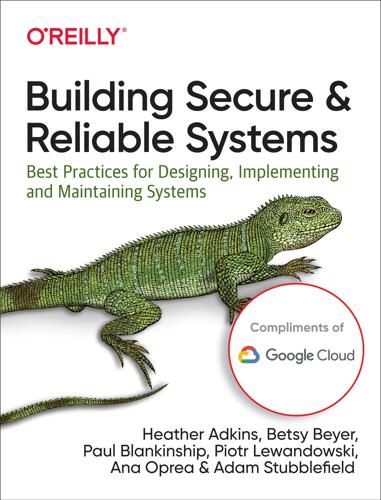
Building Secure and Reliable Systems: Best Practices for Designing, Implementing, and Maintaining Systems
by
Heather Adkins
,
Betsy Beyer
,
Paul Blankinship
,
Ana Oprea
,
Piotr Lewandowski
and
Adam Stubblefield
Published 29 Mar 2020
So that these compromises don’t require manual intervention from a human responder, the security team establishes a mechanism to automatically wipe and replace compromised cloud test instances. In this case, a ransomware worm would also not require much forensics or incident response attention. Although Organization 2 doesn’t prevent the ransomware from executing (as in Organization 1’s case), Organization 2’s automated mitigation tools can contain the risk. Organization 3 has fewer layered defenses and limited visibility into whether its systems are compromised. The organization is at much greater risk of the ransomware spreading across its network and may not be able to respond quickly. In this case, a large number of business-critical systems may be affected if the worm spreads, and the organization will be severely impacted, requiring significant technical resources to rebuild the compromised networks and systems.
…
Three criminal actors in China had this exact idea in 2014–2015 and made a few million dollars by stealing sensitive information from unsuspecting law firms. In the past 10 years, attackers have also realized that victims will hand over money when their sensitive data is threatened. Ransomware is software that holds a system or its information hostage (usually by encrypting it) until the victim makes a payment to the attacker. Commonly, attackers infect victim machines with this software (which is often packaged and sold to attackers as a toolkit) by exploiting vulnerabilities, by packaging the ransomware with legitimate software, or by tricking the user into installing it themselves. Criminal activity does not always manifest as overt attempts to steal money.
…
The response to an incident will depend on the type of environment where the incident happened, the state of the organization’s preventative controls, and the sophistication of its response program. Consider how three organizations might respond to the same threat—a ransomware attack: Organization 1 has a mature security process and layered defenses, including a restriction that permits only cryptographically signed and approved software to execute. In this environment, it’s highly unlikely that well-known ransomware can infect a machine or spread throughout the network. If it does, the detection system raises an alert, and someone investigates. Because of the mature processes and layered defenses, a single engineer can handle the issue: they can check to make sure no suspicious activity has occurred beyond the attempted malware execution, and resolve the issue using a standard process.

Dawn of the Code War: America's Battle Against Russia, China, and the Rising Global Cyber Threat
by
John P. Carlin
and
Garrett M. Graff
Published 15 Oct 2018
Selena Larson, “The Hacks That Left Us Exposed in 2017,” CNN Tech, December 20, 2017, www.money.cnn.com/2017/12/18/technology/biggest-cyberattacks-of-the-year/index.html. 33. Patrick Howell O’Neill, “NotPetya Ransomware Cost Merck More Than $310 Million,” Cyberscoop, October 27, 2017, www.cyberscoop.com/notpetya-ransomware-cost-merck-310-million/. 34. Warwick Ashford, “NotPetya Attack Cost up to £15m, Says UK Ad Agency WPP,” ComputerWeekly.com, September 25, 2017, www.computerweekly.com/news/450426854/NotPetya-attack-cost-up-to-15m-says-UK-ad-agency-WPP. 35. Charlie Osborne, “NotPetya Ransomware Forced Maersk to Reinstall 4000 Servers, 45000 PCs,” ZDNet.com, January 26, 2018, www.zdnet.com/article/maersk-forced-to-reinstall-4000-servers-45000-pcs-due-to-notpetya-attack/. 36.
…
In October 2013, Slavik’s group began deploying malware known as CryptoLocker, a form of ransomware that encrypted the files on an infected machine and forced its owner to pay a small fee, say $300 to $500, to unlock the files. It quickly became a favorite tool of the cybercrime ring, in part because it helped transform deadweight into profit. The trouble with building a massive botnet focused on high-level financial fraud, it turns out, is that most zombie computers don’t connect to fat corporate accounts; Slavik and his associates found themselves with tens of thousands of mostly idle zombie machines. Though ransomware didn’t yield huge amounts, it afforded the criminals a way to monetize those otherwise worthless infected computers—and the dollar amounts involved were generally low enough that victims either didn’t complain to the police or law enforcement wouldn’t do anything about it.
…
Though ransomware didn’t yield huge amounts, it afforded the criminals a way to monetize those otherwise worthless infected computers—and the dollar amounts involved were generally low enough that victims either didn’t complain to the police or law enforcement wouldn’t do anything about it. The concept of ransomware had been around since the 1990s, but CryptoLocker took it mainstream. Typically arriving on a victim’s machine under the cover of an unassuming email attachment, the Business Club’s ransomware used strong encryption and forced victims to pay using Bitcoin. It was embarrassing and inconvenient, but many relented. The Swansea, Massachusetts, police department grumpily ponied up $750 to get back one of its computers in November 2013; the virus “is so complicated and successful that you have to buy these Bitcoins, which we had never heard of,” Swansea Police Lieutenant Gregory Ryan told his local newspaper.
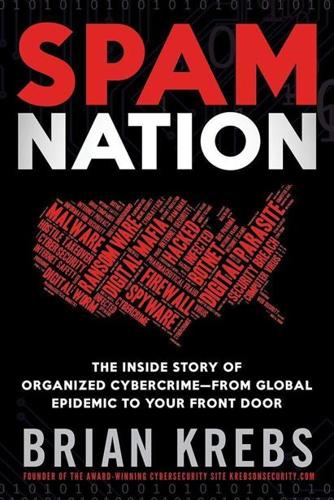
Spam Nation: The Inside Story of Organized Cybercrime-From Global Epidemic to Your Front Door
by
Brian Krebs
Published 18 Nov 2014
But in its place, a far more insidious threat has taken hold: ransomware. Much like scareware, ransomware is most often distributed via hacked or malicious sites that exploit browser vulnerabilities. Typically, these scams impersonate the Department of Homeland Security or the FBI (or the equivalent federal investigative authority in the victim’s country) and try to frighten people into paying fines to avoid prosecution for supposedly downloading child pornography and pirated content. Ransomware locks the victim’s PC until he either pays the ransom or finds a way to remove the malware. Increasingly, ransomware attacks encrypt all of the files on the victim’s PC, holding them for ransom until victims pay up.
…
Victims are then told to send the attackers the voucher code or card number that allows the bad guys to redeem the information for cash. “I don’t think it’s an accident that we’ve seen ransomware rise as it’s become harder for these partnerka programs to find a continuous supply of banks to help them process cards for scareware payments,” Savage said. “You have a bunch of people who are used to making good money for whom fake antivirus software and scareware have become problematic and for whom pharma is not really an option. There’s a void in the ecosystem where people can make money. It’s not at all an accident that these ransomware schemes essentially are bypassing traditional payment schemes.” The past few years have also witnessed a noticeable change in the ways that botmasters are using the resources at their disposal.
…
“Much like the Inuit Eskimos made sure to use every piece of the whale, we’re seeing an evolution now where botmasters are carefully mining infected systems and monetizing the data they can find,” Savage said. “The mantra these days seems to be, ‘Why leave any unused resources on the table’?” While some are using ransomware and data harvesting, Savage said, many other former affiliates and managers of failed scareware, pharma, and pirated software partnerkas are casting about for the next big thing. “It’s a period of innovation, and people clearly are looking around for another sweet spot that’s as good as pharma, which made more money more reliably than anything else out there,” he said.

Future Crimes: Everything Is Connected, Everyone Is Vulnerable and What We Can Do About It
by
Marc Goodman
Published 24 Feb 2015
Schwartz, “Malware Toolkits Generate Majority of Online Attacks,” Dark Reading, Jan. 18, 2011. 95 To unlock their computers: David Wismer, “Hand-to-Hand Combat with the Insidious ‘FBI MoneyPak Ransomware Virus,’ ” Forbes, Feb. 6, 2013. 96 Thus users in the U.K.: EnigmaSoftware, “Abu Dhabi Police GHQ Ransomware.” 97 Another, even more pernicious: Mark Ward, “Crooks ‘Seek Ransomware Making Kit,’ ” BBC News, Dec. 10, 2013. 98 Nearly 250,000 individuals: Dave Jeffers, “Crime Pays Very Well: CryptoLocker Grosses up to $30 Million in Ransom,” PCWorld, Dec. 20, 2013. 99 Automated ransomware tools: Dennis Fisher, “Device-Locking Ransomware Moves to Android,” ThreatPost, May 7, 2014. 100 The police lieutenant: Violet Blue, “CryptoLocker’s Crimewave: A Trail of Millions in Laundered Bitcoin,” ZDNet, Dec. 22, 2013; Bree Sison, “Swansea Police Pay Ransom After Computer System Was Hacked,” CBS Boston, Nov. 18, 2013.
…
Akin to threatening “if you ever want to see your files alive again,” these ransomware programs gladly accept payment in Bitcoin. The message to these victims was no idle threat. Whereas previous ransomware might trick users by temporarily hiding their files, CryptoLocker actually uses strong 256-bit Advanced Encryption Standard cryptography to lock user files so that they become irrecoverable. Nearly 250,000 individuals and businesses around the world have suffered at the hands of CryptoLocker, earning an estimated $30 million for its developer. Automated ransomware tools have even migrated to mobile phones, affecting Android handset users in certain countries.
…
Paying the $49 fee was the only way to regain access to their own computers and data (a deluxe version with unlimited tech support was available for $79). So what exactly was this pioneering software product Innovative Marketing had created? It was called crimeware, a whole new product category within the software industry—software that commits crime. Crimeware, sometimes called scareware, ransomware, or rogue antivirus, is nothing more than a malicious computer program that plays on a user’s fear of virus infection. We’ve all been trained to be on the lookout for antivirus alerts and to run our security software when a problem is detected. Thus it seemed entirely logical that when System Defender’s critical system pop-up message appeared on the screens of users around the world, the best and commonsense course of action was to click on the “remove all threats” button.

Fancy Bear Goes Phishing: The Dark History of the Information Age, in Five Extraordinary Hacks
by
Scott J. Shapiro
Grouping malware with excrement, vomit, bad breath, pus-filled boils, garbage, rotting flesh, rats, roaches, maggots, and bodily disfigurement makes a scary thing even scarier. All that said, I don’t mean to minimize the harm or the risk of hacking. In 2021, Colonial Pipeline, which runs the largest refined oil pipeline system in the United States, was hit by a ransomware attack that led to fuel stoppages for several days and a spike in gasoline prices. Ransomware has also been the scourge of local governments, hospitals, and schools. Indeed, this book is filled with examples of targeted and harmful cyberattacks. This is why cybersecurity professionals are essential to any modern business. Nevertheless, these professionals are often overworked, and many are also underpaid.
…
Law enforcement can also force exchanges to exclude these actors from their platforms. Indeed, the United States has started to sanction cryptocurrency exchanges for laundering ransomware proceeds. The Department of Treasury’s Office of Foreign Assets Control (OFAC) designated the cryptocurrency exchange SUEX a sanctioned entity. U.S. citizens and financial institutions are generally banned from doing business with sanctioned entities. OFAC also warned U.S. entities that they can be sanctioned if they pay ransomware to sanctioned entities, even if they are unaware that the entities are sanctioned. Liability As Shoshana Zuboff has argued, we live in the age of “surveillance capitalism.”
…
“greatest threat”: Steve Morgan, “IBM’s CEO on Hackers: ‘Cyber Crime Is the Greatest Threat to Every Company in the World,’” Forbes, November 24, 2015, https://www.forbes.com/sites/stevemorgan/2015/11/24/ibms-ceo-on-hackers-cyber-crime-is-the-greatest-threat-to-every-company-in-the-world/?sh=2776a87973f0. ransomware attack on my publisher’s: Carly Page, “US Publisher Macmillan Confirms Cyberattack Forced Systems Offline,” TechCrunch, July 1, 2022, https://techcrunch.com/2022/07/01/publisher-macmillan-ransomware. SolarWinds: Ellen Nakashima and Craig Timberg, “Russian Government Spies Are Behind a Broad Hacking Campaign That Has Breached US Agencies and a Top Cyber Firm,” The Washington Post, December 13, 2020.

Coders: The Making of a New Tribe and the Remaking of the World
by
Clive Thompson
Published 26 Mar 2019
The stakes of cyberattacks can be enormous, as the WannaCry malware of 2017 showed. It was a piece of “ransomware”: Once it infected a computer, it encrypted all the contents so the owner couldn’t read or use them. Then it popped up a neatly designed little text box explaining that “We guarantee that you can recover all your files safely and easily. But you have not so enough time.” The language was cheery, if a bit stilted—possibly the result of a Chinese speaker writing in English, some suspect. And the interface was quite slick. The overall goal of ransomware, these days, is to seem as professional as possible; some even have helplines to assist the victims in figuring out how to acquire Bitcoin, the main currency for paying ransoms.
…
security experts suspected: “Cyber Attack Hits 200,000 in at Least 150 Countries: Europol,” Reuters, May 14, 2017, accessed August 19, 2018, https://www.reuters.com/article/us-cyber-attack-europol/cyber-attack-hits-200000-in-at-least-150-countries-europol-idUSKCN18A0FX; Julia Carrie Wong and Olivia Solon, “Massive Ransomware Cyber-attack Hits Nearly 100 Countries around the World,” Guardian, May 12, 2017, https://www.theguardian.com/technology/2017/may/12/global-cyber-attack-ransomware-nsa-uk-nhs; Thomas P. Bossert, “It’s Official: North Korea Is Behind WannaCry,” Wall Street Journal, December 18, 2017, accessed August 19, 2018, https://www.wsj.com/articles/its-official-north-korea-is-behind-wannacry-1513642537.
…
It had an effect, even better than he expected: It stopped WannaCry in its tracks. It turns out the URL worked like a “kill switch.” Once it existed, every copy of WannaCry shut down. “It was all over in a few minutes,” he tells me, marveling at the speed of its crash. Possibly the malware authors had included a kill switch in case they lost control of their spread of the ransomware—“in case shit got too bad,” as Hutchins says dryly. But either way, he had prevented a mammoth amount of damage. He’d shut down WannaCry before much of the US turned on its computers and opened for business, which likely meant billions saved. Pretty soon, Hutchins was a global celebrity, with newspapers feting him as the white-hat hacker who “accidentally” saved the world.
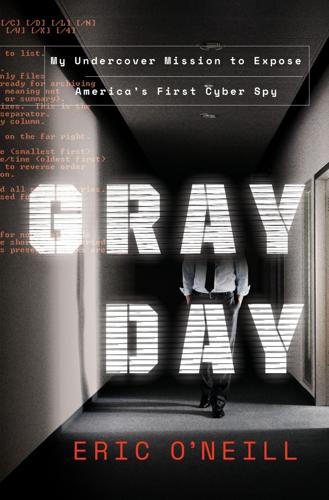
Gray Day: My Undercover Mission to Expose America's First Cyber Spy
by
Eric O'Neill
Published 1 Mar 2019
Nearly 100,000 computer systems fell prey to NotPetya, including systems in both Ukraine and Russia, throughout Europe and North America, and as far away as Australia. WannaCry and NotPetya—indeed, most of the most damaging cyberattacks we’ve seen in the past few years—are both examples of what’s called ransomware, a cunning malware that encrypts digital files and demands a ransom to unlock them. Often the attacker tricks human targets into infecting their own computer systems by enticing them to open an infected attachment or click on a malicious link. Ransomware attacks are so successful that they have grown faster than any other cybercrime in the last five years, rising from an estimated $350 million in damage costs in 2015 to $1 billion in 2016 and $5 billion in 2017.
…
Ransomware attacks are so successful that they have grown faster than any other cybercrime in the last five years, rising from an estimated $350 million in damage costs in 2015 to $1 billion in 2016 and $5 billion in 2017. We are not stopping the problem. Cybersecurity Ventures, a global cybersecurity researcher, predicts that global ransomware damage costs will exceed $11.5 billion annually by 2019. Successful ransomware attackers target soft targets, those with inferior security and the most to lose if their computer systems are locked away. Small and medium-sized businesses in the health-care, technology, energy, and banking sectors are often primary targets. These attacks can break a company. According to a 2017 IBM and Ponemon Institute study, the average cost of a data breach is $3.62 million.
…
More than 150 countries desperately fought the attack, but resistance was futile. The malware leapt across borders at the speed of thought, worming its way through businesses and government agencies, wreaking havoc in banks and universities, shutting down airports and bringing hospitals to a standstill. After infecting a Windows computer, the WannaCry ransomware worm encrypted files on the hard drive, making them impossible to access, then demanded a ransom payment in order to decrypt them. WannaCry was so deadly in part because it relied on some of the best hacking tools that exist—tools that were created by the US government. As espionage has evolved, American spy agencies have evolved with it.

There's a War Going on but No One Can See It
by
Huib Modderkolk
Published 1 Sep 2021
His speciality is financial fraud: stealing bank data from computers and using it to empty accounts. One of his first victims was the major Dutch bank ABN Amro. Many thousands of other institutions followed, from a Massachusetts police department to hospitals, as well as hundreds of random individuals whom he extorted online using ransomware. Bogachev isn’t just a crafty hacker, he’s an exceptionally savvy entrepreneur with his own criminal empire, who invests his stolen millions in property here in Anapa. His power and connections have made him an attractive partner for Russian security services, and his knowledge and skills have made him a valuable asset.
…
The culprit is an unknown virus, later to be christened ‘NotPetya’. Ruthlessly it strikes in France, India, Great Britain, Poland, Germany, damaging systems all over the world. ‘Companies worldwide paralysed,’ headlines Holland’s RTL Nieuws. ‘What is it and how can it be stopped?’ asks the Guardian in Britain. ‘A global ransomware attack,’ opens the Dutch national nightly newscast. On the scene in Rotterdam’s port, a reporter confirms that not a single European country has been spared. ‘Do we know anything yet about where this virus came from?’ the newscaster asks. ‘No,’ answers the reporter, APM’s blue cranes motionless in the background.
…
Monitors across whole departments went black. One by one, in rapid succession. Workers who saw it happen and frantically ran around unplugging machines were too late. It was that fast. Rebooting was pointless. The computers were locked and unresponsive. The message that popped up on tens of thousands of monitors indicated ransomware. For $300, people’s files would be restored, the attackers said. But as those who transferred the money swiftly discovered, they weren’t. Their computers systems had been shattered. If I wanted to work out what happened in the Port of Rotterdam, I’d have to pin down the origin of the global breakdown first.

The Coming Wave: Technology, Power, and the Twenty-First Century's Greatest Dilemma
by
Mustafa Suleyman
Published 4 Sep 2023
Thousands of scheduled procedures, ranging from cancer appointments to elective surgeries, had to be canceled. Panicked care teams reverted to manual stopgaps, using paper notes and personal phones. The Royal London Hospital shuttered its emergency department, with patients left lying on gurneys outside the operating theaters. The NHS had been hit by a ransomware attack. It was called WannaCry, and its scale was immense. Ransomware works by compromising a system to encrypt and thus lock down access to key files and capabilities. Cyberattackers typically demand a ransom in exchange for liberating a captive system. The NHS wasn’t WannaCry’s only target. Exploiting a vulnerability in older Microsoft systems, hackers had found a way to grind swaths of the digital world to a halt, including organizations like Deutsche Bahn, Telefónica, FedEx, Hitachi, even the Chinese Ministry of Public Security.
…
Ghafur et al., “A Retrospective Impact Analysis of the WannaCry Cyberattack on the NHS,” NPJ Digital Medicine, Oct. 2, 2019, www.nature.com/articles/s41746-019-0161-6, for more. GO TO NOTE REFERENCE IN TEXT WannaCry tricked some users Mike Azzara, “What Is WannaCry Ransomware and How Does It Work?,” Mimecast, May 5, 2021, www.mimecast.com/blog/all-you-need-to-know-about-wannacry-ransomware. GO TO NOTE REFERENCE IN TEXT The ensuing damage cost Andy Greenberg, “The Untold Story of NotPetya, the Most Devastating Cyberattack in History,” Wired, Aug. 22, 2018, www.wired.com/story/notpetya-cyberattack-ukraine-russia-code-crashed-the-world.
…
It is then weaponized, turned against the core fabric of the contemporary state: health services, transport and power infrastructures, essential businesses in global communications and logistics. In other words, thanks to a basic failure of containment, a global superpower became a victim of its own powerful and supposedly secure technology. This is uncontained asymmetry in action. * * * — Luckily, the ransomware attacks described above relied on conventional cyberweapons. Luckily, inasmuch as they did not rely on the features of the coming wave. Their power and potential were limited. The nation-state was scratched and bruised, but it wasn’t fundamentally undermined. Yet it is a matter of when, not if, the next attack will occur, and next time we may not be so lucky.
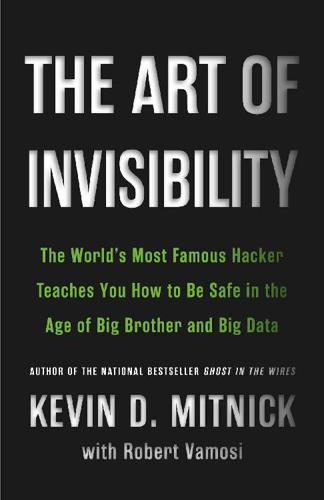
The Art of Invisibility: The World's Most Famous Hacker Teaches You How to Be Safe in the Age of Big Brother and Big Data
by
Kevin Mitnick
,
Mikko Hypponen
and
Robert Vamosi
Published 14 Feb 2017
In some cases the encrypted files contain personally identifiable information such as Social Security numbers, which may qualify the attack as a data breach and thus incur more costs. Although the key to unlock the files can always be purchased for a flat fee of $500 to $1000, those who are infected typically try other means—such as breaking the encryption themselves—to remove the ransomware. That’s what Simone’s mother tried. When she finally called her daughter, they were almost out of time. Almost everyone who tries to break the ransomware encryption fails. The encryption is really strong and requires more powerful computers and more time to break it than most people have at their disposal. So the victims usually pay. According to Simone, the Dickson County, Tennessee, sheriff’s office paid in November 2014 a Cryptowall ransom to unlock 72,000 autopsy reports, witness statements, crime scene photographs, and other documents.
…
Throughout the Times piece, Simone reminds readers that they should never pay the ransom—yet she did just that in the end. In fact the FBI now advises people whose computers are infected with ransomware to simply pay up. Joseph Bonavolonta, the assistant special agent in charge of the FBI’s cyber and counterintelligence program in Boston, said, “To be honest, we often advise people just to pay the ransom.” He said not even the FBI is able to crack the ultrasecure encryption used by the ransomware authors, and he added that because so many people have paid the attackers, the $500 cost has remained fairly consistent over the years.17 The FBI later came out to say it’s up to the individual companies to decide whether to pay or contact other security professionals.
…
What if you did interact with a phisher and as a result lost all the data—all the personal photographs and private documents—on your infected PC or mobile device? That’s what happened to author Alina Simone’s mother. Writing in the New York Times, Simone described what it was like for her mother—who was not technologically inclined—to be up against a sophisticated enemy who was using something called ransomware.15 In 2014 a wave of extortionist malware hit the Internet, targeting individuals and corporations alike. Cryptowall is one example: it encrypts your entire hard drive, locking you out of every file until you pay the attacker to give you the key to unlock your files. Unless you have a full backup, the contents of your traditional PC or Android device will be inaccessible until you pay the ransom.

Reset
by
Ronald J. Deibert
Published 14 Aug 2020
But the uses towards which those populations (and all next-generation users, for that matter) are putting digital technologies are sometimes quite surprising, and different than what the original designers intended. Human ingenuity can reveal itself in many unexpected ways. The internet gave us access to libraries and hobby boards, but also gave criminal enterprises low-risk opportunities for new types of global malfeasance, like spam, phishing schemes, and (more recently) ransomware and robocalls. Early in the internet’s history, many assumed the technology would hamstring dictators and despots, and, to be sure, it has created some control issues for them. But it’s also created opportunities for older practices to flourish, such as the way “kompromat” (Russian for “compromising material used for blackmail and extortion”) has taken on new life in post-Soviet social media.
…
Interdependence runs deep — even closed-off North Korea depends on the internet for illicitly acquired revenues.18 And so most of the offensive action (even among otherwise sworn adversaries) takes place just below the threshold of armed conflict.19 Subversion, psychological operations, extortion (through ransomware), and digitally produced propaganda are where the real action is to be found — less violent, to be sure, but no less destructive of the health of the global communications sphere. The entire ecosystem requires enormous energy to power, and that in turn implicates all of the various components of the global energy grid: power stations, transmission systems, hydroelectric dams, nuclear power plants, coal-fired power plants, and others.
…
Researchers at the cybersecurity firm IBM X-Force spotted a rash of malware-laden emails sent to Japanese citizens early in the virus’s spread, and warned that more was to come.90 Summing up the neuroses of our collective social media condition, the researchers concluded that “unfortunately, it is quite common for threat actors to exploit basic human emotions such as fear — especially if a global event has already caused terror and panic.” As if on cue, it wasn’t long before health agencies, humanitarian organizations, and hospitals worldwide were blitzed with ransomware, digital espionage attacks, and phishing schemes.91 Exhausted individuals working in the threat intelligence and cyberdefence industries with whom I spoke said the rash of attacks was like nothing they’d ever experienced before. Social media companies responded to the “infodemic” in typically mixed and slightly confused fashion.

The People vs Tech: How the Internet Is Killing Democracy (And How We Save It)
by
Jamie Bartlett
Published 4 Apr 2018
This is a good thing for individual freedom but a bad thing for law enforcement agencies, who find their scope of work increasing all the time – and who are often helpless to respond. The more connected we are, the more vulnerable we are. A Russian can now steal your money without leaving his bunker in Volgograd. If I were so inclined (I’m not) I could turn on my anonymous Tor browser, jump onto the dark net, fire some ransomware into the world, and wait for bitcoin ransom payments from the unsuspecting internet users who had clicked on my malicious link. None of this requires much in the way of skill or know-how.5 And yet successful prosecution for cybercrime is negligible. There’s barely a thing our police can do about Russian hackers.
…
But they will also be vulnerable, because the security standards for these ‘IoT’ devices are notoriously bad. There have already been high-profile examples of cardiac devices, cars, a baby monitor and home webcams being hacked. This will get very personal. It won’t be long, for example, before your smart coffee machine will be hacked with ransomware – and you are asked to pay a small ransom just to regain access to your morning caffeine. Every day it gets a little simpler to be a cybercriminal. Earlier this year it was reported that there is now easily available code called AutoSploit that automatically searches for vulnerable IoT devices.
…
(The calculation is actually incorrect: when I asked him, May explained that Cyphernomicon was only a first draft, and that he’d never got round to checking it as carefully as he would have liked.) 4 As explained in Attack of the 50-Foot Blockchain by David Gerard (CreateSpace, 2017), Szabo has studied law, and seems to take quite a cautious approach to this issue, unlike others. 5 Kelly Murnane, ‘Ransomware as a Service Being Offered for $39 on the Dark Net’, www.forbes.com, 15 July 2016. 6 See Gerard, Attack of the 50-Foot Blockchain for an excellent discussion of this issue. 7 Annie Nova, ‘“Wild west” days are over for cryptocurrencies, as IRS steps up enforcement’, www.cnbc.com, 17 January 2018. 8 ‘A Simple Guide to Safely and Effectively Tumbling (Mixing) Bitcoin’, https://darknetmarkets.org, 10 July 2015.
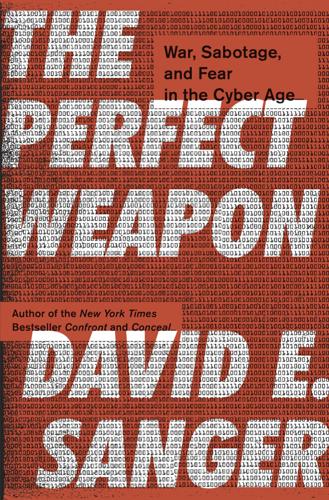
The Perfect Weapon: War, Sabotage, and Fear in the Cyber Age
by
David E. Sanger
Published 18 Jun 2018
There were reports that the automatic radiation monitors at the old Chernobyl nuclear plant couldn’t operate because the computers that controlled them went offline. Some Ukrainian broadcasters briefly went off the air; when they came back, they still could not report the news because their computer systems were frozen by what appeared to be a ransomware notice. Ukraine had suffered cyberattacks before. But not like this one. The unfolding offensive seemed targeted at virtually every business in the country, both large and small—from the television stations to the software houses to any mom-and-pop shops that used credit cards. Computer users throughout the country all saw the same broken-English message pop onto their screens.
…
It can hold large swaths of nation-state infrastructure and private-sector infrastructure at risk. It’s a source of income.” At an earlier time, North Korea counterfeited crude $100 bills to finance the country’s operations. That grew more difficult as the United States made the currency harder and harder to copy. But ransomware, digital bank heists, and hacks of South Korea’s fledgling Bitcoin exchanges all made up for the loss of the counterfeiting business. Today the North may be the first state to use cybercrime to finance its state operations. Bangladesh was hardly the only victim, and not even the first. In 2015 there was an intrusion into the Philippines, then the Tien Phong Bank in Vietnam.
…
It was a standard piece of the TAO’s toolbox because it exploited a vulnerability in Microsoft Windows servers—an operating system so widely used that it allowed the malware to spread across millions of computer networks. No one had seen anything like it in nearly a decade, since a computer worm called “Conficker” went wild. In this case, the North Korean hackers married the NSA’s tool to a new form of ransomware, which locks computers and makes their data inaccessible—unless the user pays for an electronic key. The attack was spread via a basic phishing email, similar to the one used by Russian hackers in the attacks on the Democratic National Committee and other targets in 2016. It contained an encrypted, compressed file that evaded most virus-detection software.
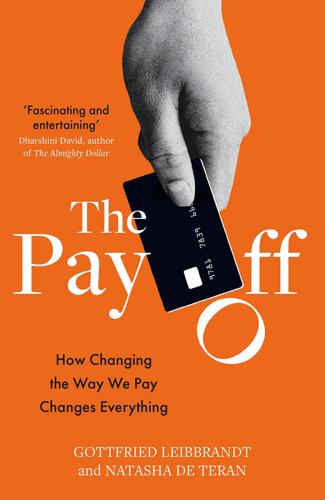
The Pay Off: How Changing the Way We Pay Changes Everything
by
Gottfried Leibbrandt
and
Natasha de Teran
Published 14 Jul 2021
Maybe that’s because insufficient assets are available in crypto form; the communities that they could solve for are too small or too disparate to reach; or the problems smart contracts purport to solve aren’t big enough or don’t actually exist. The latter may well be the case for ransomware. The many hospitals hit by ransomware during the Covid-19 outbreak paid up, trusting the crooks. The crooks, perhaps sensitive to the fact that their business model rests on their reputation for responding to ransom payments, reportedly unlocked the systems. In Ethereum the contracts are submitted as code and automatically executed or enforced.
…
The idea is that these contracts are irrevocable: a party cannot withhold payment once the conditions for payment are fulfilled. An important (potential) application is delivery versus payment for securities. If both money and securities were ‘tokenised’ and transferable through crypto technology, then smart contracts could ensure that the transactions take place only if both tokens are transferred. Ransomware would seem to be an ideal application for these contracts. The crooks encrypt your files and decrypt them only if you transfer the ransom amount in Bitcoin. How do you trust the hackers to actually decrypt your files once you have transferred the money? It would seem quite feasible to put both the Bitcoin payment and the private key needed to decrypt the files in a smart contract so that they are exchanged simultaneously.
…
Gox 200 N N26 158, 159 National Automated Clearing House Association (NACHA) 119 National Association of Estate Agents 128 National Audit Office, UK 23 National Cyber Security Centre (NCSC) 233 near field communication (NFC) controller 223–4, 225 neo-banks 158–9 Netflix 165 Netherlands 32, 58, 67, 99, 172, 179, 234, 260, 266 netting systems, bank 122–3 network effects and payment systems 68–72, 221 New Payments Platform (NPP) 83 New York State Department of Financial Services (NYSDFS) 259 New York’s District Attorney’s Office 259 Nicaraguan rebels 64–5 Noriega, General 64 North Korea 30, 108, 112–14, 141, 249, 250, 262 North, Oliver 64–5, 66 nostro and vostro accounts 141 O Obama, Barack 243, 244 Office of Foreign Assets Control (OFAC), US 249–50, 252, 253, 255, 259 Omni channel 197 one-click shopping 171–2 online payments 50–1, 137–8, 171–2, 174 open banking/Open Banking, UK 86, 180, 182–3, 223 Operation Socialist, GCHQ’s 234 overdrafts 18, 92, 98–9, 183 overspending and frictionless payments 170, 171, 173 P Pakistan 143 Papua New Guinea 8 parity code checks 65–6 Parry, Dorothea and Forrest 47 path dependence 71–2, 78 pattern detection 109–10 payday loan merchants 99 paying to pay 97–101 Payment Accounts Directive, EU 265–6 payment data, use of 178–85 payment initiation service providers (PISP) 181 Payment Services Directive (PSD) 240 Payment Services Directive 2 (PSD2) 83, 86, 180–3, 223, 240 payment stripping 259 payment trails/following the money 255–64 PayPal 3–4, 19, 51–2, 70, 144, 161, 163, 175, 178, 202, 204, 206, 216, 269 Penywaun, Wales 3 People’s Bank of China (PBoC) 100, 211 personal identification numbers (PINs) 49, 109 Petrobras 234 Philippines 113 phishing 110, 112 PIN-debit payments 49, 50, 57, 58, 69 Plaid 181 plastic credit cards, first 41 Pockit 37–8 point-of-sale borrowing 174–5 point of sale (POS) terminals 48, 49, 76, 216 Polish central bank 12 Pornhub 4 Portugal 172 pre-paid cards 37–8, 53, 74, 78, 158 Prelec, Drazen 173 price-comparison sites 89 Principia Mathematica (B. Russell) 4 printing money 34 private keys see public-private key encryption Promontory 257 public-private key encryption 16, 189–91, 195, 200, 214, 215 Puerto Rico 36–7 Punjab National Bank (PNB) 115 Q QR codes 75, 76, 84 QuadrigaCX 200 Qualcomm 226, 271 R railway design 68, 71 Ransomware 195 Rato, Rodrigo 262 Reagan, Ronald 65 real-time gross settlement (RTGS) 126–30, 240 Red Cross 150 red envelope tradition, Chinese 76 Red Packet digital gift 77 Reed, John 220 refugees and immigrants 265, 266 regulation authorities, financial 135, 156, 179, 184, 198, 208, 212, 217, 223–4, 225–6, 229, 230–6, 237–42, 265, 267, 268, 271–2, 273 Ren Zhengfei 251 Reserve Bank of India 86 retail payment flows 120, 122 retail payment instruments 18 retailer lawsuit against card networks, US 56–7 revaluation of currency 30 Revolut 89, 158, 159 Rickards, Jim 31 Ripple/XRP 197–8, 199 risk, payment 15–16, 19, 108, 112–16, 121, 122, 214 robbery, bank 107–8, 112–16 Rogen, Seth 112 Romania 172 Royal Bank of Canada (RBC) 150 Royal Bank of Scotland (RBS) 131 Russell, Bertrand 4 Russia 25, 89, 243, 253–4 Russian Central Bank 256–7 S Safaricom 74 Safeway 56 Sampo Bank 256, 257 sanctions 144, 213, 243, 244–5, 246, 249, 250–1, 252, 253, 254, 258, 266, 270 Sandinista National Liberation Front 65 Sands, Peter 28 Saxo 159 Scandinavia 67 Schneider, Ralph 40 Schuijff, Arnout 165 screen-scrapers 181–2 scrip 170, 219–20 Sears 56 Second World War 7–8, 12, 249 secondary sanctions, US 250, 253 Securities and Exchange Commission, US 198 securities market 132, 140, 247 semi-open payment systems 222 settlement risk 15–16 shopping channels 50 Shor, Ilan 261 shorting 188 Siemiatkowski, Sebastian 174 Signature cards 49–50, 57, 58, 69 Simmons, Matty 40 Simple 159 Single Euro Payments Area (SEPA) 60, 240 Single Euro Payments Regulation 98 Singles Day, China 76 size and methods, payment 120–1, 217, 272 small economies 5–6 smart contracts 194–6, 198–9 smuggling 27 Snowden, Edward 234 social media 110, 119, 179, 206 social media fraud 110 Sofort 180–1, 183 ‘soft’ credit checks 175 Sony Pictures 112 Soros, George 226 sort codes, bank 65–6 South Korea 112 sovereign gold coins 203 Soviet bloc countries, former 24–5, 257 Space Shuttle 71 Spain 81, 261–2 spear-phishing 110 Special Drawing Right (SDR), IMF’s 202 Specially Designated Nationals (SDNs) 250, 251, 252 spies, government 233–4 Spotify 202, 225 Spring Festival Gala, CCT’s 77 Square 155, 162–3, 164–5, 216, 269 Sri Lanka 113 stablecoins 196, 201 Standard Chartered 258–9, 260, 270 standing orders 82 Starling 158 Stephenson, George 68, 71 STET (Systèmes Technologiques d’Échange et de Traitement) 119 Stiftung Warentest 89 stimulus package payments, US 66 store of value, Libra as 206 store of value, money 202 Stripe 15, 162, 163–5, 216 sub-prime mortgages 132 Sun 119 Sunak, Rishi 35 Swartz, Lana 177 Sweden 32–3, 35–6, 58, 172 Swift network 102, 111, 113 114, 115, 140, 141–2, 147, 220, 222, 233–4 Swiss bank accounts 66 Switzerland 23, 67, 201, 260 Syria 266 T tabu 8 TARGET 86, 240–1 Target (US retailer) 109 TARGET2 241 TARGET2 Securities 241 targeted markets 179 tax evasion 27, 29, 258, 260 telegraphs 141 telex 141 Tencent 76, 77 Tenpay 73, 75, 76, 78–9, 85, 100, 161, 178, 216, 217, 220, 221, 222, 235, 270–1 terrorism 232–3, 250, 266 Tether (THT) 196–7, 199 Tez payment app 185 theft risk, payment gateways as 15–16, 108, 112–16, 121 three-corner model 174 Three Mobile 119 TIBER-EU 233 tokens – temporary digital identifiers 109, 189–90, 191, 195, 196, 205, 214 TOR (The Onion Router) 199 TransferWise 89, 146, 216, 241 Transport for London 11 travel shops 90 tribal societies, early 9 truck systems 219–20 Truman, Harry S. 249 Trump, Donald 115, 229, 243–5 tulip bulbs 6 Tumpel-Gugerell, Gertrude 241 Twitter 155 U Uber 82–3, 165, 169, 202 Ubiquity Networks 110–11 UBS 260 UFC-Que Choisir 89 unbanked people 6–7, 38, 212 underground/criminal economy 25, 27–8, 29–30, 199–200 see also financial crime; illegal activities; money-laundering ‘unicorn’ start-ups 146 Unified Payment Interface (UPI) 82–5, 182, 271 Union Pay 55, 59 unit of account, money as 202–4 United Kingdom cheques 117 credit card debt 101 decline of cash 32, 36 digital IDs 270 Faster Payments Service (FPS) 82, 83, 84, 86 GCHQ – National Cyber Security Centre 233 GCHQ – spies 234 HM Treasury 86 INSTEX transactions 245 JCPOA 243 United Kingdom (continued) neo-banks 158 Payment Systems Regulator 237 prepaid cards 37–8 Truck Act (1831) 220 United States of America $100 dollar bills 23, 24, 108 bank fines and financial crime 258–60, 270 checking accounts 91 CIA (Central Intelligence Agency) 65, 149, 264 Congress 57 credit card debt 45, 100 Currency Education Program (CEP) 25 Department of Homeland Security 232–3 Department of State 267 dollars as global reserve currency 246–7, 252 dollars circulating abroad 24–5, 30 domestic securities market 247 Fair Labor Standards Act (1938) 220 Federal Reserve 12, 36, 37, 113–14, 131, 232, 259 free banking era (1837–63) 208 international power of the dollar 246–54 JCPOA 243–4, 252, 254 National Security Agency (NSA) 114, 233, 234, 255 National Security Council (NSC) 64–5, 244, 264 Office of Foreign Assets Control (OFAC) 249–50, 252, 253, 255, 259 open banking 182 paying to pay 97, 101 regulation agencies 231–2 removal of access to WeChat app 270–1 sanctions 213, 243, 244–5, 246, 249, 250–1, 252, 253, 254, 258–9, 270 Securities and Exchange Commission 198 State Department 3–4 Treasury 9, 248, 249–50, 255, 260, 265 use of cheques/checks 63, 117 utility coins 193 V V-pay 58 van der Does, Pieter 165 van Hall, Walraven 7–8 Venezuela 213 Venmo 177 venture capital money 157 Verifone 48 Verizon 130–1 Vestager, Margrethe 224, 225–6 VHS vs Betamax 71, 221 Visa 3–4, 41, 42, 47, 49, 50, 53, 55, 56, 57–9, 90, 102, 161, 162, 174, 201–2, 204, 223, 269 Visa Europe 58–9 Visa Inc. 58–9 W Wal-Mart 56, 57 Watergate scandal 255 WeChat Pay app 270–1, 229 Weidmann, Jens 28 Western Union 144, 216 WhatsApp 184, 202 Which?

The Truth Machine: The Blockchain and the Future of Everything
by
Paul Vigna
and
Michael J. Casey
Published 27 Feb 2018
A 2016 cyber-attack on insurer Anthem Health: Anna Wilde Mathews, “Anthem: Hacked Database Included 78.8 Million People,” The Wall Street Journal, February 24, 2015, https://www.wsj.com/articles/anthem-hacked-database-included-78-8-million-people-1424807364. the so-called WannaCry ransom attacks: Ian Scherr, “WannaCry Ransomware: Everything You Need to Know,” CNET, May 19, 2017, https://www.cnet.com/news/wannacry-wannacrypt-uiwix-ransomware-everything-you-need-to-know/. That’s why initiatives like MedRec: Ariel Ekblaw and Asaf Azaria, “MedRec: Medical Data Management on the Blockchain,” PubPub, September 19, 2016, https://www.pubpub.org/pub/medrec. New York Times columnist Thomas Friedman: Thomas Friedman, The World Is Flat: A Brief History of the Twenty-First Century (Farrar, Straus and Giroux, 2005) In The Age of Cryptocurrency, we reported: Paul Vigna and Michael J.
…
Without true privacy, unhindered open economic access and social interaction will remain a pipe dream, privacy advocates say, since unwanted public exposure limits people’s capacity to engage in free expression and free commerce. That’s why various programmers are designing digital currencies that are less traceable. You might ask, why shouldn’t we be able to catch those odious ransomware hackers when they cash out for dollars? Well, for one thing, the forever-recorded block history of a specific coin’s brushes with the law can undermine its value relative to another. As Zooko Wilcox-O’Hearn, founder of a new cryptocurrency called Zcash, explains, it’s all about ensuring a currency’s “fungibility”—the principle that “if you’re going to pay someone with something, and you have two of them, it doesn’t matter which one you give them.”
…
The tech sector has spent a lot of time discussing its promise to help the financially excluded (including those excluded from the tech sector itself). Nine years on, though, adoption of the digital currency by people outside of the tech sector remains low. Part of the problem is that cryptocurrencies continue to sustain a reputation among the general public for criminality. This was intensified by the massive “WannaCry” ransomware attacks of 2017 in which attackers broke into hospitals’ and other institutions’ databases, encrypted their vital files, and then extorted payments in bitcoin to have the data decrypted. (In response to the calls to ban bitcoin that inevitably arose in the wake of this episode, we like to point out that far more illegal activity and money laundering occurs in dollar notes, which are much harder to trace than bitcoin transactions.
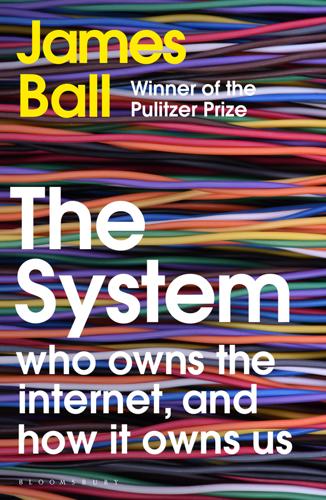
The System: Who Owns the Internet, and How It Owns Us
by
James Ball
Published 19 Aug 2020
Computers were locking up, and then restarting with a locked screen saying the system’s contents had been encrypted – and would be kept locked unless a payment of $300 in Bitcoin (the anonymous online currency) was made within three days. After three days, the price would double. After seven, the data would be irretrievably deleted for ever. This is a type of attack known as ransomware, named because it holds your computer and data hostage in hope of a quick profit if you pay up. But something about this attack was wrong: ransomware is best targeted at home users, who lack backups and easy access to IT support, and who need their data. This attack, though, appeared targeted at major corporate networks – and it was spreading alarmingly fast, to targets with nothing in common.
…
I reported some of its revelations, with independent corroboration, here: https://www.buzzfeednews.com/article/jamesball/us-hacked-into-irans-critical-civilian-infrastructure-for-ma 13https://www.thebureauinvestigates.com/stories/2018-09-13/bureau-wins-case-to-defend-press-freedom-at-the-european-court-of-human-rights 14https://www.theguardian.com/world/2013/oct/24/nsa-surveillance-world-leaders-calls 15As with other stories, they did agree to redact certain specific details (for example, particular models of software, or company names, when specific reasons were given). 16The Guardian version of this story can be viewed here: https://www.theguardian.com/world/2013/sep/05/nsa-gchq-encryption-codes-security 17This was helpfully tweeted by the BBC’s technology editor, Rory Cellan-Jones: https://twitter.com/ruskin147/status/1096327971131088896/photo/1 18The following account of WannaCry is based on interviews with the Symantec staff in the chapter, my own reporting from the time (https://www.buzzfeed.com/jamesball/heres-why-its-unlikely-the-nhs-was-deliberately-targeted-in, https://www.buzzfeed.com/jamesball/gchq-is-facing-questions-over-last-weeks-ransomware-attack, https://www.buzzfeed.com/jamesball/a-highly-critical-report-says-the-nhs-was-hit-by-the), and some details from this later Washington Post report: https://www.washingtonpost.com/world/national-security/us-set-to-declare-north-korea-carried-out-massive-wannacry-cyber-attack/2017/12/18/509deb1c-e446-11e7-a65d-1ac0fd7f097e_story.html?
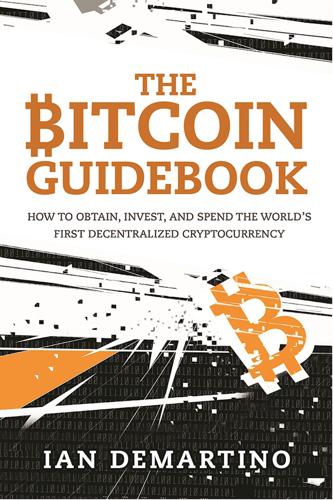
The Bitcoin Guidebook: How to Obtain, Invest, and Spend the World's First Decentralized Cryptocurrency
by
Ian Demartino
Published 2 Feb 2016
The malware—this particular form is known as “ransomware”—cryptographically encrypts a victim’s files, focusing on things it deems important, such as documents and photographs. It then demands payment in Bitcoin for the key to unlock the files. The software usually includes a timer counting down, with the threat that if it reaches zero, the price to unlock the files will increase. According to security blogs, more often than not, victims who pay the ransom fail to get their files unlocked. There are some sites that use already-discovered passwords to attempt an unlock for free but the ransomware itself remains practically unbreakable.
…
The experience of trawling the Deep Web is somewhat akin to traveling the Internet before Google made it easy. The freedom that comes with true anonymity is powerful and results in both good and bad, and that isn’t going away anytime soon. Bitcoin’s ties to criminal activity aren’t limited to the Deep Web. Bitcoin is playing an increasingly large role in malware, ransomware, and gray-market services. Online gambling was an early and obvious use for Bitcoin and that trend has continued unabated since the first dice sites hit the Internet. Today, nearly any event can be bet on using Bitcoin and nearly every casino game is available. There are even peer-to-peer betting sites that allow you to wager on the outcome of custom events—from the results of a presidential election to the next time a celebrity will be arrested to whether it is going to rain in Las Vegas tomorrow.

AIQ: How People and Machines Are Smarter Together
by
Nick Polson
and
James Scott
Published 14 May 2018
You can even find them on any new phone that runs iOS or Android—where, for example, they’re used to analyze which autocorrect suggestions you overrule in text messages, while simultaneously keeping the messages themselves encrypted and secure. Then there’s the issue of hacking. Hacking already plagues hospitals: if you recall the big ransomware attacks of 2017 (like WannaCry), you may also recall that hospitals were disproportionately hit. These hospitals probably weren’t doing anything AI-related with their data, but that kind of activity would hardly have entailed a higher security risk than what was already present. Hospitals should obviously plug their existing information-security holes—probably, as many experts suggest, by moving to some kind of cloud-based infrastructure run by a firm who thinks about security full time.
…
politics prediction rules contraception and deep learning and evaluation of Google Translate and Great Andromeda Nebula and image recognition and massive data and massive models and as models natural language processing and neural networks and overfitting problem training the model trial and error strategy Price, Richard principle of least squares privacy ProPublica Quetelet, Adolphe rage to conclude bias ransomware Reagan, Ronald recommender systems health care and large-scale legacy of Netflix See also suggestion engines Rees, Mina Reinhart, Alex robot cars Bayes’s rule and introspection and extrapolation (dead reckoning) LIDA image of a highway LIDAR (light detection and ranging sensor) SLAM problem (simultaneous localization and mapping) and Waymo robotics Bayes’s rule and in China revolution of SLAM problem (simultaneous localization and mapping) search for USS Scorpion and Stanford Cart Theseus (life-size autonomous mouse) See also robot cars Rose, Pete Royal Mint coin clipping Great Recoinage (1696) Newton, Isaac and Trial of the Pyx Russell, Alexander Wilson S&P 500 Salesforce Sapir, Edward Sarandos, Ted SAT (standardized test) Scherwitzl, Raoul Schlesinger, Karl Schuschnigg, Kurt Schweinfurt-Regensburg mission (World War II) sci-fi AI anxiety and robots self-driving cars.
…
See USS Scorpion suggestion engines bright side of dark side of as “doppelgänger software” targeted marketing and See also recommender systems super-utilizer survivorship bias 2001: A Space Odyssey (film) Takats, Zoltan Tandem Teller, Edward Tencent Tesla Thrun, Sebastian Tiatros (PTSD-centered social network) toilet paper theft Trial of the Pyx Trump, Donald Tufte, Edward Uber Ulam, Stanislaw UNIVAC USS Scorpion bow section prior beliefs and search for USS Scorpion Varroa mites Vassar College von Neumann, John Wald, Abraham early years and education member of Statistical Research Group (Columbia) sequential sampling survivability recommendations for aircraft in United States Wallis, W. Allen WannaCry (ransomware attack) waterfall diagram Watson (IBM supercomputer) Waymo (autonomous-car company) WeChat word vectors word2vec model (Google) World War I World War II Battle of the Bulge Bayesian search and Hopper, Grace, and Schweinfurt-Regensburg mission (World War II) Statistical Research Group (Columbia) and Wald’s survivability recommendations for aircraft Yormark, Brett YouTube Zillow ABOUT THE AUTHORS NICK POLSON is professor of Econometrics and Statistics at the Chicago Booth School of Business.
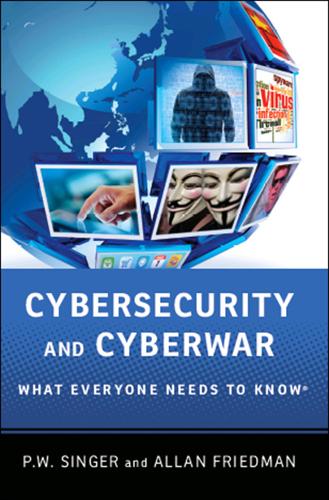
Cybersecurity: What Everyone Needs to Know
by
P. W. Singer
and
Allan Friedman
Published 3 Jan 2014
It becomes a security issue when and if someone tries to exploit the lack of availability in some way. An attacker could do this either by depriving users of a system that they depend on (such as how the loss of GPS would hamper military units in a conflict) or by merely threatening the loss of a system, known as a “ransomware” attack. Examples of such ransoms range from small-scale hacks on individual bank accounts all the way to global blackmail attempts against gambling websites before major sporting events like the World Cup and Super Bowl. Beyond this classic CIA triangle of security, we believe it is important to add another property: resilience.
…
Most losses, however, are indirect, through missed sales and diluted brand value for the companies that followed the rules. Many cybercrimes target businesses more directly. We explore one particularly widespread type, trade secret and intellectual property theft, later. But companies can also be harmed directly through extortion attacks. This is the category that uses the type of ransomware attacks we read about earlier. The victim has to weigh the potential cost of fighting a well-organized attack versus paying off the potential attacker. Websites with time-dependent business models, such as seasonal sales, are particularly vulnerable. One study reported that, “In 2008, online casinos were threatened with just such an [extortion] attack, timed to disrupt their accepting wagers for the Super Bowl unless the attackers were paid 40,000 dollars.”
…
phishing: An attempt to fool the user into voluntarily supplying credentials, such as a password or bank account number, often by spoofed e-mails or fake web pages. “Spear phishing” attacks are customized to target specific individuals. protocol: A set of formats and rules that defines how communications can be exchanged. pwn: Hacker term meaning to “own,” or take control of, a rival’s systems and networks. ransomware: A type of malware that restricts access to a target and demands payment to return regular service. red-team: To examine and/or simulate an attack on oneself, in order to identify and close vulnerabilities before an adversary can do so. Often performed by “white hat” hackers. RickRolling: The Internet meme of tricking someone into watching a horribly addictive music video by 1980s singer Rick Astley.

Enshittification: Why Everything Suddenly Got Worse and What to Do About It
by
Cory Doctorow
Published 6 Oct 2025
But the bottom line is this: Every computer we know how to make is capable of running every computer program we know how to write. That is, computers are universal. There is no known practical way to make a computer that only runs the programs its manufacturer approves of. If there were, we’d make computers that were incapable of running ransomware and spyware and other malware. The implications of this universality are really the story of the past forty years. For one thing, the fact that every computer can run every program means that there’s a nearly infinite coalition of industries that benefit from (and invest in) faster and better computers.
…
But universality is a double-edged sword. No one knows how to make a computer that’s almost universal, that’s “universal minus one.” We can’t make a computer that only runs programs that don’t crash. We can’t make a computer that only runs programs that aren’t viruses. We can’t make a computer that can’t run ransomware. And more’s the pity. All this means that we also can’t make a computer that only runs programs that are good for the manufacturer’s bottom line. There’s no way to make an HP printer—a computer in a fancy case with some bottles of ink wired into it—that’s incapable of using third-party ink. There’s no way to make an iPhone—a pocket-sized computer that will make phone calls for you if you insist—that only runs apps that you buy through Apple’s App Store.
…
Or maybe that doesn’t worry you, but you are pissed about the same thing happening to the January 6 rioters. Or you’re angry that people of color are being discriminated against by algorithms that determine hiring, lending, and housing based on surveillance data. Or that you or someone you love is being targeted by an online scammer, an identity thief, a ransomware creep, or some other criminal who got into your or your loved one’s bank account with the help of surveillance data that was either sold or leaked. Or that someone is using AI to make deepfake porn of you. I think you’d be hard-pressed to find anyone who agrees that all of these issues are problems; I personally think that some of them are actually imaginary.

Thank You for Being Late: An Optimist's Guide to Thriving in the Age of Accelerations
by
Thomas L. Friedman
Published 22 Nov 2016
It’s the most high-profile case yet of cyber-extortion using software known as ransomware. The attack on Hollywood Presbyterian Medical Center effectively knocked it offline. As a result, patients had to be diverted to other hospitals, medical records were kept using pen and paper, and staff resorted to communicating by fax. The attackers demanded 9,000 bitcoins—around $3.6 million. After a two-week stand-off, the hospital yesterday paid out $17,000 … “Ransomware has really exploded in the last couple of years,” says Steve Santorelli, a former UK police detective who now works for Team Cymru, a threat intelligence firm based in Florida. One ransomware package, CryptoLocker 3.0, is thought to have earned attackers $325 million in 2015 alone.
…
Hartman, David Harvard Business Review Harvey, Hal Hautman, Pete Hautman family Hawaii Hazeltine National Golf Club HBO health care HealthPartners Heifetz, Ronald “Hello” (song) help desks Henderson, Simon Henry, Buck Hessel, Andrew Hewitt, Brad Hewlett Packard Enterprise high-frequency trading Hillel, Rabbi HipChat Hiroshima, atomic bombing of history: Eurocentric view of; inflection points in, see inflection points; McNeill’s view of HistoryofInformation.com Hitler, Adolf Hmong people Hoffman, Reid Hoffmann-Ostenhof, Georg Hollande, François Hollywood Presbyterian Medical Center, ransomware attack on Holmstrom, Carl Holocaust Holocene epoch; planetary boundaries of Holt, Bill Honduras Hong Kong Horn, Michael hospitality industry, supernova and House of Representatives, U.S., Homeland Security Committee of Huffington Post Hughes Aircraft human adaptability, in age of accelerations human capital; investment in human networks, see intelligent algorithms Human Resources Development Ministry, India Human Rights Campaign humans: godlike powers of; tribalism of humiliation: adaptability and; as geopolitical emotion Humphrey, Hubert H.
…
planetary boundaries PlayStation 3 Pleistocene epoch pluralism Pluralism Project politics: bipartisanship in; compromise in; disruption in; dogmatism in; money in; polarization in; trust and; see also geopolitics politics, innovation in; adaptability and; diversity and; entrepreneurial mindset in; federal-local balance in; Mother Nature as mentor for; need for organization in; ownership in; “races to the top” in; resilience in; specific reforms in pollution Pol Pot polycyclic aromatic hydrocarbons (PAHs) Popular Science population growth; climate change and; political instability and; poverty and; in weak states Population Institute poverty; advances in connectivity and; chickens and; global flows and; population growth and power of flows power of machines power of many; Mother Nature and; supernova and; see also population growth power of one; ethics and; supernova and Prabhu, Krish prairie, as complex ecosystem Present at the Creation (Acheson) Preston-Werner, Tom Prickett, Glenn privacy, big data and Private Photo Vault Production and Operations Management Society Conference (2014) productivity, supernova and Profil Progressive Policy Institute progressivism; economic growth and Prohibition Project Dreamcatcher Project Syndicate public spaces Putin, Vladimir Putnam, Robert Quad Qualcomm; maintenance workers at Qualcomm pdQ 1900 Quednau, Rachel Queen Rania Teacher Academy Quiz Bowl (TV show) QuoteInvestigator.com (QI) racism rain forests Rain Room ransomware Rattray, Ben ReadWrite.com Reagan, Ronald Real Time Talent Reflections on the Revolution in France (Burke) regulation, technological change and Regulatory Improvement Commission (proposed) Reilly Tar & Chemical Corporation Rejoiner.com relationships, human, connectivity and Republican Party, Republicans: climate change denial by; dogmatism of; implosion of; liberal; polycultural heritage of resilience; in Mother Nature; ownership and; political innovation and retailing: big data and; supernova and Reuters ride-sharing Rifai, Salim al- Ringwald, Alexis Rise and Fall of American Growth, The (Gordon) Rise of the West, The (McNeill) “Rising Menace from Disintegrating Yemen, The” (Henderson) Roberts, Keith robotics “Robots Are Coming, The” (Lanchester) Rockström, Johan Rodríguez, Chi Chi rogue states Rosenstein, Wendi Zelkin Royal Ontario Museum Rugby World Cup (1995) Ruh, Bill Russ, Pam Russell, Richard B.

Easy Money: Cryptocurrency, Casino Capitalism, and the Golden Age of Fraud
by
Ben McKenzie
and
Jacob Silverman
Published 17 Jul 2023
“Censorship resistance” became a mantra in crypto circles—money that was private, free from any surveillance or control by the state. Free, too, from any public safeguards. Financial freedom came to mean a kind of financial anarchy. Criminals could use crypto to avoid taxes, sanctions, launder money, and collect profits from ransomware. A deluge of cryptocurrencies appeared, not just Ethereum but hundreds and then thousands of others, with the wave cresting during the so-called Initial Coin Offering (ICO) boom of 2017–18. Much like the dot-com IPO boom of an earlier era, it seemed like every day there was another ICO, with many projects hardly different from their peers except on the level of branding.
…
Even if Tether was being used by some good people—if only because they had no better options—Tether could just as easily be used by the bad guys. Once you had gotten your money into the crypto ecosystem, moving it instantaneously and globally at parity to the US dollar was an enormously attractive feature. What was stopping Tether from being used for money laundering, tax evasion, sanctions evasion, or ransomware? Viewed through the prism of the fraud triangle, all of the requisite pieces seemed to fall into place when it came to Tether. They had the need, the opportunity, and the rationalization. But of course, Jacob and I could not prove they had committed crimes, and that was not our job. We weren’t prosecutors.
…
° ° ° One sunny morning, Jacob and I went to visit a source of ours in a leafy Maryland town not far from D.C. John Reed Stark, the now-retired chief of the SEC Office of Internet Enforcement, welcomed us with the ebullience of a contented suburban dad. Stark left government in 2009 to become a private-sector consultant, working on issues ranging from ransomware to regulation. He is also helping to train the next generation of regulators; John is a senior lecturer of law at Duke University. An affable, fifty-something guy who seems ready to have a chat about whatever you’d like, Stark was the kind of person you’d want as a neighbor. Relentlessly friendly and community-minded, he came bearing a strong moral code.

Seriously Curious: The Facts and Figures That Turn Our World Upside Down
by
Tom Standage
Published 27 Nov 2018
Phishing e-mails, which try to persuade users to enter sensitive details such as banking passwords into fake (but convincing-looking) websites, can be very profitable, because the data they harvest can allow their controllers to loot bank accounts or go on buying sprees with stolen credit-card information. Malicious attachments can subvert a user’s machine, perhaps recruiting it into a “botnet”, a horde of compromised machines that can be rented out to attackers to knock websites offline. And then there is “ransomware”, in which a malicious program encrypts all the files on the victim’s computer, then displays instructions demanding payment to unscramble them. All this is made possible by giant lists of e-mail addresses that are bought, sold and swapped between spammers. Those, in turn, are generated from leaks, hacks, guesswork and addresses collected from users of shady websites and subsequently sold on.
…
For more explainers and charts from The Economist, visit economist.com Index A Africa child marriage 84 democracy 40 gay and lesbian rights 73, 74 Guinea 32 mobile phones 175–6 see also individual countries agriculture 121–2 Aguiar, Mark 169 air pollution 143–4 air travel and drones 187–8 flight delays 38–9 Akitu (festival) 233 alcohol beer consumption 105–6 consumption in Britain 48, 101–2 craft breweries 97–8 drink-driving 179–80 wine glasses 101–2 Alexa (voice assistant) 225 Algeria food subsidies 31 gay and lesbian rights 73 All I Want for Christmas Is You (Carey) 243 alphabet 217–18 Alternative for Germany (AfD) 223, 224 Alzheimer’s disease 140 Amazon (company) 225 America see United States and 227–8 Angola 73, 74 animals blood transfusions 139–40 dog meat 91–2 gene drives 153–4 size and velocity 163–4 and water pollution 149–50 wolves 161–2 Arctic 147–8 Argentina gay and lesbian rights 73 lemons 95–6 lithium 17–18 Ariel, Barak 191 Arizona 85 arms trade 19–20 Asia belt and road initiative 117–18 high-net-worth individuals 53 wheat consumption 109–10 see also individual countries Assange, Julian 81–3 asteroids 185–6 augmented reality (AR) 181–2 August 239–40 Australia avocados 89 forests 145 inheritance tax 119 lithium 17, 18 shark attacks 201–2 autonomous vehicles (AVs) 177–8 Autor, David 79 avocados 89–90 B Babylonians 233 Baltimore 99 Bangladesh 156 bank notes 133–4 Bateman, Tim 48 beer consumption 105–6 craft breweries 97–8 Beijing air pollution 143–4 dogs 92 belt and road initiative 117–18 betting 209–10 Bier, Ethan 153 Bils, Mark 169 birds and aircraft 187 guinea fowl 32–3 birth rates Europe 81–3 United States 79–80 black money 133–4 Black Power 34, 35 Blade Runner 208 blood transfusions 139–40 board games 199–200 body cameras 191–2 Boko Haram 5, 15–16 Bolivia 17–18 Bollettieri, Nick 197 bookmakers 209–10 Borra, Cristina 75 Bosnia 221–2 brain computers 167–8 Brazil beer consumption 105, 106 Christmas music 243, 244 end-of-life care 141–2 gay and lesbian rights 73 murder rate 45, 46 shark attacks 202 breweries 97–8 Brexit, and car colours 49–50 brides bride price 5 diamonds 13–14 Britain alcohol consumption 101–2 car colours 49–50 Christmas music 244 cigarette sales 23–4 craft breweries 98 crime 47–8 Easter 238 gay population 70–72 housing material 8 inheritance tax 119 Irish immigration 235 life expectancy 125 manufacturing jobs 131 national identity 223–4 new-year resolutions 234 police body cameras 191 sexual harassment 67, 68, 69 sperm donation 61 see also Scotland Brookings Institution 21 Browning, Martin 75 bubonic plague 157–8 Bush, George W. 119 C cables, undersea 193–4 California and Argentine lemons 95, 96 avocados 90 cameras 191–2 Canada diamonds 13 drones 188 lithium 17 national identity 223–4 capitalism, and birth rates 81–2 Carey, Mariah 243 Carnegie Endowment for International Peace 21 cars colours 49–50 self-driving 177–8 Caruana, Fabiano 206 Charles, Kerwin 169 cheetahs 163, 164 chess 205–6 Chetty, Raj 113 Chicago 100 children birth rates 79–80, 81–3 child marriage 84–5 in China 56–7 crime 47–8 and gender pay gap 115–16, 135–6 obesity 93–4 Chile gay and lesbian rights 73 lithium 17–18 China air pollution 143–5 arms sales 19–20 avocados 89 beer consumption 105 belt and road initiative 117–18 childhood obesity 93 construction 7 dog meat 91–2 dragon children 56–7 flight delays 38–9 foreign waste 159–60 lithium 17 rice consumption 109–10 Choi, Roy 99 Christian, Cornelius 26 Christianity Easter 237–8 new year 233–4 Christmas 246–7 music 243–5 cigarettes affordability 151–2 black market 23–4 cities, murder rates 44–6 Citizen Kane 207 citrus wars 95–6 civil wars 5 Clarke, Arthur C. 183 Coase, Ronald 127, 128 cocaine 44 cochlear implants 167 Cohen, Jake 203 Colen, Liesbeth 106 colleges, US 113–14 Colombia 45 colours, cars 49–50 commodities 123–4 companies 127–8 computers augmented reality 181–2 brain computers 167–8 emojis 215–16 and languages 225–6 spam e-mail 189–90 Connecticut 85 Connors, Jimmy 197 contracts 127–8 Costa Rica 89 couples career and family perception gap 77–8 housework 75–6 see also marriage cows 149–50 craft breweries 97–8 crime and avocados 89–90 and dog meat 91–2 murder rates 44–6 young Britons 47–8 CRISPR-Cas9 153 Croatia 222 Croato-Serbian 221–2 D Daily-Diamond, Christopher 9–10 Davis, Mark 216 De Beers 13–14 death 141–2 death taxes 119–20 democracy 40–41 Deng Xiaoping 117 Denmark career and family perception gap 78 gender pay gap 135–6 sex reassignment 65 Denver 99 Devon 72 diamonds 13–14, 124 digitally remastering 207–8 Discovery Channel 163–4 diseases 157–8 dog meat 91–2 Dorn, David 79 Dr Strangelove 207 dragon children 56–7 drink see alcohol drink-driving 179–80 driverless cars 177–8 drones and aircraft 187–8 and sharks 201 drugs cocaine trafficking 44 young Britons 48 D’Souza, Kiran 187 E e-mail 189–90 earnings, gender pay gap 115–16, 135–6 Easter 237–8 economy and birth rates 79–80, 81–2 and car colours 49–50 and witch-hunting 25–6 education and American rich 113–14 dragon children 56–7 Egal, Muhammad Haji Ibrahim 40–41 Egypt gay and lesbian rights 73 marriage 5 new-year resolutions 233 El Paso 100 El Salvador 44, 45 emojis 215–16 employment gender pay gap 115–16, 135–6 and gender perception gap 77–8 job tenure 129–30 in manufacturing 131–2 video games and unemployment 169–70 English language letter names 217–18 Papua New Guinea 219 environment air pollution 143–4 Arctic sea ice 147–8 and food packaging 103–4 waste 159–60 water pollution 149–50 Equatorial Guinea 32 Eritrea 40 Ethiopia 40 Europe craft breweries 97–8 summer holidays 239–40 see also individual countries Everson, Michael 216 exorcism 36–7 F Facebook augmented reality 182 undersea cables 193 FANUC 171, 172 Federer, Roger 197 feminism, and birth rates 81–2 fertility rates see birth rates festivals Christmas 246–7 Christmas music 243–5 new-year 233–4 Feuillet, Catherine 108 films 207–8 firms 127–8 5G 173–4 flight delays 38–9 Florida and Argentine lemons 95 child marriage 85 Foley, William 220 food avocados and crime 89–90 dog meat 91–2 lemons 95–6 wheat consumption 109–10 wheat genome 107–8 food packaging 103–4 food trucks 99–100 football clubs 211–12 football transfers 203–4 forests 145–6, 162 Fountains of Paradise, The (Clarke) 183 fracking 79–80 France career and family perception gap 78 Christmas music 244 exorcism 36–7 gender-inclusive language 229–30 job tenure 130 sex reassignment 66 sexual harassment 68–9 witch-hunting 26, 27 wolves 161–2 G gambling 209–10 games, and unemployment 169–70 Gandhi, Mahatma 155 gang members 34–5 Gantz, Valentino 153 gas 124 gay population 70–72 gay rights, attitudes to 73–4 gender sex reassignment 65–6 see also men; women gender equality and birth rates 81–2 in language 229–30 gender pay gap 115–16, 135–6 gene drives 153–4 Genghis Khan 42 genome, wheat 107–8 ger districts 42–3 Germany beer consumption 105 job tenure 130 national identity 223–4 sexual harassment 68, 69 vocational training 132 witch-hunting 26, 27 Ghana 73 gig economy 128, 130 glasses, wine glasses 101–2 Goddard, Ceri 72 Google 193 Graduate, The 207 Greece forests 145 national identity 223–4 sex reassignment 65 smoking ban 152 Gregg, Christine 9–10 grunting 197–8 Guatemala 45 Guinea 32 guinea fowl 32–3 guinea pig 32 Guinea-Bissau 32 Guo Peng 91–2 Guyana 32 H Haiti 5 Hale, Sarah Josepha 242 Hanson, Gordon 79 Hawaii ’Oumuamua 185 porn consumption 63–4 health child obesity 93–4 life expectancy 125–6 plague 157–8 and sanitation 155 high-net-worth individuals (HNWIs) 53 Hiri Motu 219 holidays Easter 237–8 St Patrick’s Day 235–6 summer holidays 239–40 Thanksgiving 241–2 HoloLens 181–2 homicide 44–6 homosexuality attitudes to 73–4 UK 70–72 Honduras 44, 45 Hong Kong 56 housework 75–6, 77–8 Hudson, Valerie 5 Hungary 223–4 Hurst, Erik 169 I ice 147–8 Ikolo, Prince Anthony 199 India bank notes 133–4 inheritance tax 119 languages 219 rice consumption 109 sand mafia 7 sanitation problems 155–6 Indonesia polygamy and civil war 5 rice consumption 109–10 inheritance taxes 119–20 interest rates 51–2 interpunct 229–30 Ireland aitch 218 forests 145 St Patrick’s Day 235–6 same-sex marriage 73 sex reassignment 65 Italy birth rate 82 end of life care 141–2 forests 145 job tenure 130 life expectancy 126 J Jacob, Nitya 156 Jamaica 45 Japan 141–2 Jighere, Wellington 199 job tenure 129–30 jobs see employment Johnson, Bryan 168 junk mail 189 K Kazakhstan 6 Kearney, Melissa 79–80 Kennedy, John F. 12 Kenya democracy 40 mobile-money systems 176 Kiribati 7 Kleven, Henrik 135–6 knots 9–10 Kohler, Timothy 121 Kyrgyzstan 6 L laces 9–10 Lagos 199 Landais, Camille 135–6 languages and computers 225–6 gender-inclusive 229–30 letter names 217–18 and national identity 223–4 Papua New Guinea 219–20 Serbo-Croatian 221–2 Unicode 215 World Bank writing style 227–8 Latimer, Hugh 246 Leeson, Peter 26 leisure board games in Nigeria 199–200 chess 205–6 gambling 209–10 video games and unemployment 169–70 see also festivals; holidays lemons 95–6 letter names 217–18 Libya 31 life expectancy 125–6 Lincoln, Abraham 242 lithium 17–18 London 71, 72 longevity 125–6 Lozère 161–2 Lucas, George 208 M McEnroe, John 197 McGregor, Andrew 204 machine learning 225–6 Macri, Mauricio 95, 96 Macron, Emmanuel 143 Madagascar 158 Madison, James 242 MagicLeap 182 Maine 216 Malaysia 56 Maldives 7 Mali 31 Malta 65 Manchester United 211–12 manufacturing jobs 131–2 robots 171–2 summer holidays 239 Maori 34–5 marriage child marriage 84–5 polygamy 5–6 same-sex relationships 73–4 see also couples Marteau, Theresa 101–2 Marx, Karl 123 Maryland 85 Massachusetts child marriage 85 Christmas 246 Matfess, Hilary 5, 15 meat dog meat 91–2 packaging 103–4 mega-rich 53 men career and family 77–8 housework 75–6 job tenure 129–30 life expectancy 125 polygamy 5–6 sexual harassment by 67–9 video games and unemployment 169 Mexico avocados 89, 90 gay and lesbian rights 73 murder rate 44, 45 microbreweries 97–8 Microsoft HoloLens 181–2 undersea cables 193 migration, and birth rates 81–3 mining diamonds 13–14 sand 7–8 mobile phones Africa 175–6 5G 173–4 Mocan, Naci 56–7 Mongolia 42–3 Mongrel Mob 34 Monopoly (board game) 199, 200 Monty Python and the Holy Grail 25 Moore, Clement Clarke 247 Moretti, Franco 228 Morocco 7 Moscato, Philippe 36 movies 207–8 Mozambique 73 murder rates 44–6 music, Christmas 243–5 Musk, Elon 168 Myanmar 118 N Nadal, Rafael 197 national identity 223–4 natural gas 124 Netherlands gender 66 national identity 223–4 neurostimulators 167 New Jersey 85 New Mexico 157–8 New York (state), child marriage 85 New York City drink-driving 179–80 food trucks 99–100 New Zealand avocados 89 gang members 34–5 gene drives 154 water pollution 149–50 new-year resolutions 233–4 Neymar 203, 204 Nigeria board games 199–200 Boko Haram 5, 15–16 population 54–5 Nissenbaum, Stephen 247 Northern Ireland 218 Norway Christmas music 243 inheritance tax 119 life expectancy 125, 126 sex reassignment 65 Nucci, Alessandra 36 O obesity 93–4 oceans see seas Odimegwu, Festus 54 O’Reilly, Oliver 9–10 Ortiz de Retez, Yñigo 32 Oster, Emily 25–6 ostriches 163, 164 ’Oumuamua 185–6 P packaging 103–4 Pakistan 5 Palombi, Francis 161 Papua New Guinea languages 219–20 name 32 Paris Saint-Germain (PSG) 203 Passover 237 pasta 31 pay, gender pay gap 115–16, 135–6 Peck, Jessica Lynn 179–80 Pennsylvania 85 Peru 90 Pestre, Dominique 228 Pew Research Centre 22 Phelps, Michael 163–4 Philippe, Édouard 230 phishing 189 Phoenix, Arizona 177 Pilgrims 241 plague 157–8 Plastic China 159 police, body cameras 191–2 pollution air pollution 143–4 water pollution 149–50 polygamy 5–6 pornography and Britain’s gay population 70–72 and Hawaii missile alert 63–4 Portugal 145 Puerto Rico 45 punctuation marks 229–30 Q Qatar 19 R ransomware 190 Ravenscroft, George 101 Real Madrid 211 religious observance and birth rates 81–2 and Christmas music 244 remastering 207–8 Reynolds, Andrew 70 Rhodes, Cecil 13 rice 109–10 rich high-net-worth individuals 53 US 113–14 ride-hailing apps and drink-driving 179–80 see also Uber RIWI 73–4 robotaxis 177–8 robots 171–2 Rogers, Dan 240 Romania birth rate 81 life expectancy 125 Romans 233 Romer, Paul 227–8 Ross, Hana 23 Royal United Services Institute 21 Russ, Jacob 26 Russia arms sales 20 beer consumption 105, 106 fertility rate 81 Rwanda 40 S Sahara 31 St Louis 205–6 St Patrick’s Day 235–6 salt, in seas 11–12 same-sex relationships 73–4 San Antonio 100 sand 7–8 sanitation 155–6 Saudi Arabia 19 Scotland, witch-hunting 25–6, 27 Scott, Keith Lamont 191 Scrabble (board game) 199 seas Arctic sea ice 147–8 salty 11–12 undersea cables 193–4 secularism, and birth rates 81–2 Seles, Monica 197 self-driving cars 177–8 Serbia 222 Serbo-Croatian 221–2 Sevilla, Almudena 75 sex reassignment 65–6 sexual harassment 67–9, 230 Sharapova, Maria 197 sharks deterring attacks 201–2 racing humans 163–4 shipping 148 shoelaces 9–10 Silk Road 117–18 Singapore dragon children 56 land reclamation 7, 8 rice consumption 110 single people, housework 75–6 Sinquefeld, Rex 205 smart glasses 181–2 Smith, Adam 127 smoking black market for cigarettes 23–4 efforts to curb 151–2 smuggling 31 Sogaard, Jakob 135–6 Somalia 40 Somaliland 40–41 South Africa childhood obesity 93 diamonds 13 gay and lesbian rights 73 murder rate 45, 46 South Korea arms sales 20 rice consumption 110 South Sudan failed state 40 polygamy 5 space elevators 183–4 spaghetti 31 Spain forests 145 gay and lesbian rights 73 job tenure 130 spam e-mail 189–90 sperm banks 61–2 sport football clubs 211–12 football transfers 203–4 grunting in tennis 197–8 Sri Lanka 118 Star Wars 208 sterilisation 65–6 Strasbourg 26 submarine cables 193–4 Sudan 40 suicide-bombers 15–16 summer holidays 239–40 Sutton Trust 22 Sweden Christmas music 243, 244 gay and lesbian rights 73 homophobia 70 inheritance tax 119 overpayment of taxes 51–2 sex reassignment 65 sexual harassment 67–8 Swinnen, Johan 106 Switzerland sex reassignment 65 witch-hunting 26, 27 T Taiwan dog meat 91 dragon children 56 Tamil Tigers 15 Tanzania 40 taxes death taxes 119–20 Sweden 51–2 taxis robotaxis 177–8 see also ride-hailing apps tennis players, grunting 197–8 terrorism 15–16 Texas 85 Thailand 110 Thanksgiving 241–2 think-tanks 21–2 Tianjin 143–4 toilets 155–6 Tok Pisin 219, 220 transgender people 65–6 Trump, Donald 223 Argentine lemons 95, 96 estate tax 119 and gender pay gap 115 and manufacturing jobs 131, 132 Tsiolkovsky, Konstantin 183 Turkey 151 turkeys 33 Turkmenistan 6 U Uber 128 and drink-driving 179–80 Uganda 40 Ulaanbaatar 42–3 Uljarevic, Daliborka 221 undersea cables 193–4 unemployment 169–70 Unicode 215–16 United Arab Emirates and Somaliland 41 weapons purchases 19 United Kingdom see Britain United States and Argentine lemons 95–6 arms sales 19 beer consumption 105 chess 205–6 child marriage 84–5 Christmas 246–7 Christmas music 243, 244 drink-driving 179–80 drones 187–8 end of life care 141–2 estate tax 119 fertility rates 79–80 food trucks 99–100 forests 145 gay and lesbian rights 73 getting rich 113–14 Hawaiian porn consumption 63–4 job tenure 129–30 letter names 218 lithium 17 manufacturing jobs 131–2 murder rate 45, 46 national identity 223–4 new-year resolutions 234 plague 157–8 police body cameras 191–2 polygamy 6 robotaxis 177 robots 171–2 St Patrick’s Day 235–6 sexual harassment 67, 68 sperm banks 61–2 Thanksgiving 241–2 video games and unemployment 169–70 wealth inequality 121 unmanned aerial vehicles (UAVs) see drones V video games 169–70 Vietnam weapons purchases 19 wheat consumption 110 Virginia 85 virtual reality (VR) 181, 182 Visit from St Nicholas, A (Moore) 247 W Wang Yi 117 Warner, Jason 15 wars 5 Washington, George 242 Washington DC, food trucks 99 waste 159–60 water pollution 149–50 wealth getting rich in America 113–14 high-net-worth individuals 53 inequality 120, 121–2 weather, and Christmas music 243–5 Weinstein, Harvey 67, 69 Weryk, Rob 185 wheat consumption 109–10 genome 107–8 Wilson, Riley 79–80 wine glasses 101–2 Winslow, Edward 241 wireless technology 173–4 witch-hunting 25–7 wolves 161–2 women birth rates 79–80, 81–3 bride price 5 career and family 77–8 child marriage 84–5 housework 75–6 job tenure 129–30 life expectancy 125 pay gap 115–16 sexual harassment of 67–9 suicide-bombers 15–16 World Bank 227–8 World Health Organisation (WHO) and smoking 151–2 transsexualism 65 X Xi Jinping 117–18 Y young people crime 47–8 job tenure 129–30 video games and unemployment 169–70 Yu, Han 56–7 Yulin 91 yurts 42–3 Z Zubelli, Rita 239
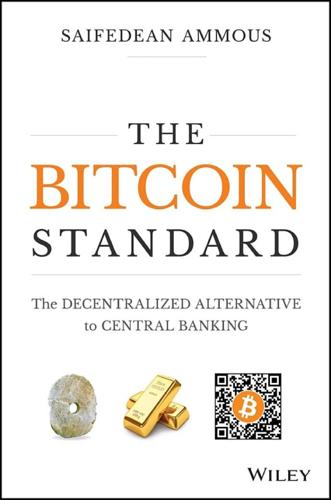
The Bitcoin Standard: The Decentralized Alternative to Central Banking
by
Saifedean Ammous
Published 23 Mar 2018
It is not a tool to be feared, but one to be embraced as an integral part of a peaceful and prosperous future. One high‐profile type of crime that has indeed utilized Bitcoin heavily is ransomware: a method of unauthorized access to computers that encrypts the victims' files and only releases them if the victim makes a payment to the recipient, usually in Bitcoin. While such forms of crime were around before Bitcoin, they have become more convenient to carry out since Bitcoin's invention. This is arguably the best example of Bitcoin facilitating crime. Yet one can simply understand that these ransomware crimes are being built around taking advantage of lax computer security. A company that can have its entire computer system locked up by anonymous hackers demanding a few thousand dollars in Bitcoin has far bigger problems than these hackers.
…
A company that can have its entire computer system locked up by anonymous hackers demanding a few thousand dollars in Bitcoin has far bigger problems than these hackers. The incentive for the hackers may be in the thousands of dollars, but the incentive for the firm's competitors, clients, and suppliers for gaining access to this data can be much higher. In effect, what Bitcoin ransomware has allowed is the detection and exposition of computer security flaws. This process is leading firms to take better security precautions, and causing computer security to grow as an industry. In other words, Bitcoin allows for the monetizing of the computer security market. While hackers can initially benefit from this, in the long run, productive businesses will command the best security resources.

There Is Nothing for You Here: Finding Opportunity in the Twenty-First Century
by
Fiona Hill
Published 4 Oct 2021
no suspicion: Foreign Threats to the 2020 US Federal Elections (McLean, VA:U.S. National Intelligence Council, 2021), https://www.dni.gov/files/ODNI/documents/assessments/ICA-declass-16MAR21.pdf. ransomware attacks: Ellen Nakashima and Jay Greene, “Hospitals being hit in coordinated, targeted ransomware attack from Russian-speaking criminals,” Washington Post, October 29, 2020, https://www.washingtonpost.com/national-security/hospitals-being-hit-in-coordinated-targeted-ransomware-attack-from-russian-speaking-criminals/2020/10/28/e6e48c38-196e-11eb-befb-8864259bd2d8_story.html. penetrate U.S. governmental systems: David E. Sanger, “Russian Hackers Broke into Federal Agencies, U.S.
…
There was little left for him to do: the now former American president was a divisive element in U.S. politics in his own right, not just supported by the traditional Republican Party voter base but also standing at the forefront of a reactionary, increasingly violent populist movement. Still, Putin could not resist doing something to stir the pot and draw attention. In the weeks before the election, criminal groups attributed to Russia had launched ransomware attacks on a handful of hospital systems across the United States. In December 2020, private cybersecurity firms and the U.S. government also revealed that the Russian security services had launched an extensive, sophisticated, and successful attack to penetrate U.S. governmental systems and databases.

Visual Thinking: The Hidden Gifts of People Who Think in Pictures, Patterns, and Abstractions
by
Temple Grandin, Ph.d.
Published 11 Oct 2022
In both the Boeing and Fukushima accidents, I see it: the single sensor breaking, or water coming over the top of the seawalls. Future Dangers The future is here. Numerous ransomware attacks have already occurred. Common hacks have disabled corporations, schools, hospitals, and municipal governments. The hackers break into a computer system and encrypt all its files, compromising a company’s ability to access billing, deliveries to customers, payrolls, hospital records, car registrations, and many other vital systems. To get their files back, corporations or towns pay a ransom fee. These hackers are in it for the money. Two of the biggest such ransomware attacks were at Colonial Pipeline and JBS Foods. The Colonial hack shut down fuel distribution to the East Coast.
…
F., 39 Mars rover, 92–93, 193, 197 Massachusetts General Hospital, 31 Massey University (New Zealand), 259 Masuda, Naohiro, 225–26, 228 mathematics, 28 abstract approach to, 61–63 geniuses in, 179–81 and learning chess, 61 and music, 32, 187 real-world approach to, 56–58, 60–62 requirements for, 56–59 and screening out students, 56–69 studies on, 74–75 testing in, 59, 62–65 those who are poor in, 63–64, 67, 74–75 those who excel at, 35–37, 40, 69–70, 74, 78, 114 See also algebra; spatial visualizers Mather, Jennifer, 267 Max Planck Institute, 265–66 McCormick, Cyrus, 87 McGarrigle, James, 60 Mead, Margaret, 20 meat-processing plants, 218 and animal research, 199 equipment used in, 3–5, 130, 133 internships/jobs in, 114, 118 and object visualizers, 91, 130 protecting animals at, 206 ransomware attack on, 228 mechanical devices, 11 mechanical inventions, 6, 37, 50, 85–96, 105–6, 126–27 mechanical thinkers, 157 medical profession, 9, 52, 63, 96, 108–9 memory. See visual: memory Men, Weiwei, 189 Mendel, Gregor, 166 mental illness, 82, 124 mentors, 66, 128, 158–59, 173, 190, 277 Merle’s Door (Kerasote), 271 Merrimack Valley, Massachusetts, 209–10 metalworkers, 37, 91–92, 96, 129, 175 Michelangelo, 156, 172–74, 190–91 Michigan Tech University, 117 Microsoft, 104–5, 124, 148, 164, 180–81 Millennium Tower (San Francisco), 208–9 Miller, Greg, 187 mirror self-recognition (MSR), 257–59, 266 Mishkin, Mortimer, 26 Mitchell, Charles E., 86 Mitchell, Kevin J., 168–69 Modern Practice of the Electric Telegraph (Pope), 158 Montaigne, Michel de, 241, 259 Moore, Curt, 162–63 Moore, Debra, 78 Morris, Edmund, 157 Mottron, Laurent, 12–13, 43, 66–67, 79–80 MRIs, 23–25, 27, 30, 40, 90, 169–70, 187, 200, 251, 263 Museum of Fine Arts, Boston, 119 music and the brain, 29–30, 169, 187–88, 266 complementary minds and, 150–51 geniuses and, 36, 108, 156, 171, 187, 189 and MRI brain scan, 169 and people with disabilities, 83, 101 public schools and, 51, 53 and visual thinkers, 7, 32, 45, 149–50, 187 Musk, Elon, 183, 190–91 on having Asperger’s, 35, 181–82 childhood of, 35, 182 as college dropout, 70, 124 and hiring workers, 103–4 running own companies, 103–4, 138 as visual thinker, 138–39, 182, 277 Musk, Maye, 182 My Octopus Teacher (film), 267 N NASA, 105, 139 Mars rover and, 92–93 sending chimps into space, 260–61 space program of, 137–38, 193–94 spacesuit collaboration at, 143–45 visual thinkers and, 194 women working at, 69 Nasar, Sylvia, 160 Nash, John, 160–61 Nasmyth, Kim, 46–47 National Assessment of Educational Progress (NAEP), 63 National Association of Colleges and Employers, 117 National Center for Education Statistics (NCES), 67 National Education Association, 51 National Institute of Mental Health, 26 National Parent Teacher Association, 51 National Transportation Safety Board (NTSB), 210 Native Americans, 73, 128, 240 Natural Gas Pipeline Safety Act, 210 Nature, 66–67, 141, 152, 232 Navigating Autism (Grandin and Moore), 78–79 Nazi Germany, 82 Netherlands, 4–5, 95, 200, 257 Netscape, 103–4 neurodiverse people, 119, 174 hiring as workers, 7, 103–7 as object visualizers, 79 neurodiversity, 124, 193 and animals, 164–65 and autism, 80, 164 concept of, 99–100, 159–65 geniuses and, 6, 36, 67, 156, 191 new emphasis on, 102 as term, 159–60 Neuroscience of Creativity, The (Abraham), 185 NeuroTribes (Silberman), 164 neurotypical people, 20, 35, 66, 78–80, 102, 170, 185–86 New Civil Engineer, 209 New York Times, The, 40, 52–53, 58–59, 63–64, 71–73, 79, 149, 162, 211, 217 New York Times Magazine, The, 217 New Yorker, The, 18, 47, 137, 176 Newman, M.

Blockchain Revolution: How the Technology Behind Bitcoin Is Changing Money, Business, and the World
by
Don Tapscott
and
Alex Tapscott
Published 9 May 2016
The explosion in online communication and commerce is creating more opportunities for cybercrime. Moore’s law of the annual doubling of processing power doubles the power of fraudsters and thieves—“Moore’s Outlaws”1—not to mention spammers, identity thieves, phishers, spies, zombie farmers, hackers, cyberbullies, and datanappers—criminals who unleash ransomware to hold data hostage—the list goes on. IN SEARCH OF THE TRUST PROTOCOL As early as 1981, inventors were attempting to solve the Internet’s problems of privacy, security, and inclusion with cryptography. No matter how they reengineered the process, there were always leaks because third parties were involved.
…
Back’s method required e-mailers to provide proof of work when sending the message. It in effect stamped “special delivery” on an e-mail to signal the message’s importance to its sender. “This message is so critical that I’ve spent all this energy in sending it to you.” It increases the costs of sending spam, malware, and ransomware. Anyone can download the bitcoin protocol for free and maintain a copy of the blockchain. It leverages bootstrapping, a technique for uploading the program onto a volunteer’s computer or mobile device through a few simple instructions that set the rest of the program in motion. It’s fully distributed across a volunteer network like BitTorrent, a shared database of intellectual property that resides on tens of thousands of computers worldwide.
…
Security Principle: Safety measures are embedded in the network with no single point of failure, and they provide not only confidentiality, but also authenticity and nonrepudiation to all activity. Anyone who wants to participate must use cryptography—opting out is not an option—and the consequences of reckless behavior are isolated to the person who behaved recklessly. Problem to Be Solved: Hacking, identity theft, fraud, cyberbullying, phishing, spam, malware, ransomware—all of these undermine the security of the individual in society. The first era of the Internet, rather than bringing transparency and impairing violations, seems to have done little to increase security of persons, institutions, and economic activity. The average Internet user often has to rely on flimsy passwords to protect e-mail and online accounts because service providers or employers insist on nothing stronger.
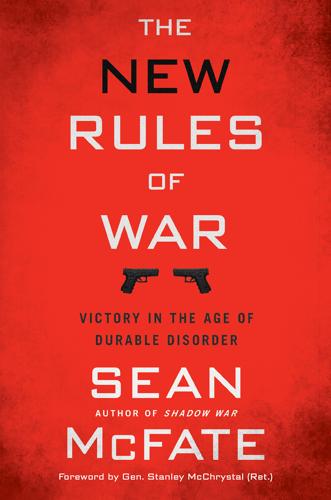
The New Rules of War: Victory in the Age of Durable Disorder
by
Sean McFate
Published 22 Jan 2019
If hackers are choosing targets, and they know that one company has a hack back company behind it and another does not, they select the softer target. Also known as active defense, this practice is currently illegal in many countries, including the United States, but some are questioning this wisdom, since the National Security Agency offers scant protection for nongovernment entities. For example, the WannaCry ransomware attack in 2017 infected more than 230,000 computers in over 150 countries. Victims included the United Kingdom’s National Health Service, Spain’s Telefónica, Germany’s Deutsche Bahn, and US companies like Federal Express. If countries cannot protect their people and organizations from cyberattacks, then why not allow them to protect themselves?
…
See also Russia containment policy, 78–79 “evil empire,” 21 February Revolution, 219–21 Fulda Gap, 33, 103–4 war futurists and, 13–14 Space police force, 69 SpaceX, 138 Spanish-American War, 202 Special operations forces (SOF), 9, 98–99, 248 increasing budget, 24, 37–38 rebalancing of, 40–41 Stalin, Joseph, 96–97, 104, 215 Standards of Training, Certification, and Watchkeeping (STCW), 56 State Department, U.S., 41–42, 71, 209, 217, 232 Stateless wars, 171–93 drug wars, 171–78 private wars, 185–93 redefining war, 179–85 Stethem, USS, 59–63, 270n “Sticky power,” 216, 292n Strategic atrophy, 5–12, 260n Strategic vs. tactical thinking, 233–37 “Structure,” 284n Stuxnet, 16, 201 Subversion, 203–6 Sudanese Civil War, 136, 146, 152, 182 Suez Crisis, 79 Summerall, Charles P., 18 Sunni-Shia divide, 8, 26, 27, 74, 183–84 Sun Tzu, 4, 66, 111, 204–5, 207, 218, 222, 233 Thirty-Six Stratagems, 65, 248, 253–55 Superman strategy, 72 Super-rich, 165–66, 247 hiring mercenaries, 145–46, 151–52, 154–55 Surface warfare officers (SWOs), 55–56 “Symmetrical war,” 29 Syriac Military Council, 145 Syrian Civil War, 27, 32, 101, 149, 168, 244 mercenaries, 132–36 refugees, 104–6 Tacitus, 90 “Tactization” of strategy, 233–37 Taliban, 1, 95, 96, 113, 230 TALOS (Tactical Assault Light Operator Suit), 14, 261n Tamil Tigers, 8, 96 Taylor, Charles, 147–48 Technological utopianism, 46, 48 Technology, 43–57 investing in people vs. machines, 52–57 Lockheed Martin F-35, 43–46, 47 overreliance on, 43–47, 55 Third Offset Strategy, 47–50 war algorithm, 50–51 Technophiles, 13, 14–17, 22–23 Terminator Conundrum, 15 Terrorism, 109–10, 135–36, 153–54 Tet Offensive, 223–26 Thatcher, Margaret, 165 Third Offset Strategy, 47–50, 55, 56, 166 Thirty-Six Stratagems, 190, 205, 206, 248, 253–55 Thirty Years’ War, 30, 74, 187 Thucydides, 212 Thumma, Scott, 143–44 Tibet, 97 Tiger Guards, 145 Titus, 86–87 Ton Son Nhut Air Base, 224 Treasury Department, U.S., 41–42 Treaty of Brest-Litovsk, 220–21 Trinquier, Roger, 95 Triple Canopy, 131, 136 “Troll Factory,” 201–3 Trolls, 111, 214 Truman, Harry, 2, 79 Trump, Donald, 46, 70, 130, 158, 159, 167, 168, 202 Turkey, 162–63 Turkistan Islamic Party, 135–36 Twelfth Legion, 84–86 Ukraine, Orange Revolution, 112–13, 215 Ukrainian conflict, 64, 134–35, 195–98, 199–200, 203, 245 UkrTransNafta, 135 Unconventional wars, 28 number of, 35–36, 36 redefining war, 179–85 use of term, 29 Uniform Code of Military Justice, 101–2 United Arab Emirates, 134, 140 United Fruit Company, 208–9, 211 United Nations (UN), 3, 9, 32, 81, 139 Law of the Sea, 68 outsourcing peacekeeping, 280–81n peacekeeping missions, 2, 8, 32, 136, 146, 148, 153 Unrestricted Warfare (Qiao and Wang), 65 US Agency for International Development (USAID), 41–42 “Utility of force,” 106–8 Utopia (More), 127 Uzbekistan, 135, 153 “Vanishing point of law,” 139 Varangian Guard, 127 Velvet regime change, 112–13 Vercingetorix, 126 Vespasian, 86 Victory, 219–40 choosing weapon of war, 229–31 developing war artists, 237–40 February Revolution, 219–21 myth of bifurcated, 232–33, 235 secret to winning, 221–23 “tactization” of strategy, 233–37 use of term, 221–22 Vietnam War and, 223–29 Vietnam War, 1, 96, 122, 211, 223–29, 232–33 Wagner Group, 132, 133, 134 Wall Street, 165–66 WannaCry ransomware attack, 137–38 War algorithm, 50–51 War and peace, 59–82 exploding heads, 70–74 grand strategy, 74–82 nonwar wars, 64–70 South China Sea incident of 2017, 59–63 War artists, 237–40, 247 War colleges, 235–40 War dogs, 121–25 Warfare, 4, 6 war vs., 27–28 War futurists, 11–17 Billy Mitchell, 17–19, 20 Cassandra’s Curse, 20 false prophets, 12–17 identifying, 20–22 Warlords, 147–48, 149, 156–57, 182, 193 War of Eight Saints, 26–27 War on Drugs, 175, 176 Warrior-diplomats, 41 “War termination,” 246 War without states.

I, Warbot: The Dawn of Artificially Intelligent Conflict
by
Kenneth Payne
Published 16 Jun 2021
Questions of attribution feature prominently in the debate about cyber warfare. How do you know who has attacked you? But attribution seems not to be the conundrum that many suppose—if high quality investigative reporters can glean insights as to who was responsible for an attack (the US and Israel for Stuxnet; North Korea for the WannaCry ransomware), then the extensive resources of state security apparatus will often be able to do likewise. The Mueller inquiry into foreign interference in the 2016 US Presidential election provided an insight into these formidable capabilities, as US investigators indicted a number of Russian nationals on charges of hacking American computers.
…
A-10 Warthog abacuses Abbottabad, Pakistan Able Archer (1983) acoustic decoys acoustic torpedoes Adams, Douglas Aegis combat system Aerostatic Corps affective empathy Affecto Afghanistan agency aircraft see also dogfighting; drones aircraft carriers algorithms algorithm creation Alpha biases choreography deep fakes DeepMind, see DeepMind emotion recognition F-117 Nighthawk facial recognition genetic selection imagery analysis meta-learning natural language processing object recognition predictive policing alien hand syndrome Aliens (1986 film) Alpha AlphaGo Altered Carbon (television series) Amazon Amnesty International amygdala Andropov, Yuri Anduril Ghost anti-personnel mines ants Apple Aristotle armour arms races Army Research Lab Army Signal Corps Arnalds, Ólafur ARPA Art of War, The (Sun Tzu) art Artificial Intelligence agency and architecture autonomy and as ‘brittle’ connectionism definition of decision-making technology expert systems and feedback loops fuzzy logic innateness intelligence analysis meta-learning as ‘narrow’ needle-in-a-haystack problems neural networks reinforcement learning ‘strong AI’ symbolic logic and unsupervised learning ‘winters’ artificial neural networks Ashby, William Ross Asimov, Isaac Asperger syndrome Astute class boats Atari Breakout (1976) Montezuma’s Revenge (1984) Space Invaders (1978) Athens ATLAS robots augmented intelligence Austin Powers (1997 film) Australia authoritarianism autonomous vehicles see also drones autonomy B-21 Raider B-52 Stratofortress B2 Spirit Baby X BAE Systems Baghdad, Iraq Baidu balloons ban, campaigns for Banks, Iain Battle of Britain (1940) Battle of Fleurus (1794) Battle of Midway (1942) Battle of Sedan (1940) batwing design BBN Beautiful Mind, A (2001 film) beetles Bell Laboratories Bengio, Yoshua Berlin Crisis (1961) biases big data Bin Laden, Osama binary code biological weapons biotechnology bipolarity bits Black Lives Matter Black Mirror (television series) Blade Runner (1982 film) Blade Runner 2049 (2017 film) Bletchley Park, Buckinghamshire blindness Blunt, Emily board games, see under games boats Boden, Margaret bodies Boeing MQ-25 Stingray Orca submarines Boolean logic Boston Dynamics Bostrom, Nick Boyd, John brain amygdala bodies and chunking dopamine emotion and genetic engineering and language and mind merge and morality and plasticity prediction and subroutines umwelts and Breakout (1976 game) breathing control brittleness brute force Buck Rogers (television series) Campaign against Killer Robots Carlsen, Magnus Carnegie Mellon University Casino Royale (2006 film) Castro, Fidel cat detector centaur combination Central Intelligence Agency (CIA) centre of gravity chaff Challenger Space Shuttle disaster (1986) Chauvet cave, France chemical weapons Chernobyl nuclear disaster (1986) chess centaur teams combinatorial explosion and creativity in Deep Blue game theory and MuZero as toy universe chicken (game) chimeras chimpanzees China aircraft carriers Baidu COVID-19 pandemic (2019–21) D-21 in genetic engineering in GJ-11 Sharp Sword nuclear weapons surveillance in Thucydides trap and US Navy drone seizure (2016) China Lake, California Chomsky, Noam choreography chunking Cicero civilians Clarke, Arthur Charles von Clausewitz, Carl on character on culmination on defence on genius on grammar of war on materiel on nature on poker on willpower on wrestling codebreaking cognitive empathy Cold War (1947–9) arms race Berlin Crisis (1961) Cuban Missile Crisis (1962) F-117 Nighthawk Iran-Iraq War (1980–88) joint action Korean War (1950–53) nuclear weapons research and SR-71 Blackbird U2 incident (1960) Vienna Summit (1961) Vietnam War (1955–75) VRYAN Cole, August combinatorial creativity combinatorial explosion combined arms common sense computers creativity cyber security games graphics processing unit (GPU) mice Moore’s Law symbolic logic viruses VRYAN confirmation bias connectionism consequentialism conservatism Convention on Conventional Weapons ConvNets copying Cormorant cortical interfaces cost-benefit analysis counterfactual regret minimization counterinsurgency doctrine courageous restraint COVID-19 pandemic (2019–21) creativity combinatorial exploratory genetic engineering and mental disorders and transformational criminal law CRISPR, crows Cruise, Thomas Cuban Missile Crisis (1962) culmination Culture novels (Banks) cyber security cybernetics cyborgs Cyc cystic fibrosis D-21 drones Damasio, Antonio dance DARPA autonomous vehicle research battlespace manager codebreaking research cortical interface research cyborg beetle Deep Green expert system programme funding game theory research LongShot programme Mayhem Ng’s helicopter Shakey understanding and reason research unmanned aerial combat research Dartmouth workshop (1956) Dassault data DDoS (distributed denial-of-service) dead hand system decision-making technology Deep Blue deep fakes Deep Green DeepMind AlphaGo Atari playing meta-learning research MuZero object recognition research Quake III competition (2019) deep networks defence industrial complex Defence Innovation Unit Defence Science and Technology Laboratory defence delayed gratification demons deontological approach depth charges Dionysus DNA (deoxyribonucleic acid) dodos dogfighting Alpha domains dot-matrix tongue Dota II (2013 game) double effect drones Cormorant D-21 GJ-11 Sharp Sword Global Hawk Gorgon Stare kamikaze loitering munitions nEUROn operators Predator Reaper reconnaissance RQ-170 Sentinel S-70 Okhotnik surveillance swarms Taranis wingman role X-37 X-47b dual use technology Eagleman, David early warning systems Echelon economics Edge of Tomorrow (2014 film) Eisenhower, Dwight Ellsberg, Daniel embodied cognition emotion empathy encryption entropy environmental niches epilepsy epistemic community escalation ethics Asimov’s rules brain and consequentialism deep brain stimulation and deontological approach facial recognition and genetic engineering and golden rule honour hunter-gatherer bands and identity just war post-conflict reciprocity regulation surveillance and European Union (EU) Ex Machina (2014 film) expert systems exploratory creativity extra limbs Eye in the Sky (2015 film) F-105 Thunderchief F-117 Nighthawk F-16 Fighting Falcon F-22 Raptor F-35 Lightning F/A-18 Hornet Facebook facial recognition feedback loops fighting power fire and forget firmware 5G cellular networks flow fog of war Ford forever wars FOXP2 gene Frahm, Nils frame problem France Fukushima nuclear disaster (2011) Future of Life Institute fuzzy logic gait recognition game theory games Breakout (1976) chess, see chess chicken Dota II (2013) Go, see Go Montezuma’s Revenge (1984) poker Quake III (1999) Space Invaders (1978) StarCraft II (2010) toy universes zero sum games gannets ‘garbage in, garbage out’ Garland, Alexander Gates, William ‘Bill’ Gattaca (1997 film) Gavotti, Giulio Geertz, Clifford generalised intelligence measure Generative Adversarial Networks genetic engineering genetic selection algorithms genetically modified crops genius Germany Berlin Crisis (1961) Nuremburg Trials (1945–6) Russian hacking operation (2015) World War I (1914–18) World War II (1939–45) Ghost in the Shell (comic book) GJ-11 Sharp Sword Gladwell, Malcolm Global Hawk drone global positioning system (GPS) global workspace Go (game) AlphaGo Gödel, Kurt von Goethe, Johann golden rule golf Good Judgment Project Google BERT Brain codebreaking research DeepMind, see DeepMind Project Maven (2017–) Gordievsky, Oleg Gorgon Stare GPT series grammar of war Grand Challenge aerial combat autonomous vehicles codebreaking graphics processing unit (GPU) Greece, ancient grooming standard Groundhog Day (1993 film) groupthink guerilla warfare Gulf War First (1990–91) Second (2003–11) hacking hallucinogenic drugs handwriting recognition haptic vest hardware Harpy Hawke, Ethan Hawking, Stephen heat-seeking missiles Hebrew Testament helicopters Hellfire missiles Her (2013 film) Hero-30 loitering munitions Heron Systems Hinton, Geoffrey Hitchhiker’s Guide to the Galaxy, The (Adams) HIV (human immunodeficiency viruses) Hoffman, Frank ‘Holeshot’ (Cole) Hollywood homeostasis Homer homosexuality Hongdu GJ-11 Sharp Sword honour Hughes human in the loop human resources human-machine teaming art cyborgs emotion games King Midas problem prediction strategy hunter-gatherer bands Huntingdon’s disease Hurricane fighter aircraft hydraulics hypersonic engines I Robot (Asimov) IARPA IBM identity Iliad (Homer) image analysis image recognition cat detector imagination Improbotics nformation dominance information warfare innateness intelligence analysts International Atomic Energy Agency International Criminal Court international humanitarian law internet of things Internet IQ (intelligence quotient) Iran Aegis attack (1988) Iraq War (1980–88) nuclear weapons Stuxnet attack (2010) Iraq Gulf War I (1990–91) Gulf War II (2003–11) Iran War (1980–88) Iron Dome Israel Italo-Turkish War (1911–12) Jaguar Land Rover Japan jazz JDAM (joint directed attack munition) Jeopardy Jobs, Steven Johansson, Scarlett Johnson, Lyndon Joint Artificial Intelligence Center (JAIC) de Jomini, Antoine jus ad bellum jus in bello jus post bellum just war Kalibr cruise missiles kamikaze drones Kasparov, Garry Kellogg Briand Pact (1928) Kennedy, John Fitzgerald KGB (Komitet Gosudarstvennoy Bezopasnosti) Khrushchev, Nikita kill chain King Midas problem Kissinger, Henry Kittyhawk Knight Rider (television series) know your enemy know yourself Korean War (1950–53) Kratos XQ-58 Valkyrie Kubrick, Stanley Kumar, Vijay Kuwait language connectionism and genetic engineering and natural language processing pattern recognition and semantic webs translation universal grammar Law, Jude LeCun, Yann Lenat, Douglas Les, Jason Libratus lip reading Litvinenko, Alexander locked-in patients Lockheed dogfighting trials F-117 Nighthawk F-22 Raptor F-35 Lightning SR-71 Blackbird logic loitering munitions LongShot programme Lord of the Rings (2001–3 film trilogy) LSD (lysergic acid diethylamide) Luftwaffe madman theory Main Battle Tanks malum in se Manhattan Project (1942–6) Marcus, Gary Maslow, Abraham Massachusetts Institute of Technology (MIT) Matrix, The (1999 film) Mayhem McCulloch, Warren McGregor, Wayne McNamara, Robert McNaughton, John Me109 fighter aircraft medical field memory Merkel, Angela Microsoft military industrial complex Mill, John Stuart Milrem mimicry mind merge mind-shifting minimax regret strategy Minority Report (2002 film) Minsky, Marvin Miramar air base, San Diego missiles Aegis combat system agency and anti-missile gunnery heat-seeking Hellfire missiles intercontinental Kalibr cruise missiles nuclear warheads Patriot missile interceptor Pershing II missiles Scud missiles Tomahawk cruise missiles V1 rockets V2 rockets mission command mixed strategy Montezuma’s Revenge (1984 game) Moore’s Law mosaic warfare Mueller inquiry (2017–19) music Musk, Elon Mutually Assured Destruction (MAD) MuZero Nagel, Thomas Napoleon I, Emperor of the French Napoleonic France (1804–15) narrowness Nash equilibrium Nash, John National Aeronautics and Space Administration (NASA) National Security Agency (NSA) National War College natural language processing natural selection Nature navigation computers Nazi Germany (1933–45) needle-in-a-haystack problems Netflix network enabled warfare von Neumann, John neural networks neurodiversity nEUROn drone neuroplasticity Ng, Andrew Nixon, Richard normal accident theory North Atlantic Treaty Organization (NATO) North Korea nuclear weapons Cuban Missile Crisis (1962) dead hand system early warning systems F-105 Thunderchief and game theory and Hiroshima and Nagasaki bombings (1945) Manhattan Project (1942–6) missiles Mutually Assured Destruction (MAD) second strike capability submarines and VRYAN and in WarGames (1983 film) Nuremburg Trials (1945–6) Obama, Barack object recognition Observe Orient Decide and Act (OODA) offence-defence balance Office for Naval Research Olympic Games On War (Clausewitz), see Clausewitz, Carl OpenAI optogenetics Orca submarines Ottoman Empire (1299–1922) pain Pakistan Palantir Palmer, Arnold Pandemonium Panoramic Research Papert, Seymour Parkinson’s disease Patriot missile interceptors pattern recognition Pearl Harbor attack (1941) Peloponnesian War (431–404 BCE) Pentagon autonomous vehicle research codebreaking research computer mouse development Deep Green Defence Innovation Unit Ellsberg leaks (1971) expert system programme funding ‘garbage in, garbage out’ story intelligence analysts Project Maven (2017–) Shakey unmanned aerial combat research Vietnam War (1955–75) perceptrons Perdix Pershing II missiles Petrov, Stanislav Phalanx system phrenology pilot’s associate Pitts, Walter platform neutrality Pluribus poker policing polygeneity Portsmouth, Hampshire Portuguese Man o’ War post-traumatic stress disorder (PTSD) Predator drones prediction centaur teams ‘garbage in, garbage out’ story policing toy universes VRYAN Prescience principles of war prisoners Project Improbable Project Maven (2017–) prosthetic arms proximity fuses Prussia (1701–1918) psychology psychopathy punishment Putin, Vladimir Pyeongchang Olympics (2018) Qinetiq Quake III (1999 game) radar Rafael RAND Corporation rational actor model Rawls, John Re:member (Arnalds) Ready Player One (Cline) Reagan, Ronald Reaper drones reciprocal punishment reciprocity reconnaissance regulation ban, campaigns for defection self-regulation reinforcement learning remotely piloted air vehicles (RPAVs) revenge porn revolution in military affairs Rid, Thomas Robinson, William Heath Robocop (1987 film) Robotics Challenge robots Asimov’s rules ATLAS Boston Dynamics homeostatic Shakey symbolic logic and Rome Air Defense Center Rome, ancient Rosenblatt, Frank Royal Air Force (RAF) Royal Navy RQ-170 Sentinel Russell, Stuart Russian Federation German hacking operation (2015) Litvinenko murder (2006) S-70 Okhotnik Skripal poisoning (2018) Ukraine War (2014–) US election interference (2016) S-70 Okhotnik SAGE Said and Done’ (Frahm) satellite navigation satellites Saudi Arabia Schelling, Thomas schizophrenia Schwartz, Jack Sea Hunter security dilemma Sedol, Lee self-actualisation self-awareness self-driving cars Selfridge, Oliver semantic webs Shakey Shanahan, Murray Shannon, Claude Shogi Silicon Valley Simon, Herbert Single Integrated Operations Plan (SIOP) singularity Siri situational awareness situationalist intelligence Skripal, Sergei and Yulia Slaughterbots (2017 video) Slovic, Paul smartphones Smith, Willard social environments software Sophia Sorcerer’s Apprentice, The (Goethe) South China Sea Soviet Union (1922–91) aircraft Berlin Crisis (1961) Chernobyl nuclear disaster (1986) Cold War (1947–9), see Cold War collapse (1991) Cuban Missile Crisis (1962) early warning systems Iran-Iraq War (1980–88) Korean War (1950–53) nuclear weapons radar technology U2 incident (1960) Vienna Summit (1961) Vietnam War (1955–75) VRYAN World War II (1939–45) Space Invaders (1978 game) SpaceX Sparta Spike Firefly loitering munitions Spitfire fighter aircraft Spotify Stanford University Stanley Star Trek (television series) StarCraft II (2010 game) stealth strategic bombing strategic computing programme strategic culture Strategy Robot strategy Strava Stuxnet sub-units submarines acoustic decoys nuclear Orca South China Sea incident (2016) subroutines Sukhoi Sun Tzu superforecasting surveillance swarms symbolic logic synaesthesia synthetic operation environment Syria Taliban tanks Taranis drone technological determinism Tempest Terminator franchise Tesla Tetlock, Philip theory of mind Threshold Logic Unit Thucydides TikTok Tomahawk cruise missiles tongue Top Gun (1986 film) Top Gun: Maverick (2021 film) torpedoes toy universes trade-offs transformational creativity translation Trivers, Robert Trump, Donald tumours Turing, Alan Twitter 2001: A Space Odyssey (1968 film) Type-X Robotic Combat Vehicle U2 incident (1960) Uber Uexküll, Jacob Ukraine ultraviolet light spectrum umwelts uncanny valley unidentified flying objects (UFOs) United Kingdom AI weapons policy armed force, size of Battle of Britain (1940) Bletchley Park codebreaking Blitz (1940–41) Cold War (1947–9) COVID-19 pandemic (2019–21) DeepMind, see DeepMind F-35 programme fighting power human rights legislation in Litvinenko murder (2006) nuclear weapons principles of war Project Improbable Qinetiq radar technology Royal Air Force Royal Navy Skripal poisoning (2018) swarm research wingman concept World War I (1914–18) United Nations United States Afghanistan War (2001–14) Air Force Army Research Lab Army Signal Corps Battle of Midway (1942) Berlin Crisis (1961) Bin Laden assassination (2011) Black Lives Matter protests (2020) centaur team research Central Intelligence Agency (CIA) Challenger Space Shuttle disaster (1986) Cold War (1947–9), see Cold War COVID-19 pandemic (2019–21) Cuban Missile Crisis (1962) culture cyber security DARPA, see DARPA Defense Department drones early warning systems F-35 programme Gulf War I (1990–91) Gulf War II (2003–11) IARPA Iran Air shoot-down (1988) Korean War (1950–53) Manhattan Project (1942–6) Marines Mueller inquiry (2017–19) National Security Agency National War College Navy nuclear weapons Office for Naval Research Patriot missile interceptor Pearl Harbor attack (1941) Pentagon, see Pentagon Project Maven (2017–) Rome Air Defense Center Silicon Valley strategic computing programme U2 incident (1960) Vienna Summit (1961) Vietnam War (1955–75) universal grammar Universal Schelling Machine (USM) unmanned aerial vehicles (UAVs), see drones unsupervised learning utilitarianism UVision V1 rockets V2 rockets Vacanti mouse Valkyries Van Gogh, Vincent Vietnam War (1955–75) Vigen, Tyler Vincennes, USS voice assistants VRYAN Wall-e (2008 film) WannaCry ransomware War College, see National War College WarGames (1983 film) warrior ethos Watson weapon systems WhatsApp Wiener, Norbert Wikipedia wingman role Wittgenstein, Ludwig World War I (1914–18) World War II (1939–45) Battle of Britain (1940) Battle of Midway (1942) Battle of Sedan (1940) Bletchley Park codebreaking Blitz (1940–41) Hiroshima and Nagasaki bombings (1945) Pearl Harbor attack (1941) radar technology V1 rockets V2 rockets VRYAN and Wrangham, Richard Wright brothers WS-43 loitering munitions Wuhan, China X-37 drone X-drone X-rays YouTube zero sum games

Future Politics: Living Together in a World Transformed by Tech
by
Jamie Susskind
Published 3 Sep 2018
Some of the hacks we hear about today are reasonably funny, like when a ‘smart’ toilet was reprogrammed to fire jets of water onto the backside of its unfortunate user.56 Others, however, are more sinister, like the ‘smart’ doll that could be reprogrammed to listen and speak to the toddler playing with it.57 Still others are deeply troubling: in 2016, ‘ransomware’ held hostage people’s medical records until insurance companies paid $20 million.58 The scale of the problem is serious. A study of ‘critical infrastructure companies’ in 2014 revealed that in the previous year nearly 70 per cent of them had suffered at least one security breach leading to the loss of confidential information OUP CORRECTED PROOF – FINAL, 30/05/18, SPi РЕЛИЗ ПОДГОТОВИЛА ГРУППА "What's News" VK.COM/WSNWS Freedom and the Supercharged State 183 or disruption of operations.
…
32 OUP CORRECTED PROOF – FINAL, 28/05/18, SPi РЕЛИЗ ПОДГОТОВИЛА ГРУППА "What's News" VK.COM/WSNWS Index Jie, Ke 32 job applicants 266–7, 268 Jobs, Steve 314 Johnson, Bobby 399 Johnson, Steve 427 Jones, Steve 388 Jøsang, Audun 423 Jouppi, Norm 375 judicial system 102 Jury Theorem 224 justice algorithmic injustice 279–94 civil 259 concept 74–5, 76 conceptual analysis 81 criminal 259 as desert 260–1 as dessert 261, 262 distributive 257–70, 274, 278 and equality, difference between 259 fairness principle 353 property 313–41 in recognition 260, 271–8 social see social justice technological unemployment 295–312 Justinian, Emperor 202 Kahane, Guy 434 Kant, Immanuel 186, 272, 406 Karrahalios, Karrie 433 Kasparov, Garry 31, 36, 373 Kassarnig,Valentin 372 Keen, Andrew 376 Kelion, Leo 413 Kellmereit, Daniel 380 Kelly, Kevin 20, 21, 370, 373, 374, 375, 430 Kelly, Rick 384, 385 Kelly III, John E. 386, 388 Kelsen, Hans 103, 392 Kennedy, John F. 164, 188, 347 Kennedy, Robert F. 256 Keurig 116 Khatchadourian, Raffi 52, 382 503 Khomami, Nadia 397 Al-Khwār izmī, Abd’Abdallah Muhammad ibn Mūsā 94 Kim, Mark 376 King, Martin Luther 6, 180, 257, 360, 404 Kirchner, Lauren 403 Kirobo Mini 55 Kitchin, Rob 376, 377, 380, 381, 387, 388, 391, 404 Klaas, Brian 408 Kleinman, Zoe 383 Knockel, Jeffrey 399 Koch brothers 230 Kolhatkar, Sheelah 367, 423 Kollanyi, Bence 413 Korea 20 Kotler, Steven 374, 435 Krasodomski-Jones, Alex 412 Kurzweil, Ray 38, 366, 374, 436 Kymlicka, Will 418 labour market 303 Lai, Richard 386 Lampos,Vasileios 393 Landemore, Hélène 408, 411, 416 Laney, Doug 431 Langbort, Cedric 433 language importance to politics 16–17, 19 limits of 10–11 political concepts 76–80 public and private power 157 Lanier, Jaron 367, 374, 384, 400, 416, 419, 428, 431, 435 Data Deal 338 human enhancement 363 network effect 321 Silicon Valley startups 6–7 Wiki Democracy 246 Lant, Karla 376 Laouris,Yiannis 435 Large Hadron Collider 65 Larkin,Yelena 427 Larson, Jeff 403, 422 Larson, Selena 370, 421 OUP CORRECTED PROOF – FINAL, 28/05/18, SPi РЕЛИЗ ПОДГОТОВИЛА ГРУППА "What's News" VK.COM/WSNWS 504 Index law adaptive 107–10 AI Democracy 253 AI systems 31 code-ified 110–12, 245 digital 100–14 dissent 179–80 enforcement 101–7 intellectual property 332 justice in recognition 274–5 oral cultures 111–12 rule of 115 self-enforcing 101–3 supercharged state 171–2 wise restraints 185–6 written 111, 112 Lawrence, Neil 374, 388, 427 Leftwich, Adrian 389 Lenin,Vladimir Ilyich 21, 153, 370 Leonardo Da Vinci 28 Lessig, Lawrence 391, 392, 394, 420, 433 code as law 96 cyberspace as a place 97 free software 359 law enforcement through force 104, 105 privatization of force 100, 117 Leta Jones, Meg 138, 397, 432 Levellers 215–16 Levy, Steven 404 Lewis, Michael 428 liberal democracy 216–17, 246, 254 liberal-democratic principle of legitimacy 350 liberalism 77, 350 liberty 3, 10, 23, 346 concept 74–5, 76 conceptual analysis 81 contextual analysis 84 Deliberative Democracy 234 and democracy 207–8, 222, 225, 249 digital 205–7 digital dissent 179–84 digital liberation 168–71 harm principle 195–205 human enhancement 363 nature of politics 74 price mechanism 270 and private power 189–94 supercharged state 171–9 and the tech firm 188–208 transparency regulation 355 types 164–8 wise restraints 184–6 see also freedom Library of Congress 56 life-logs 63 Lincoln, Abraham 89, 210, 231, 323 Linn, Allison 398 Linux 243–4, 245, 333 Lipińska,Veronika 435 lip-reading 30 liquid democracy 242 Lively, J. 409 Livingston, James 425 Livy 216 loans, and distributive justice 267, 268 Locke, John 216, 246, 301, 323, 429 loomio.org 234 Lopatto, Elizabeth 434 lottery, work distribution via 304 Loveluck, Benjamin 378 Luca, Michael 423 luck egalitarianism 262, 307 Luddites 13 Lukes, Steven 390–1, 395, 398 Luxemburg, Rosa 348, 432 Lynch, Jack 384 Machiavelli, Niccolò 188, 217, 406, 409 machine learning 34–7, 266 algorithmic injustice 293 commons 332 data-based injustice 282 Data Democracy 248 data’s economic importance 317 distributive justice 267 future of code 98 group membership fallacy 284 OUP CORRECTED PROOF – FINAL, 28/05/18, SPi РЕЛИЗ ПОДГОТОВИЛА ГРУППА "What's News" VK.COM/WSNWS Index increasingly quantified society 61 liberty and private power 191 political campaigning 220 predictions 139, 173, 175 productive technologies 316 rule-based injustice 284 MacKinnon, Rebecca 396 Madison, James 216, 241, 369, 415 MagicLeap 59 Maistre, Joseph de 101 make-work 304 manipulation 93, 122 code 96, 97 digital liberation 170–1 harm principle 200 Mannheim, Karl 78, 390 Manyika, James 424 Mao, Huina 416 Marconi, Guglielmo 21 marginalization 273 Margretts, Helen 410 market system, and distributive justice 264–5 Markoff, John 400, 413 Martinez, Peter 413 Marx, Karl 367, 390, 398, 415, 417, 424, 425, 429, 434, 436 Communist Manifesto 326–7, 362 Direct Democracy 240–1 future of political ideas 86 justice 258 perception-control 144 on philosophers 7 political concepts 78 property 324, 326–7 sorcerer 366 workers 295, 298, 301, 307 Mason, Paul 374 Massachusetts Institute of Technology see MIT Mattu, Surya 403 Maxim, Hiram 20 Mayer-Schönberger,Viktor 387, 388, 395, 397, 427, 433 data 62, 65 forgetting versus remembering 137 505 Mayr, Otto 14, 368 McAfee, Andrew 374, 382, 390, 393, 427, 431 capital 315, 316, 334 McChesney, Robert W. 400, 427 McDermott, Daniel 390 McGinnis, John O. 416 McKinsey 295, 299 Mearian, Lucas 386 MedEthEx 108 medicine 3D printing 56–7 AI systems 31, 32, 108–9, 113 digital law 112–13 increasingly integrated technology 51, 54, 56–7 ransomware 182 robotics 54 technological unemployment 300 Medium 183 memory 136–8 Merchant, Brian 430 merit, and distributive justice 261 Mesthene, Emmanuel G. 368 metadata 63 Metcalfe’s Law 320 Metz, Cade 372, 373, 374, 375, 380 Metz, Rachel 407 Michaely, Roni 427 Microsoft acquisitions 318 chips 40 commons 332 concentration of tech industry 318, 320 Global Internet Forum to Counter Terrorism 191 HoloLens 59 patents 315 speech-recognition AI system 30 Tay 37, 346 might is right 349 military AI systems 31 brain–computer interfaces 48 sensors 50 OUP CORRECTED PROOF – FINAL, 28/05/18, SPi РЕЛИЗ ПОДГОТОВИЛА ГРУППА "What's News" VK.COM/WSNWS 506 Index Mill, James 195 Mill, John Stuart 367, 403, 406–7, 411, 414, 415 change, need for 3 Deliberative Democracy 234 democracy 223 freedom of speech, constraints on 237 harm principle 196, 198, 199, 203 liberty 195–6, 201, 203 liquid democracy 242 normative analysis 83 predictions 173 upbringing 195 Miller, David 435 Mills, Laurence 418 Milton, John 124, 167, 395 minstrel accounts 232 Mirani, Leo 396 Miremadi, Mehdi 424 Misra, Tanvi 377 MIT affective computing 53 bomb-detecting spinach 50–1 Senseable City Lab 50 Technology Review Custom 427 temporary tattoos for smartphone control 51 Mitchell, Margaret 403 Mitchell, William J. 183, 376, 405 Mizokami, Kyle 379 Moley 407 Momentum Machines 299 Montesquieu, Charles de Secondat, Baron de 358, 433 Moore, Gordon 39, 374 Moore’s Law 39–40, 41 morality AI Democracy 253 automation of 176–7 Data Democracy 249–50 Direct Democracy 240 fragmented 204, 231 harm principle 200–5 justice in distribution 261 see also ethics Moravec’s paradox 54, 382 More, Max 402, 434 Morgan, J.
…
A. 389 Pokémon Go 58 political campaigning 219–20 political concepts 74–80 political hacking 180–2 political speeches 31, 360–1 political theory 80–5 conceptual analysis 81–3, 84–5 contextual analysis 84–5 future of 84–5 normative analysis 83–5 promise of 9–11 politicians Direct Democracy 240–1, 243 technocratic 251 politics definition 74 nature of 70–4 of politics 72 post-truth 230–1, 237 of prediction 172–6 task of 346 of tech firms 156–9 Popper, Ben 381 Portugal 50 post-politics 362–6 post-truth politics 230–1, 237 Potts, Amanda 422 power 3, 10, 22–3, 89, 345–6 code as 95–7, 154–5 concept 75, 76 conceptual analysis 81 definition 92 digital technology 94–8 faces of 92–3 force 100–21 and liberty 189–94 nature of 90–2 nature of politics 74 perception-control 142–52 private 153–60, 189–94 public 153–60 range of 91–2, 158 scrutiny 122–41 separation of powers 358–9 and significance 92, 158 stability of 92, 158 structural regulation 356, 357–9 supercharged state 347–8 tech firms 348–54 pragmatism 349 predictability of behaviour 127, 138–9 prediction Data Democracy 250 politics of 172–6 totalitarianism 177 predictive policing 174, 176 predictive sentencing 174, 176 preliterate societies 111–12 Preotiuc, Daniel 393 pricing mechanism 269–70, 286 Prince, Matthew 414 Princeton Review 286 printing technology 3D printing 56–7, 178, 329 4D printing 57 Gutenberg’s press 20, 62–3 prioritarians 260 Pritchard, Tom 405 Private Property Paradigm 323–7, 336 privatization of force 100, 114–19 OUP CORRECTED PROOF – FINAL, 28/05/18, SPi РЕЛИЗ ПОДГОТОВИЛА ГРУППА "What's News" VK.COM/WSNWS Index productive technologies 316–17 state ownership 329 taxation 328 profit, rights of 330–1 Promobot 55–6 property 313–41 capital 314–17 concentration of 318–22 concept 77, 78 conceptual analysis 82–3 future 327 new paradigm 327–40 Private Property Paradigm 323–7 types of 324 Wealth Cyclone 322–3 ProPublica 174 Proteus Biomedical 51 Protocols of the Elders of Zion 232 proxy votes 242 public utilities, similarity of tech firms to 157–8 Qin dynasty 131 quantum computers 40 Quantum Dot Cellular Automata (QDCA) technology 41 race/racism data-based injustice 282 neutrality fallacy 288, 289, 290 recidivism prediction 174 rule-based injustice 283, 285 Radicati Group Inc. 387 Ralph Lauren 44 ranking, digital 276–8 algorithmic injustice 289–90 ransomware 182 rateability of life 139–40, 277 rational ignorance, problem of 241 Ratner, Paul 383 Rawls, John 389, 404, 417, 419, 432 justice 257, 258, 262–3 political hacking 181 political theory 9 reality, fragmented 229–31, 237 real property 324 509 recognition, algorithms of 260, 275–8 Reddit 77 regulation of tech firms 350–1, 354–9 reinforcement learning (AI) 35 Remnick, David 367, 412 representative democracy 218, 240, 248 republican freedom 167–8, 184 and democracy 222 and private power 191 wise restraints 185 Republican Party (US) 229 reputation.com 290 reputation systems 289–90 resources, limited 365 responsibility, individual 346–7 Reuters 405 revolution concept 77, 78 Richards, Thomas 369 Rieff, David 397 right to explanation 354 usufructuary 330–1 to work 304–5, 307 Riley v.

MegaThreats: Ten Dangerous Trends That Imperil Our Future, and How to Survive Them
by
Nouriel Roubini
Published 17 Oct 2022
On the production side, positive supply shocks occur when productivity gets a sharp boost from favorable changes in technology, labor supply, or regulation. Recall the internet’s impact on efficiency in the workplace. Conversely, sudden drop-offs in production cause negative aggregate supply shocks—such as the ransomware attacks that shut down major US suppliers of oil and beef in 2021 or more severely the Russian invasion of Ukraine that spiked a wide range of commodity prices. Anyone old enough to remember lines at gas pumps during the 1970s knows what a global oil-supply shock looks like. Even the COVID-19 crisis was a combination of a negative demand and supply shock as we shut down economic activity to stop the spread of the virus.
…
Unlike regulated banks that cater to customers with a weak grasp of their portfolios, purveyors of cryptocurrencies furnish almost no protections. If private keys are forgotten, lost, hacked, or stolen, crypto wealth can vanish with no way to recover it. Because decentralized transactions evade monitoring, the market lures unsavory activities like money laundering, tax evasion, human trafficking, terrorism, criminal financing, and ransomware attacks. Digital “stablecoins” supposedly pegged one-to-one to the dollar or other fiat currencies are also suspect. If they are backed by risky assets, tumbling market value can trigger runs that rattle the crypto market and far beyond. In 2008, few assets seemed safer than money market securities with net asset value anchored to parity.
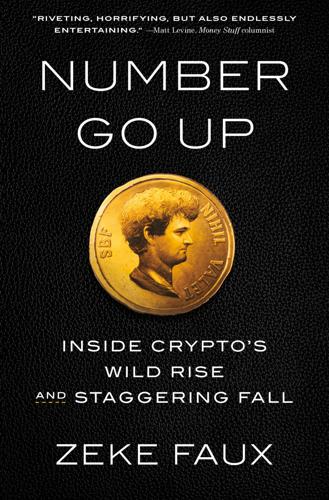
Number Go Up: Inside Crypto's Wild Rise and Staggering Fall
by
Zeke Faux
Published 11 Sep 2023
But these days, with the rise in electronic payments, the average branch might hold as little as $50,000. And bulletproof barriers, dye packs, timer locks, and high-resolution security cameras have largely made bank robberies a relic of the past. Meanwhile, crypto has created whole new categories of crime. Take ransomware, in which hackers break into a corporate or government computer system, lock it, and demand payment to restore access. The idea has been around since at least the 1990s. But paying with wire transfers or credit card made it relatively easy to catch the perpetrators. Crypto solved that problem. By 2020, hackers were taking in more than $600 million worth of crypto a year in ransom payments.
…
See also Celsius Network; Mashinsky, Alex; Tether Pope, Alexander, 50 Potter, Phil banks and Tether, 52 Bitfinex’s movement of money and, 60 Devasini and purchase of Tether, 38 payment for Noble, 57 Realcoin and, 36 Protos, 74 Puerto Rico, 115–116 “pump-and-dump” schemes, 49–50, 237 Q QuadrigaCX, 48, 61 Quigan, Ryan, 126, 127 Quigan, Shiela, 126–127 R ransomware, 101 Ray, John, III, 223 “Razzlekhan.” See Morgan, Heather Realcoin, 36 Reddit, 9–10, 103 Reminiscences of a Stock Operator, 225 “the repugnant conclusion” argument, 81 Ripps, Ryder, 156–157 Rong, Yawn, 133 RR/BAYC, 157 S Samani, Kyle, 135–136 Sanders, Rich, 180–182 Saturday Night Live, 17 Saylor, Michael, 22–23, 167 scam compounds (Cambodian), 182–188, 190, 193 Scaramucci, Anthony, 129–130 Schumer, Amy, 153 Scott, Seann William, 32 Securities and Exchange Commission (SEC), 64, 213, 238 Sellars, Craig, 36 Sequoia Capital, 21 Shallcross, Chapman “Chappy,” 168 Shallcross, Zach, 168 Shaulov, Michael, 103 Shiba Inu, 5, 10 Shimao Group, 68 Shyamalan, M.

The Nature of Software Development: Keep It Simple, Make It Valuable, Build It Piece by Piece
by
Ron Jeffries
Published 14 Aug 2015
Chapter 11 Security Poor security practices can damage your organization and many others. Your company may suffer direct losses from fraud or extortion. That damage gets multiplied by the cost of remediation, customer compensation, regulatory fines, and lost reputation. Individuals will lose their jobs, up to and including the CEO.[50] In 2017, the “WannaCry” ransomware affected more than 70 countries. It hit office computers, subway displays, and hospitals. The UK’s National Health Service got hit particularly hard, causing X-ray sessions to be canceled, stroke centers to close, and surgeries to be postponed. It put lives at risk.[51] In an epic game of one-upmanship, Equifax revealed in 2017 that 145.5 million US consumers’ identities had been stolen.[52] And Yahoo!
…
Follow the trail from here into the rich and scary world of CVEs,[72] CWEs,[73] and CERTs.[74] This finishes our slow zoom out from the physical substrate—copper, silicon, and iron oxide—all the way to systemic considerations. In the next part, we will look at the moment of truth: deployment! Footnotes [50] http://wapo.st/1juGxSu [51] https://eandt.theiet.org/content/articles/2017/05/wannacry-and-ransomware-impact-on-patient-care-could-cause-fatalities [52] https://en.wikipedia.org/wiki/Equifax#May.E2.80.93July_2017_security_breach [53] http://www.outsideonline.com/2186526/nut-job [54] http://www.owasp.org [55] http://bobby-tables.com [56] http://www.owasp.org/index.php/SQL_Injection_Prevention_Cheat_Sheet [57] https://www.owasp.org/index.php/XML_External_Entity_(XXE)_Prevention_Cheat_Sheet [58] http://www.owasp.org/index.php/OWASP_Java_Encoder_Project [59] http://www.owasp.org/index.php/XSS_(Cross_Site_Scripting)_Prevention_Cheat_Sheet [60] http://cwe.mitre.org/data/definitions/22.html [61] http://www.mongodb.com/blog/post/how-to-avoid-a-malicious-attack-that-ransoms-your-data [62] http://www.owasp.org/index.php/Password_Storage_Cheat_Sheet [63] http://docs.aws.amazon.com/kms/latest/developerguide/concepts.html [64] http://www.vaultproject.io [65] https://tools.ietf.org/html/draft-west-first-party-cookies-06 [66] http://caniuse.com/#feat=same-site-cookie-attribute [67] http://www.owasp.org/index.php/Cross-Site_Request_Forgery_(CSRF)_Prevention_Cheat_Sheet [68] https://nvd.nist.gov/vuln/detail/CVE-2017-5638 [69] https://www.owasp.org/index.php/OWASP_Dependency_Check [70] https://www.versioneye.com/ [71] http://www.tripwire.com [72] http://cve.mitre.org [73] https://cwe.mitre.org/index.html [74] http://www.cert.org Copyright © 2018, The Pragmatic Bookshelf.

Ten Arguments for Deleting Your Social Media Accounts Right Now
by
Jaron Lanier
Published 28 May 2018
An interesting detail that came out a year after the election is that Facebook had offered both the Clinton and Trump campaigns onsite teams to help them maximize their use of the platform, but only Trump’s campaign accepted the offer.18 Maybe if Clinton had agreed to have Facebook employees in her office, she would have won. The election was so close that any little thing that moved the needle in her direction could have tipped the result. Facebook and other BUMMER companies are becoming the ransomware of human attention. They have such a hold on so much of so many people’s attention for so much of each day that they are gatekeepers to brains. The situation reminds me of the medieval practice of indulgences, in which the Catholic Church of the time would sometimes demand money for a soul to enter heaven.
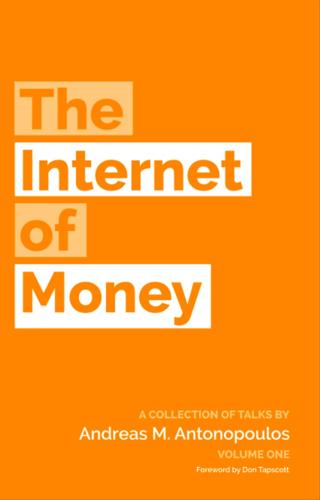
The Internet of Money
by
Andreas M. Antonopoulos
Published 28 Aug 2016
"Let’s take three radically disruptive technologies and mash them together. Bitcoin. Uber. Self-driving cars. What happens when you mash the three together? The self-owning car." I can guarantee you that one of the first distributed autonomous corporations is going to be a fully autonomous, artificial-intelligence-based ransomware virus that will go out and rob people online of their bitcoin, and use that money to evolve itself to pay for better programming, to buy hosting, and to spread. That’s one vision of the future. Another vision of the future is a digital autonomous charity. Imagine a system that takes donations from people, and using those donations it monitors social media like Twitter and Facebook.
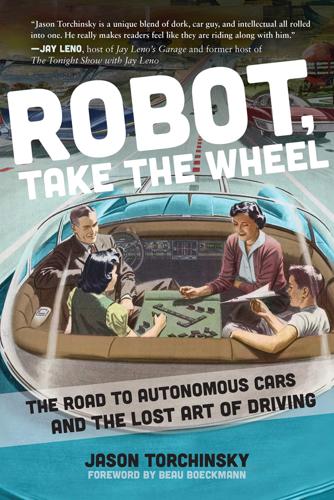
Robot, Take the Wheel: The Road to Autonomous Cars and the Lost Art of Driving
by
Jason Torchinsky
Published 6 May 2019
A hacker who can compromise a given robotic vehicle could, as you can imagine, cause a hell of a lot of trouble if they gain access to even a subset of the car’s systems involved in driving. Steering, throttle, or braking control, or even just the ability to impair or impede the usual flow of commands, could have devastating consequences. Cars could also be hacked in less dramatic ways, like spreading ransomware-like viruses from car to car that hobble the vehicles’ capabilities unless money is paid. Every shitty thing that hackers or malware has managed to do to personal computers could happen to robotic vehicles, because, fundamentally, they’re just computers. I think, in general, most security systems will be enough to avoid disaster, in much the same way that, for the most part, our networks of computers and phones and spy cams and internet-connected refrigerators generally work.
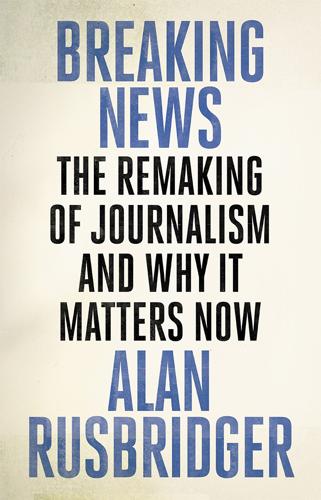
Breaking News: The Remaking of Journalism and Why It Matters Now
by
Alan Rusbridger
Published 14 Oct 2018
‘NSA and GCHQ Target Tor Network That Protects Anonymity of Web Users’, Guardian, 4 October 2013 16. ‘Why the NSA’s Attacks on the Internet Must Be Made Public’, Guardian, 4 October 2013 17. In May 2017 it was reported that one leaked NSA tool, an exploit of Microsoft Windows called EternalBlue, had been used to rapidly spread a ransomware variant called WannaCry across the world. The ransomware hit UK hospitals hard, with multiple sources reporting closures of entire wards. (Forbes, 12 May 2017; Thomas Fox-Brewster) 18. The respective homes of MI6, MI5 and GCHQ. 19. ‘The Detention of David Miranda Was an Unlawful Use of the Terrorism Act’, Guardian, 21 August 2013 20.
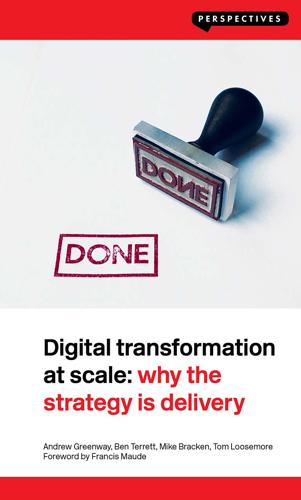
Digital Transformation at Scale: Why the Strategy Is Delivery
by
Andrew Greenway,Ben Terrett,Mike Bracken,Tom Loosemore
Published 18 Jun 2018
Maybe your IT has not been able to pay your employees on time, as happened in Canada, where 80,000 officials were paid the incorrect amount thanks to an IBM system failure.20 Maybe the world has realised you’ve spent many millions on a new IT system that doesn’t appear to work, like the Centrelink debt recovery system in Australia, referred to the government ombudsman after creating what a senior politician described as ‘summer from hell for thousands of people who have done absolutely nothing wrong’.21 Maybe your flagship policy has hit the rocks, as the UK’s Universal Credit did in 2013, forcing the department to write off at least £130 million of IT.22 Maybe you’ve been hit by ransomware, as 40 NHS trusts were by the Wannacry attack in May 2017, and been forced to cancel 6,900 appointments.23 Maybe your biggest new website crashed, like healthcare.gov in the US, forcing the president to attend a White House Rose Garden press conference to apologise. Maybe people are angry, as they were with British Airways when a new IT system crashed worldwide for the sixth time in a year, causing more than 1,000 flights to be delayed or cancelled.24 Maybe people are disadvantaged, disenchanted or at personal risk as a result of your organisation’s failure, as happened to almost the entire population of Sweden in July 2017 when it emerged that an outsourcing deal between the Swedish Transport Agency and IBM Sweden had led to a data leak affecting almost every citizen, including security and military personnel.25 You may be thinking that the tried and tested response to this crisis is inadequate.
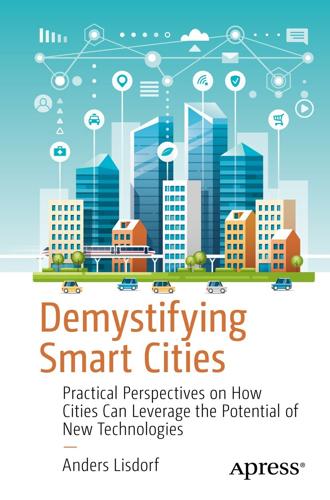
Demystifying Smart Cities
by
Anders Lisdorf
Availability refers to the extent to which data can be accessed and not just suddenly disappear. It is defined as “Ensuring timely and reliable access to and use of information...” (FISMA). A loss of availability is the disruption of access to or use of information or an information system. This was what happened with the WannaCry ransomware attacks. In this case, the virus infects the affected computers and encrypts the file drives. Entire networks had all their files encrypted, rendering them unavailable until a ransom was paid to the perpetrator who would then make the files available again. Mitigation tactics These are different types of security risks that smart city solutions face.
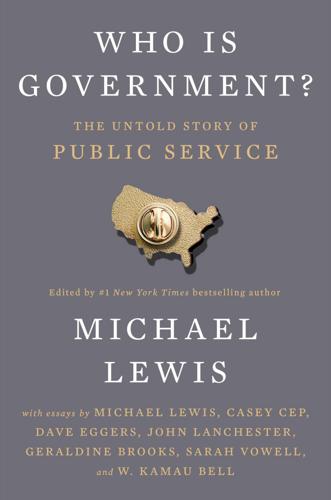
Who Is Government?: The Untold Story of Public Service
by
Michael Lewis
Published 18 Mar 2025
“He worked his butt off, gave five and a half years of his life to it and delayed retiring so he could finish this case,” Koopman says. The team had already seen that the Binance platform was used in the Welcome to Video case and in another big case in which hackers with North Korea’s Lazarus Group had stolen crypto to fund the state’s nuclear program. There was also evidence that ransomware attackers were laundering their take through the platform. By law, Binance should have flagged these suspicious activities and notified U.S. authorities. It hadn’t. Nor did it follow know-your-customer rules that require clients to provide identity documents before opening an account. All Binance required was an email address.
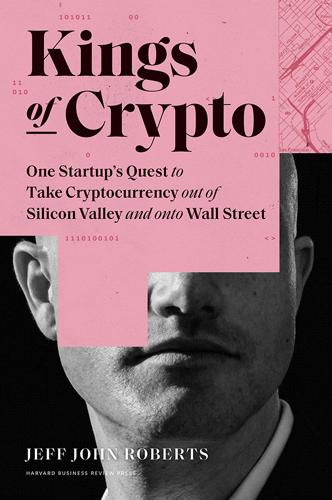
Kings of Crypto: One Startup's Quest to Take Cryptocurrency Out of Silicon Valley and Onto Wall Street
by
Jeff John Roberts
Published 15 Dec 2020
It took less than a day to realize the same-day service was a fiasco as fully 10 percent of the company’s transactions came back as fraudulent, costing Coinbase both cash and bitcoin. The team wryly referred to the problem as “friendly fraud.” The team also had to grapple with the uncomfortable fact that some of their customers treated the company as their personal money-laundering agent for a host of crimes. These included ransomware operators who would lock up the computers of companies, cities, and schools and only unlock them once the victims had paid a ransom in bitcoin. Once crooks had collected their ransoms, a site like Coinbase offered an excellent place to turn those bitcoin into US dollars. Coinbase was hardly the first company to be an unwitting agent to money laundering.
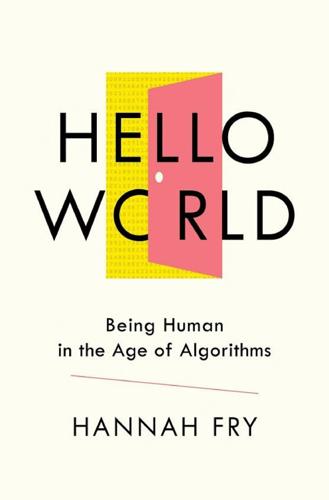
Hello World: Being Human in the Age of Algorithms
by
Hannah Fry
Published 17 Sep 2018
The patients themselves were never asked for their consent, never given an opt-out, never even told they were to be part of the study.47 It’s worth adding that Google was forbidden to use the information in any other part of its business. And – in fairness – it does have a much better track record on data security than the NHS, whose hospitals were brought to a standstill by a North Korean ransomware computer virus in 2017.48 But even so, there is something rather troubling about an already incredibly powerful, world-leading technology company having access to that kind of information about you as an individual. Problems with privacy Let’s be honest, Google isn’t exactly short of private, even intimate information on each of us.
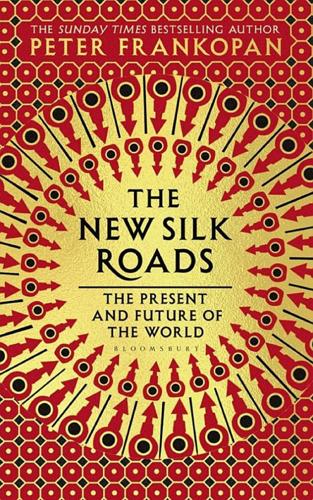
The New Silk Roads: The Present and Future of the World
by
Peter Frankopan
Published 14 Jun 2018
Indeed, in April 2018, the US Department of Homeland Security, the FBI and the United Kingdom’s National Cyber Security Centre issued a formal alert about Russian state-sponsored attempts to target hardware that controls internet traffic.67 Nevertheless, like other countries, Russia has experience of having to deal with ransomware and with hacks on its banking system, mobile telephony and government agencies, which it is keen to avoid or prevent in the future.68 In the west, one of the most important contemporary questions concerns the monetisation of data – and about the legality and ethics of corporations like Facebook gathering and deploying information about users and even about users’ friends and contacts who are not on social networks.
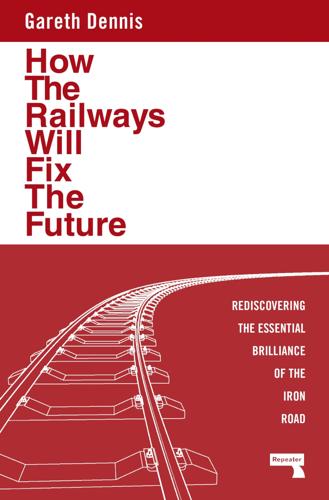
How the Railways Will Fix the Future: Rediscovering the Essential Brilliance of the Iron Road
by
Gareth Dennis
Published 12 Nov 2024
In the case of the 2022 attack, two separate sites at opposite ends of Deutsche Bahn’s network had seen telecoms cables cut in a manner which maximised the impact on the operational railway. Physical attacks on networked systems are less common, but virtual attacks are becoming routine for public service providers across the globe. The railway is no exception. In July 2021, a ransomware attack — in which a system is locked such that it is inaccessible to users — shut down brand-new ticketing machines in stations across the north of England for over a week. Rogue updates to virus software have resulted in the computers of infrastructure managers being locked out under similar circumstances.

Going Dark: The Secret Social Lives of Extremists
by
Julia Ebner
Published 20 Feb 2020
Available at https://www.bbc.com/news/technology-36284447. 33Raphael Satter, ‘Inside Story: How Russians Hacked the Democrats’ Emails’, Associated Press, 4 November 2017. Available at https://www.apnews.com/dea73efc01594839957c3c9a6c962b8a. 34Megha Mohan, ‘Macron Leaks: anatomy of a hack’, BBC Trending, 9 May 2017. Available at https://www.bbc.co.uk/news/blogs-trending-39845105. 35‘NHS “could have prevented” Wannacry ransomware attack’, BBC, 27 October 2017. Available at https://www.bbc.co.uk/news/technology-41753022. 36Chris Ratcliffe, ‘Hacker who stopped WannaCry charged with writing banking malware’, Wired, 3 August 2017. Available at https://www.wired.com/story/wannacry-malwaretech-arrest. 37Greg Otto, ‘Marcus Hutchins pleads guilty to two counts related to Kronos banking malware’, Cyber-scoop, 19 April 2010.

The Autonomous Revolution: Reclaiming the Future We’ve Sold to Machines
by
William Davidow
and
Michael Malone
Published 18 Feb 2020
Bots can be used to recruit thousands of online devices to flood targeted websites with so many messages that they are overwhelmed and can no longer service customers. Companies from Airbnb and Amazon to Starbucks, Twitter, Visa, and Zillow have been victims of these “denial of service” attacks. Then there are ransomware attacks, in which viruses seize control of computers and encrypt user files unless the user is willing to pay a ransom in a cryptocurrency. In some cases, malware can direct the system to shut down and erase itself, or, as in the case of Stuxnet, speed up until it destroys itself. Cyber weapons can disrupt or shut down power grids and communication, transportation, and financial networks, and bring commercial operations to a standstill.

Infinite Detail
by
Tim Maughan
Published 1 Apr 2019
But a few days trawling dark web message boards and code depositories when he’d got back to Bristol and he’d pieced together some clues, some snippets of code alongside the hysterical conspiracy theories and excited exclamations. The consensus seemed to be it was of military or intelligence agency origin, and regardless of where it had come from there was no doubting it was meant to be a weapon. Rush had seen countless ransomware tools come and go over the decades, viruses designed to seize and infect systems, to paralyze them until their desperate, money-hemorrhaging users coughed up the requested bitcoins to get their data and businesses back. But this was different. There wasn’t even any pretense of making money here, no attempt to inform or give warning to users.
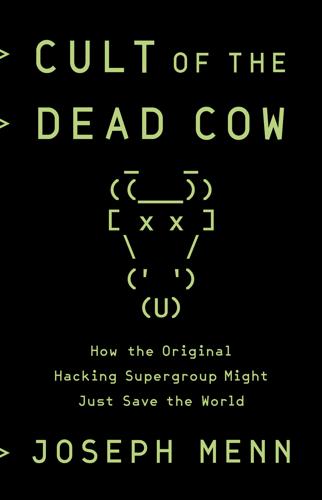
Cult of the Dead Cow: How the Original Hacking Supergroup Might Just Save the World
by
Joseph Menn
Published 3 Jun 2019
Most of the information came from late 2013, after Edward Snowden had left the agency, meaning that there was another mole, or a hack of agency hardware, or a careless employee who had been hacked. Shadow Brokers kept going for months. Some of the tricks it disclosed were then used by others, including the presumed North Korean distributors of badly crafted ransomware called WannaCry, which shuttered hospitals and other facilities around the planet in 2017. Eventually, two NSA employees were charged with bringing classified files home. At least one of them had been running Kaspersky antivirus on his personal computer. That was cause for special concern, because the Israelis had broken into Kaspersky’s networks in 2015.
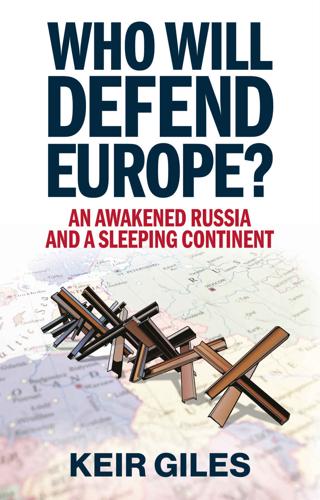
Who Will Defend Europe?: An Awakened Russia and a Sleeping Continent
by
Keir Giles
Published 24 Oct 2024
Despite the challenges facing Western unity and preparedness that we’ve discussed in previous chapters, Russia would still have to think long and hard before launching another conventional military operation against a European state because of the risk that NATO (and, for the time being, the US) could still perform its function and deliver it a crushing defeat. But Moscow has learned that that doesn’t apply to any of its efforts that don’t cross that line into undeniable armed attack. That still leaves Russia a huge range of options for waging war by other means, such as information warfare, terrorist attacks, targeted assassinations, cyber and ransomware campaigns, subversion, culture wars, energy cut-offs, economic blockades, psychological pressure and malign influence and much more. Campaigns like this were well understood during the Cold War. But just as in conventional defence, decades of supposed peace have led to collective amnesia on the challenge and how to deal with it.
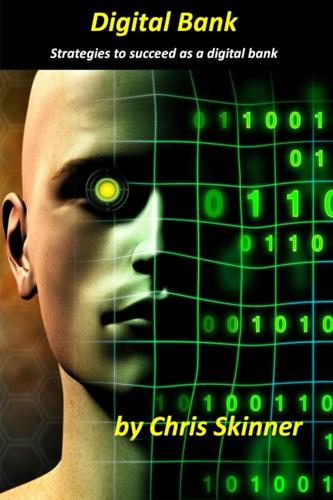
Digital Bank: Strategies for Launching or Becoming a Digital Bank
by
Chris Skinner
Published 27 Aug 2013
McAfee Labs researchers recently debated the leading threats for the coming year and show that it’s only going to get worse: “Hacking as a Service”: Anonymous sellers and buyers in underground forums exchange malware kits and development services for money The decline of online hacktivists Anonymous, to be replaced by more politically committed or extremist groups Nation states and armies will be more frequent sources and victims of cyberthreats Large-scale attacks like Stuxnet, an attack on Iranian nuclear plants, will increasingly attempt to destroy infrastructure, rather than make money Mobile worms on victims’ machines that buy malicious apps and steal via tap-and-pay NFC Malware that blocks security updates to mobile phones Mobile phone ransomware “kits” that allow criminals without programming skills to extort payments Covert and persistent attacks deep within and beneath Windows Rapid development of ways to attack Windows 8 and HTML5 A further narrowing of Zeus-like targeted attacks using the Citadel Trojan, making it very difficult for security products to counter Malware that renews a connection even after a botnet has been taken down, allowing infections to grow again The “snowshoe” spamming of legitimate products from many IP addresses, spreading out the sources and keeping the unwelcome messages flowing SMS spam from infected phones.

Life After Google: The Fall of Big Data and the Rise of the Blockchain Economy
by
George Gilder
Published 16 Jul 2018
Putting data in central repositories solved hackers’ hardest problem for them: It told them which data were important and where they were, putting the entire Internet at risk. Google mobilized “an all-star hacker swat team” to strike back at dark-side hackers. An entire industry of security firms emerged to protect the user data honeypots by reacting to outbreaks of viruses, grand data thefts, denial-of-service attacks, malware, malvertisments, phishing schemes, ransomware, and other mischief. Each Internet fiefdom responded by foisting on its customers a flurry of security busywork that did nothing to improve security and got worse every year by every measure. “Security” programs merely let butterfingered data holders tell the courts that they were doing all they could, pointing to their enormous expenditures on such programs.
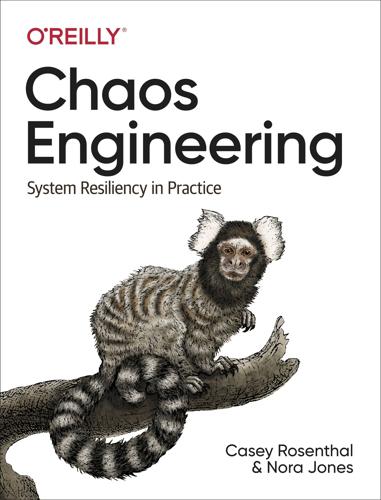
Chaos Engineering: System Resiliency in Practice
by
Casey Rosenthal
and
Nora Jones
Published 27 Apr 2020
According to a story that reflects on the sophistication of cybercriminals, the BBC reported:5 Attacks like that do happen. But more often than not, the hackers and cybercriminals hitting the headlines aren’t doing anything magical. In fact, they’re often just wily opportunists–like all criminals. The reality is that the vast majority of malicious code such as viruses, malware, ransomware, and the like habitually take advantage of low-hanging fruit. This can take the form of weak passwords, default passwords, outdated software, unencrypted data, weak security measures in systems, and most of all they take advantage of unsuspecting humans’ lack of understanding of how the complex system in front of them actually functions.
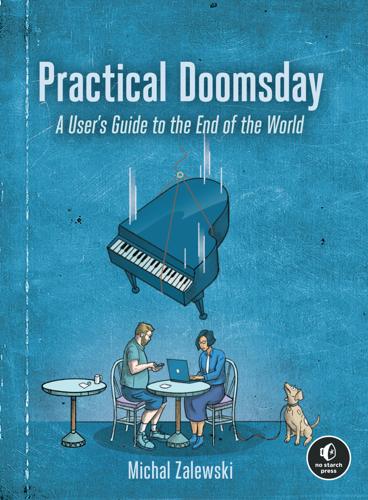
Practical Doomsday: A User's Guide to the End of the World
by
Michal Zalewski
Published 11 Jan 2022
Of course, with the thousands of decisions we make on trust every year, even the most attentive among us might eventually get it wrong. To prevent mishaps from becoming life-altering disasters, it’s wise to regularly back up all important documents to an offline medium, perhaps a thumb drive plugged into the USB port and then stowed away when done. The habit is particularly important given the rise in ransomware: a class of attacks where the scammer convinces the victim to download a malicious program, and then encrypts all files on the computer, demanding payment in exchange for the decryption key. To prevent blackmail or identity theft, it might also be best to keep extremely sensitive documents solely in “cold” storage, and not keep copies on anything connected to the internet.
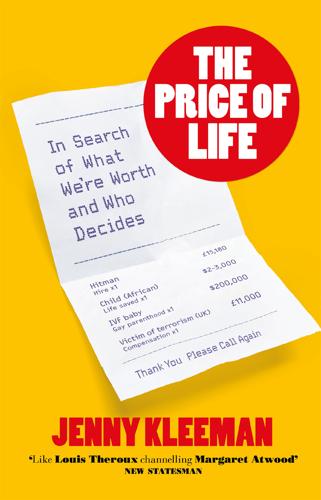
The Price of Life: In Search of What We're Worth and Who Decides
by
Jenny Kleeman
Published 13 Mar 2024
‘Tricky markets,’ she explains, a trace of her German accent barely discernible. ‘Markets where one party is a legal entity and the other is either underworld or strongly connected to the underworld. Transactions that take place in a very low trust environment.’ Kidnaps, stolen art, antiquities and ransomware (malicious software that holds your computer or network hostage until you pay up) are her stock in trade. There’s normally a fear of future reputational damage in dealmaking that incentivizes both parties to play fair, and a state that will enforce contracts if they don’t. ‘I am asking, how do you make a contract with someone you inherently distrust, that you tend to be in a one-off relationship with?’
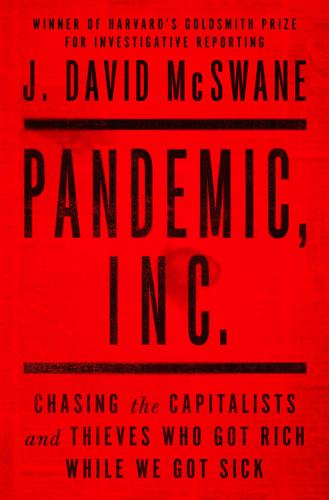
Pandemic, Inc.: Chasing the Capitalists and Thieves Who Got Rich While We Got Sick
by
J. David McSwane
Published 11 Apr 2022
Many traced back to dense clusters in Florida, Nebraska, Virginia, and New Jersey. After talking with unsuspecting people whose information was used to apply for the loans, the reporters found connections. In New Jersey, several people they called had hired the same financial accounting firm, which had notified its clients of a ransomware attack in which hackers obtained Social Security numbers and other financial information. Seeing the common ties between the addresses of the phony farms, it appeared they may have been the result of synthetic identity theft, in which bits of personal information like birth dates, home addresses, and Social Security numbers can be stitched together by criminals to make a fake credit profile.

Exponential: How Accelerating Technology Is Leaving Us Behind and What to Do About It
by
Azeem Azhar
Published 6 Sep 2021
Abu Dhabi, UAE, 250 Acemoglu, Daron, 139 Acorn Computers, 16, 21 Ada Lovelace Institute, 8 additive manufacturing, 43–4, 46, 48, 88, 166, 169, 175–9 Adidas, 176 advertising, 94, 112–13, 116, 117, 227–8 AdWords, 227 aeroponics, 171 Afghanistan, 38, 205 Africa, 177–8, 182–3 Aftenposten, 216 Age of Spiritual Machines, The (Kurzweil), 77 agglomeration, 181 Air Jordan sneakers, 102 Airbnb, 102, 188 aircraft, 49–50 Alexandria, Egypt, 180 AlexNet, 33 Algeciras, HMM 61 Alibaba, 48, 102, 108, 111, 122 Alipay, 111 Allen, Robert, 80 Alphabet, 65, 113–14, 131, 163 aluminium, 170 Amazon, 65, 67–8, 94, 104, 108, 112, 122, 135–6 Alexa, 25, 117 automation, 135–6, 137, 139, 154 collective bargaining and, 163 Covid-19 pandemic (2020–21), 135–6 drone sales, 206 Ecobee and, 117 Go stores, 136 Kiva Systems acquisition (2012), 136 management, 154 Mechanical Turk, 142–3, 144, 145 monopoly, 115, 117, 122 Prime, 136, 154 R&D, 67–8, 113 Ami Pro, 99 Amiga, 16 Anarkali, Lahore, 102 anchoring bias, 74 Android, 85, 94, 117, 120 Angola, 186 Ant Brain, 111 Ant Financial, 111–12 antitrust laws, 114, 119–20 Apache HTTP Server, 242 Appelbaum, Binyamin, 63 Apple, 47, 62, 65, 85, 94, 104, 108, 112, 122 App Store, 105, 112, 115 chip production, 113 Covid-19 pandemic (2019–21), 222–3 data collection, 228 iOS, 85 iPhone, 47, 62, 85, 94, 105 media subscription, 112 watches, 112 APT33 hacker group, 198 Aral, Sinan, 238 Aramco, 108, 198 Armenia, 206–7 Arthur, William Brian, 110, 123 artificial intelligence, 4, 8, 31–4, 54, 88, 113, 249 academic brain drain, 118 automation, 125–42 data and, 31–2, 142 data network effect, 106–7 drone technology and, 208, 214 education and, 88 employment and, 126–7 healthcare and, 88, 103 job interviews and, 153 regulation of, 187, 188 arXiv, 59 Asana, 151 Asian Development Bank, 193 Aslam, Yaseen, 148 Assembly Bill 5 (California, 2019), 148 asymmetric conflict, 206 AT&T, 76, 100 Atari, 16 attack surfaces, 192–3, 196, 209, 210 Aurora, 141 Australia, 102, 197 automation, 125–42 autonomous weapons, 208, 214 Azerbaijan, 173, 206–7 Ballmer, Steve, 85 Bangladesh, 175 banking, 122, 237 Barcelona, Catalonia, 188 Barlow, John Perry, 184 Barrons, Richard, 195, 211 Bartlett, Albert, 73 batteries, 40, 51, 53–4, 250, 251 Battle of the Overpass (1937), 162 Bayraktar TB2 drone, 206 Bee Gees, 72 Bekar, Clifford, 45 Bell Labs, 18 Bell Telephone Company, 100 Benioff, Marc, 108–9 Bentham, Jeremy, 152 Berlin Wall, fall of (1989), 4 Bermuda, 119 Berners-Lee, Timothy, 55, 100, 160, 239 Bessen, James, 46 Bezos, Jeffrey, 135–6 BGI, 41 Biden, Joseph, 225 Bing, 107 biological weapons, 207, 213 biology, 10, 39, 40–42, 44, 46 genome sequencing, 40–41, 90, 229, 234, 245–7, 250, 252 synthetic biology, 42, 46, 69, 174, 245, 250 biopolymers, 42 bits, 18 Black Death (1346–53), 12 BlackBerry, 120 Blair, Tony, 81 Bletchley Park, Buckinghamshire, 22 blitzscaling, 110 Blockbuster, 138 BMW, 177 Boeing, 51, 236 Bol.com, 103 Bollywood, 181 Boole, George, 18 Bork, Robert, 114–15, 117, 119 Bosworth, Andrew, 233 Boyer, Pascal, 75 Boyle, James, 234 BP, 92, 158 brain, 77 Braudel, Fernand, 75 Brave, 242 Brazil, 202 Bremmer, Ian, 187 Bretton Woods Conference (1944), 87 Brexit (2016–20), 6, 168 British Broadcasting Corporation (BBC), 87, 129, 191 Brookings Institution, 130 BT, 123 Bulgaria, 145 Bundy, Willard Legrand, 149 Busan, South Korea, 56 business, 82, 92–124 diminishing returns to scale, 93, 108 economic dynamism and, 117 economies of scale, 50, 92 growth, 110–13 increasing returns to scale, 108–10 intangible economy, 104–7, 118, 156, 175, 180 linear value chains, 101 market share, 93–6, 111 monopolies, 10, 71, 94, 95, 114–24 network effect, 96–101 platform model, 101–3, 219 re-localisation, 11, 166–79, 187, 252, 255 state-sized companies, 11, 67 superstar companies, 10, 94–6 supply chains, 61–2, 166–7, 169, 175, 187, 252, 255 taxation of, 96, 118–19 Butler, Nick, 179 ByteDance, 28 C40 initiative, 189 Cambridge University, 127, 188 cancer, 57–8, 127 Capitol building storming (2021), 225 car industry, 93 carbon emissions, 35, 90, 251 Carlaw, Kenneth, 45 Carnegie, Andrew, 112 Carnegie Mellon University, 131 Catholic Church, 83, 88 censorship, 216–17, 224–6, 236 Central Intelligence Agency (CIA), 194 Cerebras, 34 cervical smears, 57–8 chemical weapons, 207, 213 Chen, Brian, 228 chewing gum, 78 Chicago Pile-1 reactor, 64 Chile, 170 China automation in, 127, 137 brainwave reading in, 152 Covid-19 pandemic (2019–21), 245 drone technology in, 207 Great Firewall, 186, 201 Greater Bay Area, 182 horizontal expansion in, 111–12 manufacturing in, 176 misinformation campaigns, 203 raw materials, demand for, 178 Singles’ Day, 48 social credit systems, 230 superstar companies in, 95 US, relations with, 166 chips, 19–22, 28–9, 48–9, 52, 113, 251 Christchurch massacre (2019), 236 Christensen, Clayton, 24 CIPD, 153 cities, 11, 75, 169, 179–84, 188, 255 Clegg, Nick, 225–6, 235 climate change, 90, 169, 187, 189, 251, 252 cloud computing, 85, 112 Cloudflare, 200 cluster bombs, 213 CNN, 185, 190 coal, 40, 65, 172 Coase, Ronald, 92 Coca-Cola, 93 code is law, 220–22, 235 cold fusion, 113–14 Cold War (1947–91), 194, 212, 213 collective bargaining, 147, 149, 154, 156, 162–5 Colombia, 145 colonialism, 167 Columbus, Christopher, 4 combination, 53–7 Comical Ali, 201 commons, 234–5, 241–3, 256 companies, see business comparative advantage, 170 complex systems, 2 compounding, 22–3, 28 CompuServe, 100 computing, 4, 10, 15–36, 44, 46, 249 artificial intelligence, 4, 8, 31–4, 54, 88 cloud computing, 85, 112 internet, 47–8, 55, 65, 84 Law of Accelerating Returns, 30–31, 33, 35 machining, 43 Moore’s Law, see Moore’s Law quantum computing, 35 transistors, 18–22, 28–9, 48–9, 52 conflict, 87, 189, 190–215 attack surfaces, 192–3, 196, 209, 210 cyberattacks, 11, 114, 140, 181, 187, 190–200, 209–14, 256 de-escalation, 212–13 drone technology, 11, 192, 204–9, 214, 256 institutional change and, 87 misinformation, 11, 191, 192, 200–204, 209, 212, 217, 225 new wars, 194 non-proliferation, 213–14 re-localisation and, 189, 193, 194, 209 consent of the networked, 223 Costco, 67 Coursera, 58 Covid-19 pandemic (2019–21), 12–13, 59, 78–9, 131, 245–9 automation and, 127, 135, 136 cities and, 183 contact-tracing apps, 222–3 gig economy and, 146 lockdowns, 12, 152, 176, 183, 246 manufacturing and, 176 misinformation and, 202–4, 247–8 preprint servers and, 60 recession (2020–21), 178 remote working and, 146, 151, 153 supply chains and, 169, 246 vaccines, 12, 202, 211, 245–7 workplace cultures and, 151, 152 cranks, 54 credit ratings, 162, 229 critical thinking skills, 212 Croatia, 145 Crocker, David, 55 crowdsourcing, 143–4 Cuba, 203 Cuban missile crisis (1962), 99, 212 cultural lag, 85 cyberattacks, 11, 114, 140, 181, 187, 190–200, 209–14, 256 CyberPeace Institute, 214 Daniel, Simon, 173–4 Dar es Salaam, Tanzania, 183 Darktrace, 197 data, 8, 11, 71, 217–19, 226–31, 235, 237–42, 256 AI and, 8, 32, 33, 58, 106 compensation for, 239 commons, 242 cyberattacks and, 196 doppelgängers, 219, 226, 228, 239 interoperability and, 237–9 network effects, 106–7, 111 protection laws, 186, 226 rights, 240 Daugherty, Paul, 141 DDT (dichlorodiphenyltrichloroe thane), 253 death benefits, 151 Dediu, Horace, 24, 30 deep learning, 32–4, 54, 58, 127 deforestation, 251 dehumanisation, 71, 154, 158 deindustrialisation, 168 Deliveroo, 154, 163 Delphi, 100 dematerialised techniques, 166, 175 Denmark, 58, 160, 199–200, 257 Deutsche Bank, 130 Diamandis, Peter, 5 Dickens, Charles, 80 digital cameras, 83–4 Digital Geneva Convention, 211 Digital Markets Act (EU, 2020), 122 digital minilateralism, 188 Digital Nations group, 188 Digital Services Act (EU, 2020), 123 diminishing returns, 93, 108 disinformation, see misinformation DoorDash, 147, 148, 248 dot-com bubble (1995–2000), 8, 108, 150 Double Irish tax loophole, 119 DoubleClick, 117 drone technology, 11, 192, 204–9, 214, 256 Dubai, UAE, 43 Duke University, 234 dystopia, 208, 230, 253 Eagan, Nicole, 197 eBay, 98, 121 Ecobee, 120 economies of scale, 50, 92 Economist, The, 8, 65, 119, 183, 239 economists, 63 Edelman, 3 education artificial intelligence and, 88 media literacy, 211–12 Egypt, 145, 186 Elance, 144 electric cars, 51, 69, 75, 173–4, 177, 250 electricity, 26, 45, 46, 54, 157, 249–50 see also energy Electronic Frontier Foundation, 184 email, 6, 55 embodied institutions, 82 employment, 10, 71, 125–65 automation, 125–42 collective bargaining, 147, 149, 154, 156, 162–5 dehumanisation and, 71, 154, 158 flexicurity, 160–61, 257 gig economy, 10, 71, 142–9, 153, 162, 164, 239, 252, 255 income inequality, 155–8, 161, 168 lump of labour fallacy, 139 management, 149–54, 158–9 protections, 85–6, 147–9 reskilling, 159–60 universal basic income (UBI), 160, 189 Enclosure, 234–5, 241 energy, 11, 37–8, 39–40, 44, 46, 172–4, 250 cold fusion, 113–14 fossil fuels, 40, 159, 172, 250 gravitational potential, 53 solar power, 37–8, 53, 65, 77, 82, 90, 171, 172, 173, 249, 250, 251 storage, 40, 53, 114, 173–4, 250, 251 wind power, 39–40, 52 Energy Vault, 53–4, 173 Engels, Friedrich, 81 Engels’ pause, 80, 81 environmental movement, 73 Epic Games, 116 estate agents, 100 Estonia, 188, 190–91, 200, 211 Etzion Airbase, Sinai Peninsula, 195 European Commission, 116, 122, 123 European Space Agency, 56 European Union, 6, 82, 147, 186, 226 Excel, 99 exogeny, 2 exponential gap, 9, 10, 67–91, 70, 89, 253 cyber security and, 193 institutions and, 9, 10, 79–88, 90 mathematical understanding and, 71–5 predictions and, 75–9 price declines and, 68–9 superstar companies and, 10, 94–124 exponential growth bias, 73 Exponential View, 8–9 externalities, 97 extremism, 232–4 ExxonMobil, 65, 92 Facebook, 27, 28, 65, 94, 104, 108, 122, 216–17, 218, 219, 221–2, 223 advertising business, 94, 228 censorship on, 216–17, 224–6, 236 collective bargaining and, 164 data collection on, 228, 239–40 extremism and, 233–4 Instagram acquisition (2012), 117, 120 integrity teams, 234 interoperability, 237–8 Kenosha unrest shooting (2020), 224 misinformation on, 201, 225 network effect and, 98, 223 Oculus acquisition (2014), 117 pay at, 156–7 Phan photo controversy (2016), 216–17, 224, 225 platform model, 101 polarisation and, 233 relationship status on, 221–2 Rohingya ethnic cleansing (2018), 224, 225 US presidential election (2016), 217 WhatsApp acquisition (2014), 117 facial recognition, 152, 208 Factory Act (UK, 1833), 81 Fairchild Semiconductor, 19, 21 fake news, 201–4 family dinners, 86 farming, 170–72, 251 Farrar, James, 148 fax machines, 97 Federal Aviation Administration (US), 236 feedback loops, 3, 13 fertilizers, 35, 90 5G, 203 Financial Conduct Authority, 122 Financial Times, 183 Finland, 160, 211–12 Fitbit, 158 Fiverr, 144 flashing of headlights, 83 flexicurity, 160, 257 flints, 42 flywheels, 54 Ford, 54, 92, 162 Ford, Gerald, 114 Ford, Henry, 54, 162 Ford, Martin, 125 Fortnite, 116 fossil fuels, 40, 159, 172 France, 100, 138, 139, 147, 163 free-market economics, 63–4 freelance work, 10, 71, 142–9 Frey, Carl, 129, 134, 141 Friedman, Milton, 63–4, 241 Friedman, Thomas, 167 FriendFeed, 238 Friendster, 26 Fudan University, 245 fund management, 132 Galilei, Galileo, 83 gaming, 86 Gates, Bill, 17, 25, 84 gender, 6 General Agreement on Tariffs and Trade, 87 General Data Protection Regulation (GDPR), 226 General Electric, 52 General Motors, 92, 125, 130 general purpose technologies, 10, 45–8 generative adversarial networks (GANs), 58 Geneva Conventions, 193, 199, 209 Genghis Khan, 44 GEnie, 100 genome sequencing, 40–41, 90, 229, 234, 245–7, 250, 252 Germany, 75, 134, 147 Giddens, Anthony, 82 gig economy, 10, 71, 142–9, 153, 162, 164, 239, 252, 255 Gilbreth, Lillian, 150 Ginsparg, Paul, 59 GitHub, 58, 60 GlaxoSmithKline, 229–30 global financial crisis (2007–9), 168 Global Hawk drones, 206 global positioning systems (GPS), 197 globalisation, 11, 62, 64, 156, 166, 167–71, 177, 179, 187, 193 internet and, 185 conflict and, 189, 193, 194 Glocer, Thomas, 56 Go (game), 132 GOAT, 102 Gojek, 103 Golden Triangle, 170 Goldman Sachs, 151 Goodfellow, Ian, 58 Google, 5, 35, 36, 94, 98, 104, 108, 115, 122 advertising business, 94, 112–13, 116, 117, 227 Android, 85, 94, 117, 120 chip production, 113 Covid-19 pandemic (2019–21), 222–3 data network effect, 106–7 death benefits, 151 Double Irish tax loophole, 119 Maps, 113 quantum computing, 35 R&D, 114, 118 vertical integration, 112–13, 116 X, 114 YouTube acquisition (2006), 112, 117 Gopher, 59, 100 GPT-3, 33 Graeber, David, 133–4 Grand Bazaar, Istanbul, 102 Graphcore, 34, 35 graphics chips, 34 Grateful Dead, The, 184 gravitational potential energy, 53 gravity bombs, 195 Greater Bay Area, China, 182 Greenberg, Andy, 199 Gross, Bill, 53 Grove, Andrew, 17 GRU (Glavnoje Razvedyvatel’noje Upravlenije), 199 Guangzhou, Guangdong, 182 Guardian, 8, 125, 154, 226, 227 Guiyang, Guizhou, 166 H1N1 virus, 75 Habermas, Jürgen, 218 Hard Times (Dickens), 80 Hardin, Garrett, 241 Harop drones, 207–8 Harpy drones, 207–8 Harvard University, 150, 218, 220, 221, 253 healthcare artificial intelligence and, 57–8, 88, 103 data and, 230, 239, 250–51 wearable devices and, 158, 251 Helsinki, Finland, 160 Herlev Hospital, Denmark, 58 Hinton, Geoffrey, 32, 126–7 HIPA Act (US, 1996), 230 Hitachi, 152 Hobbes, Thomas, 210 Hoffman, Josh, 174 Hoffman, Reid, 110, 111 Holmes, Edward, 245 homophily, 231–4 Hong Kong, 182 horizontal expansion, 111–12, 218 Houston Islam protests (2016), 203 Houthis, 206 Howe, Jeff, 143 Hsinchu, Taiwan, 181 Hughes, Chris, 217 Hull, Charles, 43 Human + Machine (Daugherty), 141 human brain, 77 human genome, 40–41, 90, 229, 234, 250 human resources, 150 Hussein, Saddam, 195 Hyaline, 174 hydroponics, 171 hyperinflation, 75 IBM, 17, 21, 47, 98 IDC, 219 Ideal-X, 61 Ikea, 144 Illumina, 41 Ilves, Toomas Hendrik, 190 ImageNet, 32 immigration, 139, 168, 183–4 Impossible Foods, 69 Improv, 99 income inequality, 155–8, 161, 168 India, 103, 145, 181, 186, 224, 253, 254 Indonesia, 103 Industrial Revolution (1760–1840), 79–81, 157, 235 informational networks, 59–60 ING, 178 innovation, 14, 117 Innovator’s Dilemma, The (Christensen), 24 Instagram, 84, 117, 120, 121, 237 institutions, 9, 10, 79–88, 90–91 path dependence, 86–7 punctuated equilibrium, 87–8 intangible economy, 104–7, 118, 156, 175, 180 integrated circuits, 19 Intel, 16–17, 19, 163 intellectual property law, 82 Intermediate-Range Nuclear Forces Treaty (1987), 237 International Alliance of App-Based Transport Workers, 164 International Court of Justice, 224 International Criminal Court, 208 International Energy Agency, 77, 82 International Labour Organization, 131 International Monetary Fund (IMF), 87, 167, 187 international organisations, 82 International Organization for Standardization, 55, 61 International Rescue Committee, 184 International Telecommunication Union, 55 internet, 7, 47–8, 55, 65, 72, 75, 84–5, 88, 115, 184–6 code is law, 220–22, 235 data and, 11, 32, 71 informational networks, 59–60 localisation, 185–6 lockdowns and, 12 network effect, 100–101 online shopping, 48, 61, 62, 75, 94, 102, 135 platform model and, 102 public sphere and, 223 standardisation, 55 Wi-Fi, 151 interoperability, 55, 120–22, 237–9, 241, 243, 256–7 iPhone, 47, 62, 85, 94, 115, 175 Iran, 186, 196, 198, 203, 206 Iraq, 195–6, 201, 209 Ireland, 57–8, 119 Islamic State, 194, 233 Israel, 37, 188, 195–6, 198, 206, 207–8 Istanbul, Turkey, 102 Jacobs, Jane, 182 Japan, 37, 152, 171, 174 Jasanoff, Sheila, 253 JD.com, 137 Jena, Rajesh, 127 Jio, 103 job interviews, 153, 156 John Paul II, Pope, 83 Johnson, Boris, 79 Jumia, 103 just in time supply chains, 61–2 Kahneman, Daniel, 74 KakaoTalk, 27 Kaldor, Mary, 194 Kapor, Mitchell, 99 Karunaratne, Sid, 140–41, 151 Kenosha unrest shooting (2020), 224 Keynes, John Maynard, 126, 158 Khan, Lina, 119 Khartoum, Sudan, 183 Kim Jong-un, 198 King’s College London, 179 Kiva Systems, 136 Kobo360, 145 Kodak, 83–4, 88 Kranzberg, Melvin, 254 Krizhevsky, Alex, 32–3, 34 Kubursi, Atif, 178 Kurdistan Workers’ Party, 206 Kurzweil, Ray, 29–31, 33, 35, 77 Lagos, Nigeria, 182 Lahore, Pakistan, 102 landmines, 213 Law of Accelerating Returns, 30–31, 33, 35 Laws of Motion, 20 learning by doing, 48, 53 Leggatt, George, 148 Lemonade, 56 Lessig, Larry, 220–21 Leviathan (Hobbes), 210 Li Fei-Fei, 32 life expectancy, 25, 26 light bulbs, 44, 157 Lime, 27 Limits to Growth, The (Meadows et al.), 73 linear value chains, 101 LinkedIn, 26, 110, 121, 237, 238 Linkos Group, 197 Linux OS, 242 Lipsey, Richard, 45 lithium-ion batteries, 40, 51 lithium, 170 localism, 11, 166–90, 252, 255 log files, 227 logarithmic scales, 20 logic gates, 18 logistic curve, 25, 30, 51, 52, 69–70 London, England, 180, 181, 183 London Underground, 133–4 looms, 157 Lordstown Strike (1972), 125 Lotus Development Corporation, 99 Luddites, 125, 253 Lufa Farms, 171–2 Luminate, 240 lump of labour fallacy, 139 Lusaka, Zambia, 15 Lyft, 146, 148 machine learning, 31–4, 54, 58, 88, 127, 129, 143 MacKinnon, Rebecca, 223 Maersk, 197, 199, 211 malaria, 253 Malaysia Airlines Flight 17 shootdown (2014), 199 Malta, 114 Malthus, Thomas, 72–3 malware, 197 Man with the Golden Gun, The (1974 film), 37 manufacturing, 10, 39, 42–4, 46, 166–7, 175–9 additive, 43–4, 46, 48, 88, 166, 169, 175–9 automation and, 130 re-localisation, 175–9 subtractive, 42–3 market saturation, 25–8, 51, 52 market share, 93–6, 111 Marshall, Alfred, 97 Massachusetts Institute of Technology, 18, 147, 202, 238 Mastercard, 98 May, Theresa, 183 Mayors for a Guaranteed Income, 189 McCarthy, John, 31 McKinsey, 76, 94 McMaster University, 178 measles, 246 Mechanical Turk, 142–3, 144, 145 media literacy, 211–12 meningitis, 246 Mexico, 202 microorganisms, 42, 46, 69 Microsoft, 16–17, 65, 84–5, 88, 98–9, 100, 105, 108, 122, 221 Bing, 107 cloud computing, 85 data collection, 228 Excel, 99 internet and, 84–5, 100 network effect and, 99 Office software, 98–9, 110, 152 Windows, 85, 98–9 Workplace Productivity scores, 152 Mill, John Stuart, 193 miniaturisation, 34–5 minimum wage, 147, 161 misinformation, 11, 191, 192, 200–204, 209, 212, 217, 225, 247–8 mobile phones, 76, 121 see also smartphones; telecom companies Moderna, 245, 247 Moixa, 174 Mondelez, 197, 211 Mongol Empire (1206–1368), 44 monopolies, 10, 71, 94, 95, 114–24, 218, 255 Monopoly (board game), 82 Montreal, Quebec, 171 mood detection systems, 152 Moore, Gordon, 19, 48 Moore’s Law, 19–22, 26, 28–9, 31, 34, 63, 64, 74 artificial intelligence and, 32, 33–4 Kodak and, 83 price and, 41–2, 51, 68–9 as social fact, 29, 49 superstar companies and, 95 time, relationship with, 48–9 Moravec, Hans, 131 Moravec’s paradox, 131–2 Motorola, 76 Mount Mercy College, Cork, 57 Mozilla Firefox, 242 Mumbai, India, 181 mumps, 246 muskets, 54–5 MySpace, 26–7 Nadella, Satya, 85 Nagorno-Karabakh War (2020), 206–7 napalm, 216 NASA (National Aeronautics and Space Administration), 56 Natanz nuclear site, Iran, 196 National Health Service (NHS), 87 nationalism, 168, 186 NATO (North Atlantic Treaty Organization), 191, 213 Netflix, 104, 107, 109, 136, 137, 138, 139, 151, 248 Netherlands, 103 Netscape Communicator, 6 networks, 58–62 network effects, 96–101, 106, 110, 121, 223 neural networks, 32–4 neutral, technology as, 5, 220–21, 254 new wars, 194 New York City, New York, 180, 183 New York Times, 3, 125, 190, 228 New Zealand, 188, 236 Newton, Isaac, 20 Nigeria, 103, 145, 182, 254 Niinistö, Sauli, 212 Nike, 102 nitrogen fertilizers, 35 Nixon, Richard, 25, 114 Nobel Prize, 64, 74, 241 Nokia, 120 non-state actors, 194, 213 North Korea, 198 North Macedonia, 200–201 Norway, 173, 216 NotPetya malware, 197, 199–200, 211, 213 Novell, 98 Noyce, Robert, 19 NSO Group, 214 nuclear weapons, 193, 195–6, 212, 237 Nuremberg Trials (1945–6), 208 O’Reilly, Tim, 107 O’Sullivan, Laura, 57–8, 60 Obama, Barack, 205, 214, 225 Ocado, 137 Ocasio-Cortez, Alexandria, 239 Oculus, 117 oDesk, 144 Ofcom, 8 Ofoto, 84 Ogburn, William, 85 oil industry, 172, 250 Houthi drone attacks (2019), 206 OAPEC crisis (1973–4), 37, 258 Shamoon attack (2012), 198 Standard Oil breakup (1911), 93–4 Olduvai, Tanzania, 42 online shopping, 48, 61, 62, 75, 94, 102, 135 open-source software, 242 Openreach, 123 Operation Opera (1981), 195–6, 209 opium, 38 Orange, 121 Organisation for Economic Co-operation and Development (OECD), 119, 167 Osborne Computer Corporation, 16 Osborne, Michael, 129 Osirak nuclear reactor, Iraq, 195–6, 209 Ostrom, Elinor, 241 Oxford University, 129, 134, 203, 226 pace of change, 3 pagers, 87 Pakistan, 145, 205 palladium, 170 PalmPilot, 173 panopticon, 152 Paris, France, 181, 183 path dependence, 86 PayPal, 98, 110 PC clones, 17 PeerIndex, 8, 201, 237 Pegasus, 214 PeoplePerHour, 144 PepsiCo, 93 Perez, Carlota, 46–7 pernicious polarization, 232 perpetual motion, 95, 106, 107, 182 Petersen, Michael Bang, 75 Phan Thi Kim Phuc, 216–17, 224, 225 pharmaceutical industry, 6, 93, 250 phase transitions, 4 Philippines, 186, 203 Phillips Exeter Academy, 150 phishing scams, 211 Phoenix, Arizona, 134 photolithography, 19 Pigou, Arthur Cecil, 97 Piketty, Thomas, 160 Ping An Good Doctor, 103, 250 Pix Moving, 166, 169, 175 PKK (Partîya Karkerên Kurdistanê), 206 Planet Labs, 69 platforms, 101–3, 219 PlayStation, 86 plough, 157 Polanyi, Michael, 133 polarisation, 231–4 polio, 246 population, 72–3 Portify, 162 Postel, Jon, 55 Postings, Robert, 233 Predator drones, 205, 206 preprints, 59–60 price gouging, 93 price of technology, 22, 68–9 computing, 68–9, 191, 249 cyber-weapons, 191–2 drones, 192 genome sequencing, 41–2, 252 renewable energy, 39–40, 250 printing press, 45 public sphere, 218, 221, 223 Pulitzer Prize, 216 punctuated equilibrium, 87–8 al-Qaeda, 205, 210–11 Qatar, 198 quantum computing, 35 quantum physics, 29 quarantines, 12, 152, 176, 183, 246 R&D (research and development), 67–8, 113, 118 racial bias, 231 racism, 225, 231, 234 radicalisation pathways, 233 radiologists, 126 Raford, Noah, 43 Raz, Ze’ev, 195, 209 RB, 197 re-localisation, 11, 166–90, 253, 255 conflict and, 189, 193, 194, 209 Reagan, Ronald, 64, 163 religion, 6, 82, 83 resilience, 257 reskilling, 159–60 responsibility gap, 209 Restrepo, Pascual, 139 Reuters, 8, 56, 132 revolutions, 87 Ricardo, David, 169–70, 177 rights, 240–41 Rise of the Robots, The (Ford), 125 Rittenhouse, Kyle, 224 Roche, 67 Rockefeller, John, 93 Rohingyas, 224 Rome, ancient, 180 Rose, Carol, 243 Rotterdam, Netherlands, 56 Rule of Law, 82 running shoes, 102, 175–6 Russell, Stuart, 31, 118 Russian Federation, 122 disinformation campaigns, 203 Estonia cyberattacks (2007), 190–91, 200 Finland, relations with, 212 Nagorno-Karabakh War (2020), 206 nuclear weapons, 237 Ukraine cyberattacks (2017), 197, 199–200 US election interference (2016), 217 Yandex, 122 S-curve, 25, 30, 51, 52, 69–70 al-Sahhaf, Muhammad Saeed, 201 Salesforce, 108–9 Saliba, Samer, 184 salt, 114 Samsung, 93, 228 San Francisco, California, 181 Sandel, Michael, 218 Sanders, Bernard, 163 Sandworm, 197, 199–200, 211 Santander, 95 Sasson, Steve, 83 satellites, 56–7, 69 Saturday Night Fever (1977 soundtrack), 72 Saudi Arabia, 108, 178, 198, 203, 206 Schmidt, Eric, 5 Schwarz Gruppe, 67 Second Machine Age, The (Brynjolfsson and McAfee), 129 self-driving vehicles, 78, 134–5, 141 semiconductors, 18–22, 28–9, 48–9, 52, 113, 251 September 11 attacks (2001), 205, 210–11 Shamoon virus, 198 Shanghai, China, 56 Shannon, Claude, 18 Sharp, 16 Shenzhen, Guangdong, 182 shipping containers, 61–2, 63 shopping, 48, 61, 62, 75, 94, 102, 135 Siemens, 196 silicon chips, see chips Silicon Valley, 5, 7, 15, 24, 65, 110, 129, 223 Sinai Peninsula, 195 Sinclair ZX81, 15, 17, 21, 36 Singapore, 56 Singles’ Day, 48 Singularity University, 5 SixDegrees, 26 Skydio R1 drone, 208 smartphones, 22, 26, 46, 47–8, 65, 86, 88, 105, 111, 222 Smith, Adam, 169–70 sneakers, 102, 175–6 Snow, Charles Percy, 7 social credit systems, 230 social media, 26–8 censorship on, 216–17, 224–6, 236 collective bargaining and, 164 data collection on, 228 interoperability, 121, 237–8 market saturation, 25–8 misinformation on, 192, 201–4, 217, 247–8 network effect, 98, 223 polarisation and, 231–4 software as a service, 109 solar power, 37–8, 53, 65, 77, 82, 90, 171, 172, 173, 249, 250, 251 SolarWinds, 200 Solberg, Erna, 216 South Africa, 170 South Korea, 188, 198, 202 Southey, Robert, 80 sovereignty, 185, 199, 214 Soviet Union (1922–91), 185, 190, 194, 212 Spain, 170, 188 Spanish flu pandemic (1918–20), 75 Speedfactory, Ansbach, 176 Spire, 69 Spotify, 69 Sputnik 1 orbit (1957), 64, 83 stagflation, 63 Standard and Poor, 104 Standard Oil, 93–4 standardisation, 54–7, 61, 62 Stanford University, 32, 58 Star Wars franchise, 99 state-sized companies, 11, 67 see also superstar companies states, 82 stirrups, 44 Stockholm International Peace Research Institute, 208 Stockton, California, 160 strategic snowflakes, 211 stress tests, 237 Stuxnet, 196, 214 Sudan, 183 superstar companies, 10, 11, 67, 94–124, 218–26, 252, 255 blitzscaling, 110 collective bargaining and, 163 horizontal expansion, 111–12, 218 increasing returns to scale, 108–10 innovation and, 117–18 intangible economy, 104–7, 118, 156 interoperability and, 120–22, 237–9 monopolies, 114–24, 218 network effect, 96–101, 121 platform model, 101–3, 219 taxation of, 118–19 vertical expansion, 112–13 workplace cultures, 151 supply chains, 61–2, 166–7, 169, 175, 187, 252 surveillance, 152–3, 158 Surviving AI (Chace), 129 Sutskever, Ilya, 32 synthetic biology, 42, 46, 69, 174, 245, 250 Syria, 186 Taiwan, 181, 212 Talkspace, 144 Tallinn, Estonia, 190 Tang, Audrey, 212 Tanzania, 42, 183 TaskRabbit, 144 Tasmania, Australia, 197 taxation, 10, 63, 96, 118–19 gig economy and, 146 superstar companies and, 118–19 Taylor, Frederick Winslow, 150, 152, 153, 154 Tel Aviv, Israel, 181 telecom companies, 122–3 Tencent, 65, 104, 108, 122 territorial sovereignty, 185, 199, 214 Tesco, 67, 93 Tesla, 69, 78, 113 Thailand, 176, 203 Thatcher, Margaret, 64, 163 Thelen, Kathleen, 87 Thiel, Peter, 110–11 3D printing, see additive manufacturing TikTok, 28, 69, 159–60, 219 Tisné, Martin, 240 Tomahawk missiles, 207 Toyota, 95 trade networks, 61–2, 166–7, 169, 175 trade unions, see collective bargaining Trading Places (1983 film), 132 Tragedy of the Commons, The (Hardin), 241 transistors, 18–22, 28–9, 48–9, 52, 113, 251 transparency, 236 Treaty of Westphalia (1648), 199 TRS-80, 16 Trump, Donald, 79, 119, 166, 201, 225, 237 Tufekci, Zeynep, 233 Turing, Alan, 18, 22 Turkey, 102, 176, 186, 198, 202, 206, 231 Tversky, Amos, 74 23andMe, 229–30 Twilio, 151 Twitch, 225 Twitter, 65, 201, 202, 219, 223, 225, 237 two cultures, 7, 8 Uber, 69, 94, 102, 103, 106, 142, 144, 145 Assembly Bill 5 (California, 2019), 148 engineering jobs, 156 London ban (2019), 183, 188 London protest (2016), 153 pay at, 147, 156 satisfaction levels at, 146 Uber BV v Aslam (2021), 148 UiPath, 130 Ukraine, 197, 199 Unilever, 153 Union of Concerned Scientists, 56 unions, see collective bargaining United Arab Emirates, 43, 198, 250 United Autoworkers Union, 162 United Kingdom BBC, 87 Biobank, 242 Brexit (2016–20), 6, 168 collective bargaining in, 163 Covid-19 epidemic (2020–21), 79, 203 DDT in, 253 digital minilateralism, 188 drone technology in, 207 flashing of headlights in, 83 Golden Triangle, 170 Google and, 116 Industrial Revolution (1760–1840), 79–81 Luddite rebellion (1811–16), 125, 253 misinformation in, 203, 204 National Cyber Force, 200 NHS, 87 self-employment in, 148 telecom companies in, 123 Thatcher government (1979–90), 64, 163 United Nations, 87, 88, 188 United States antitrust law in, 114 automation in, 127 Battle of the Overpass (1937), 162 Capitol building storming (2021), 225 China, relations with, 166 Cold War (1947–91), 194, 212, 213 collective bargaining in, 163 Covid-19 epidemic (2020–21), 79, 202–4 Cyber Command, 200, 210 DDT in, 253 drone technology in, 205, 214 economists in, 63 HIPA Act (1996), 230 Kenosha unrest shooting (2020), 224 Lordstown Strike (1972), 125 manufacturing in, 130 misinformation in, 202–4 mobile phones in, 76 nuclear weapons, 237 Obama administration (2009–17), 205, 214 polarisation in, 232 presidential election (2016), 199, 201, 217 presidential election (2020), 202–3 Reagan administration (1981–9), 64, 163 self-employment in, 148 September 11 attacks (2001), 205, 210–11 shipping containers in, 61 shopping in, 48 solar energy research, 37 Standard Oil breakup (1911), 93–4 taxation in, 63, 119 Trump administration (2017–21), 79, 119, 166, 168, 201, 225, 237 Vietnam War (1955–75), 216 War on Terror (2001–), 205 universal basic income (UBI), 160, 189 universal service obligation, 122 University of Cambridge, 127, 188 University of Chicago, 63 University of Colorado, 73 University of Delaware, 55 University of Oxford, 129, 134, 203, 226 University of Southern California, 55 unwritten rules, 82 Uppsala Conflict Data Program, 194 UpWork, 145–6 USB (Universal Serial Bus), 51 Ut, Nick, 216 utility providers, 122–3 vaccines, 12, 202, 211, 245–7 Vail, Theodore, 100 value-free, technology as, 5, 220–21, 254 Veles, North Macedonia, 200–201 Véliz, Carissa, 226 Venezuela, 75 venture capitalists, 117 vertical expansion, 112–13, 116 vertical farms, 171–2, 251 video games, 86 Vietnam, 61, 175, 216 Virological, 245 Visa, 98 VisiCalc, 99 Vodafone, 121 Vogels, Werner, 68 Wag! 144 WAIS, 100 Wake Forest Institute for Regenerative Medicine, 43 Wall Street Journal, 120 Wall Street traders, 132–3 Walmart, 67, 94, 95 WannaCry ransomware, 200 War on Terror (2001–), 205 war, see conflict Warren, Elizabeth, 163 water pumps, 54 Waters, Gregory, 233 wearable devices, 158, 251 WebCrawler, 106 WeChat, 28 Weimar Germany (1918–33), 75 West, Geoffrey, 93, 182 Westfield Group, 102 Wharton School of Business, 183 WhatsApp, 28, 117, 164, 219, 224 wheels, 44–5 Wi-Fi, 151 Wikipedia, 60, 99, 144, 243 will.i.am, 239 Willocks, Leslie, 139 wind power, 39–40, 52 winner-takes-all markets, 10, 100, 106, 110–11, 123, 238 Wohlers, Terry, 44 Wookieepedia, 99 word processors, 99 World Bank, 82, 167 World Data Organization, 187 World Economic Forum, 139, 159, 167, 184 World Energy Outlook, 77 World Health Organization (WHO), 82, 136, 167, 203 World is Flat, The (Friedman), 167 World Trade Organization (WTO), 187 World War II (1939–45), 87, 258 Wright, Orville and Wilbur, 64 Wright, Theodore, 49–50, 51 Wright’s Law, 49–53, 176, 249 X, 114 Yahoo!

When Computers Can Think: The Artificial Intelligence Singularity
by
Anthony Berglas
,
William Black
,
Samantha Thalind
,
Max Scratchmann
and
Michelle Estes
Published 28 Feb 2015
An AGI may or may not be friendly to humans. We have dealt with intelligent animals though. Some, like dogs, treat us like their lords and masters. Others, like crocodiles, treat us like food. How humanity might be threatened Corporate http://www.spywareremove.com/how-to-protect-computer-against-ransomware-scams.html How could software running on passive computers possibly pose any real threat to humanity? All a computer can do is process and communicate information. If a computer becomes too annoying then surely it could simply be turned off. Computers already control our lives to an incredible extent.

These Strange New Minds: How AI Learned to Talk and What It Means
by
Christopher Summerfield
Published 11 Mar 2025
But sophisticated cybercampaigns, typically by state-sponsored teams of hackers, can be highly impactful. Over the past ten years, high-profile cyberattacks have been used to cripple a Ukrainian power station, program Iranian uranium-enriching centrifuges to shake themselves to bits, extort millions from the UK National Health Service in a ransomware attack, and steal a billion dollars from the Bangladesh Bank. These incidents involved months or even years of careful planning, patient surveillance of the network, and stealthy penetration via highly sophisticated exploits – a category known as advanced persistent threats (APTs). An obvious concern is that LLMs will soon be able to help humans mount more effective cyberattacks, or even perpetrate one on their own.

Dark Mirror: Edward Snowden and the Surveillance State
by
Barton Gellman
Published 20 May 2020
Having advertised a way to get in touch anonymously, I expected to receive malware as well as submissions from internet trolls and conspiracy theorists. I got my share of all of those, alongside valuable reporting tips. Most of the malware was run of the mill. Someone would send a standard phishing link, hoping to steal my online credentials, or a ransomware package that, if I clicked the wrong thing, would lock up my files and demand payment to unlock them. I do not, ever, run executable files or scripts that arrive by email, so these were not a big concern. One day, however, a more interesting exploit showed up. The sender tried to make it attractive, disguising the file as a leaked presentation on surveillance.
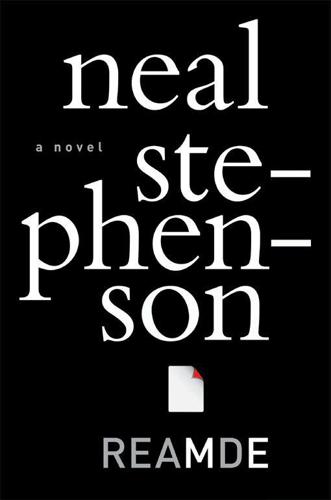
Reamde
by
Neal Stephenson
Published 19 Sep 2011
Wallace demanded. Upstairs, Zula was already reading about how it was possible. “It’s not just possible, it’s actually pretty easy, once your system has been rooted by a trojan,” Peter said. “This isn’t the first. People have been making malware that does this for a few years now. There’s a word for it: ‘ransomware.’” “I’ve never heard of it.” “It is hard to turn this kind of virus into a profitable operation,” Peter said, “because there has to be a financial transaction: the payment of the ransom. And that can be traced.” “I see,” Wallace said. “So if you’re in the malware business, there are easier ways to make money.”
…
Convince me of this,” Ivanov pleaded. “Make me believe.” ZULA TALKED FOR an hour. She explained the nature and history of computer viruses. Talked about the particular subclass of viruses that encrypted hard drives and held their contents for ransom. About the difficulties of making money from ransomware. Explained the innovation that the unknown, anonymous creators of the REAMDE virus had apparently come up with. Ivanov had never heard of massively multiplayer online role-playing games, or MMORPGs, so she told him all about their history, their technology, their sociology, their growth as a major sector of the entertainment industry.
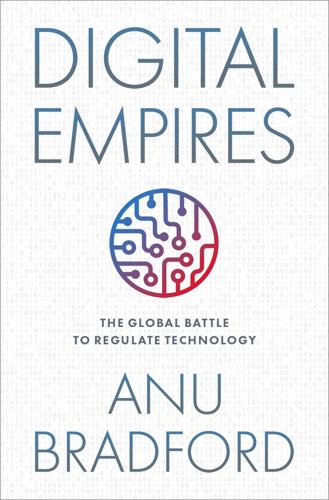
Digital Empires: The Global Battle to Regulate Technology
by
Anu Bradford
Published 25 Sep 2023
Jack Goldsmith and Stuart Russel have argued that many virtues of the US model—including its commitment to free speech, rule of law, and limited government regulation—have become vulnerabilities that malicious actors, in particular authoritarian foreign adversaries, can exploit.188 This, in part, explains why the US has been a frequent victim of cyber operations such as cyberespionage, cybertheft, information operations, ransomware attacks, and other so-called soft cyber operations. For example, the success of US tech companies also entails that the US is the most attractive target for cyber operations. There are simply more valuable trade secrets and intellectual property to steal, creating an asymmetric vulnerability for the US.

Artificial Intelligence: A Modern Approach
by
Stuart Russell
and
Peter Norvig
Published 14 Jul 2019
China and other countries have begun exporting surveillance technology to low-tech countries, some with reputations for mistreating their citizens and disproportionately targeting marginalized communities. AI engineers should be clear on what uses of surveillance are compatible with human rights, and decline to work on applications that are incompatible. As more of our institutions operate online, we become more vulnerable to cybercrime (phishing, credit card fraud, botnets, ransomware) and cyberterrorism (including potentially deadly attacks such as shutting down hospitals and power plants or commandeering selfdriving cars). Machine learning can be a powerful tool for both sides in the cybersecurity battle. Attackers can use automation to probe for insecurities and they can apply reinforcement learning for phishing attempts and automated blackmail.